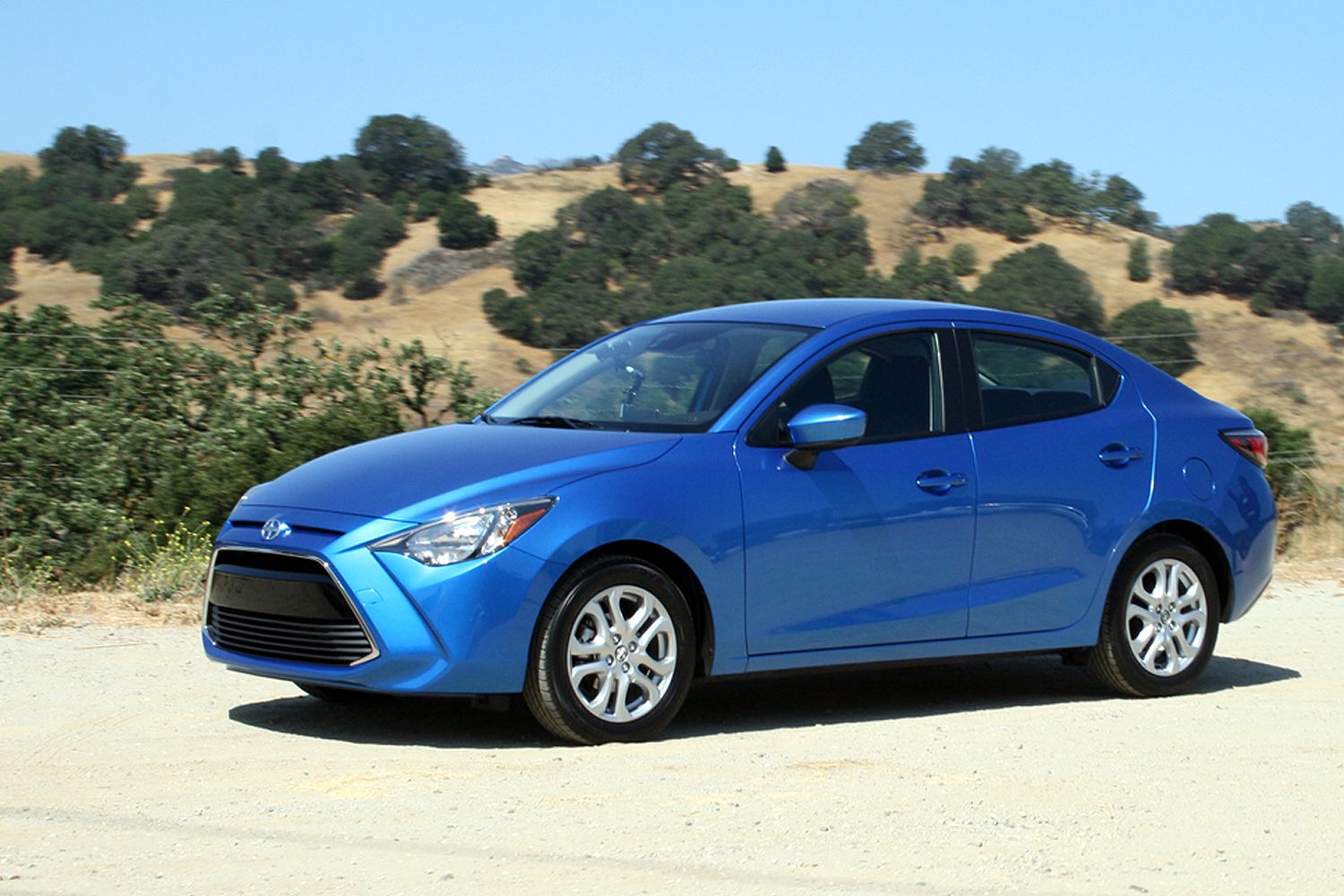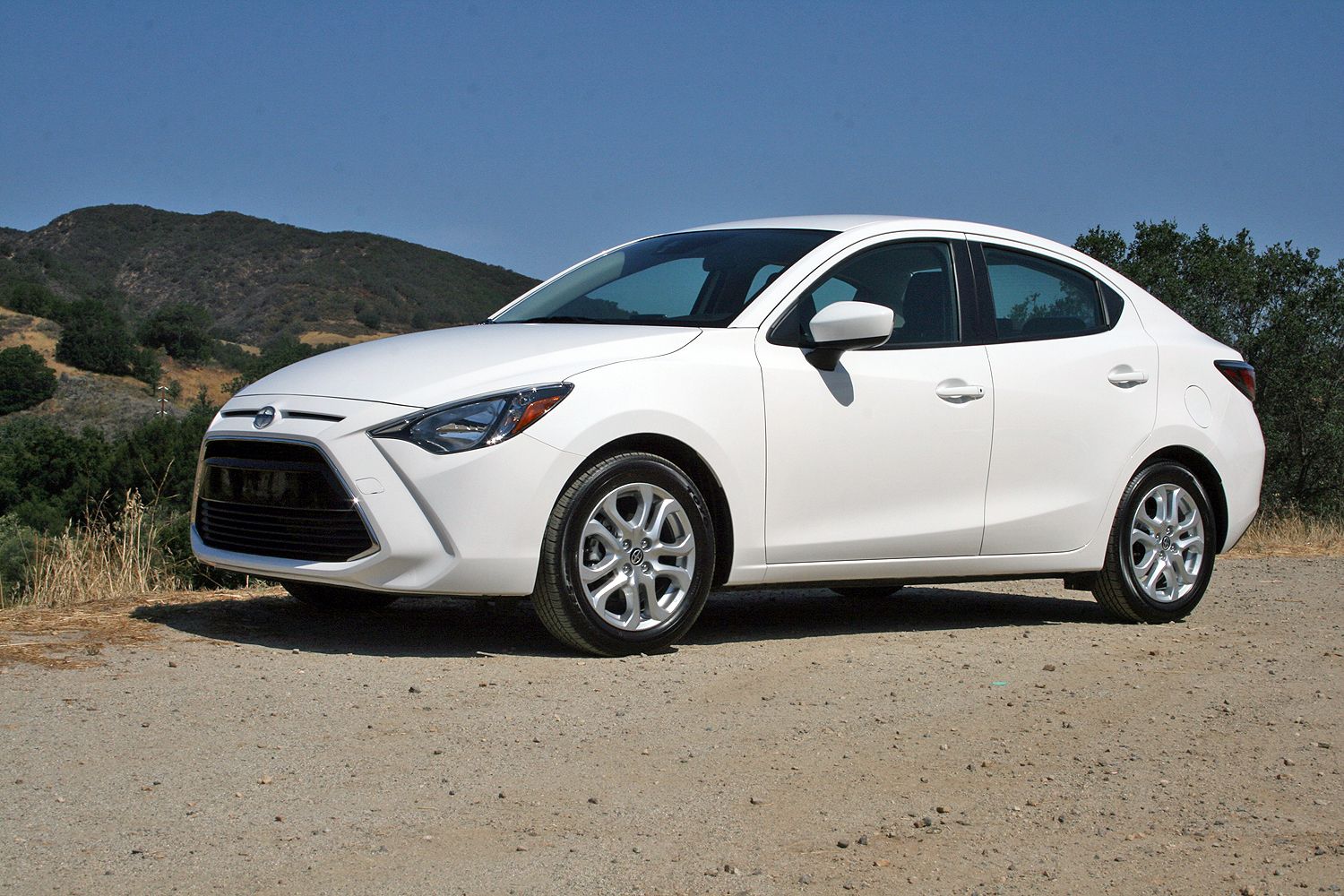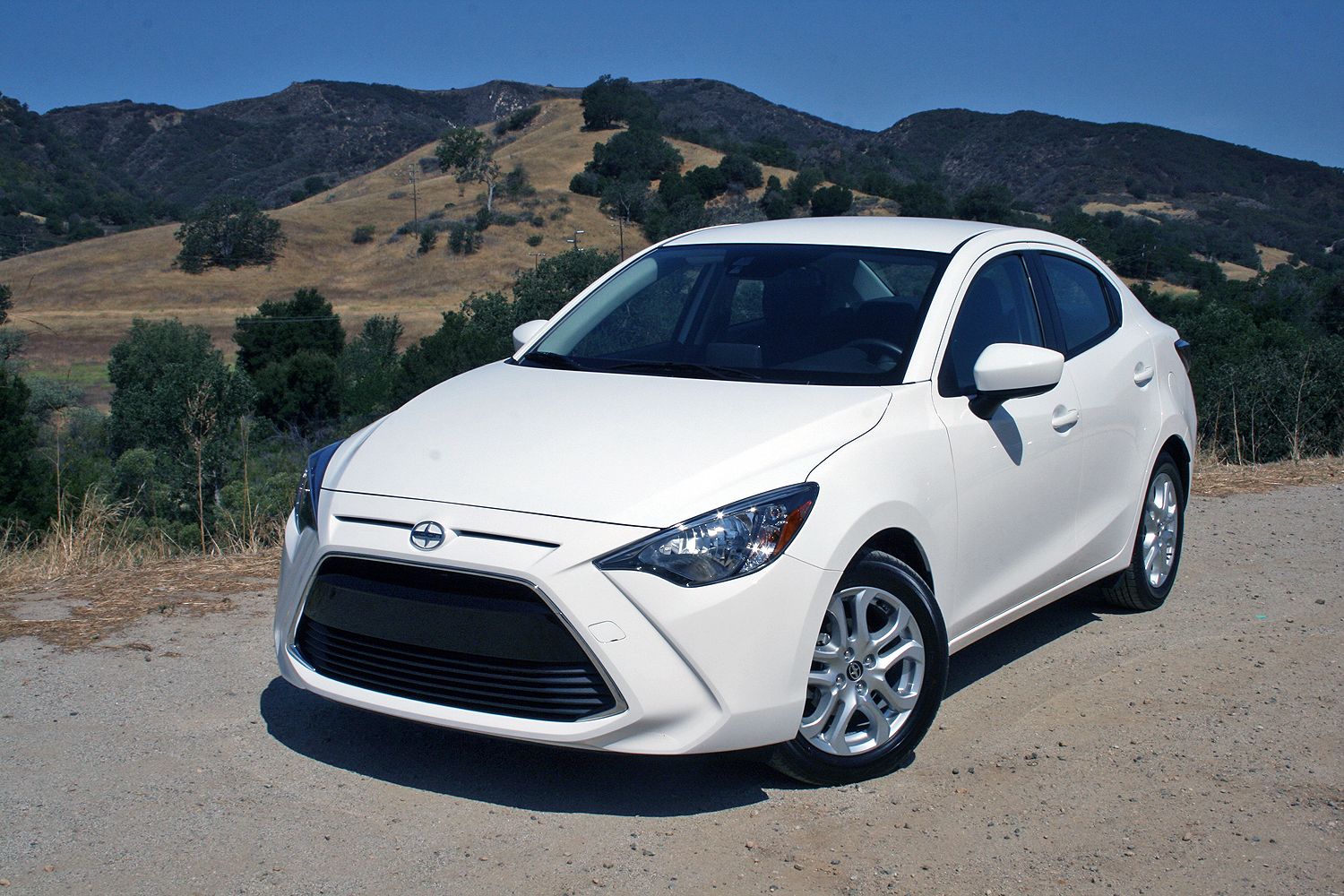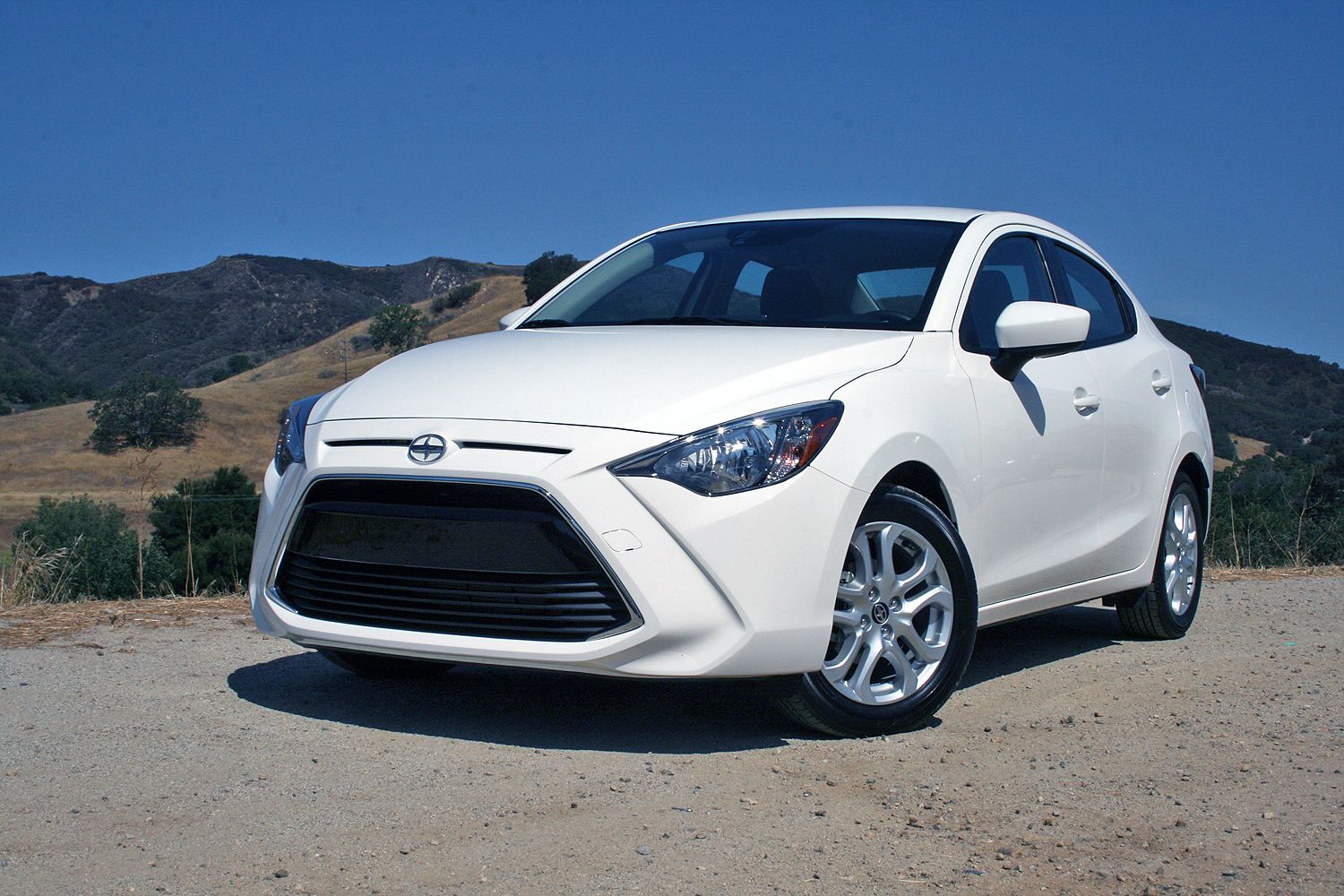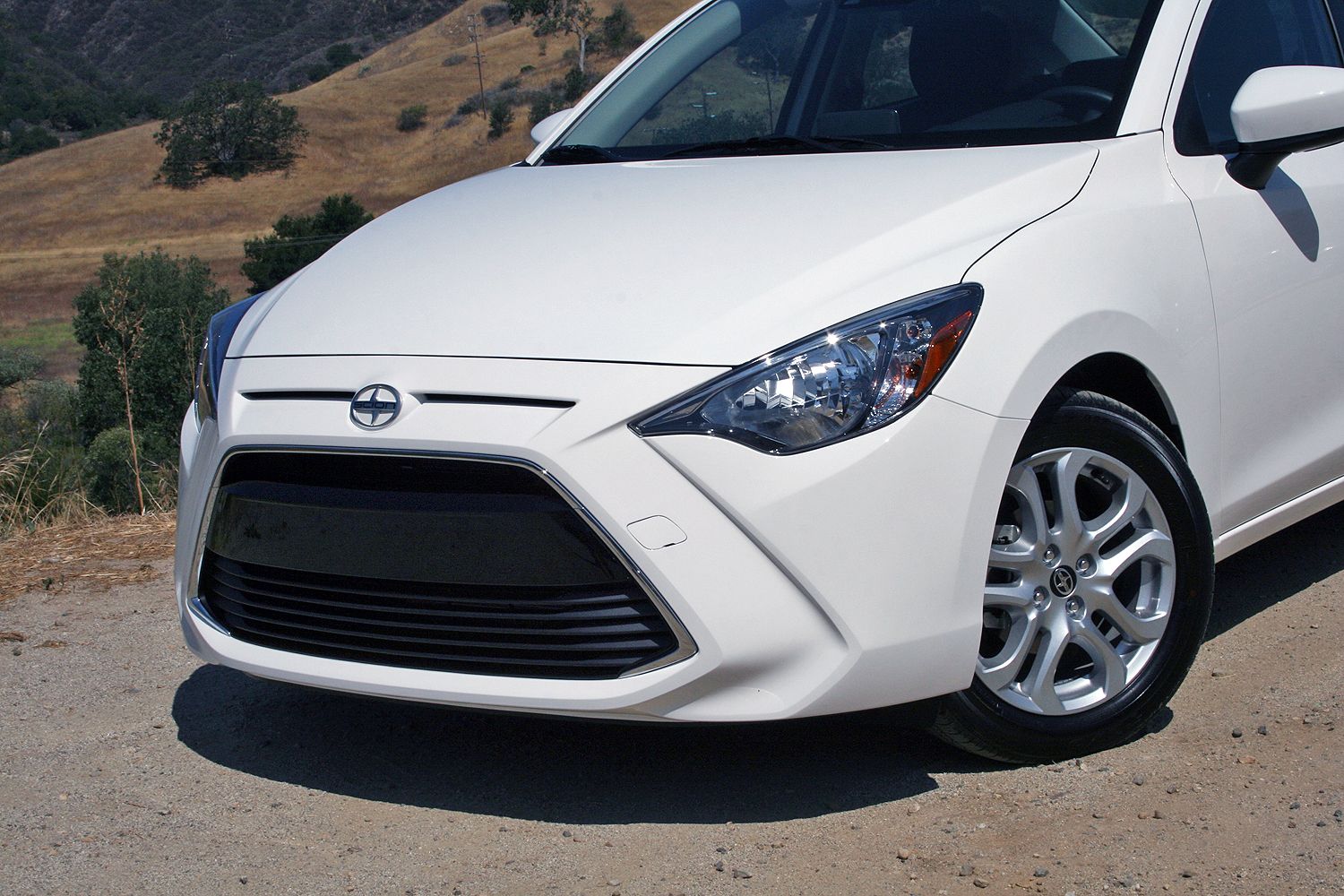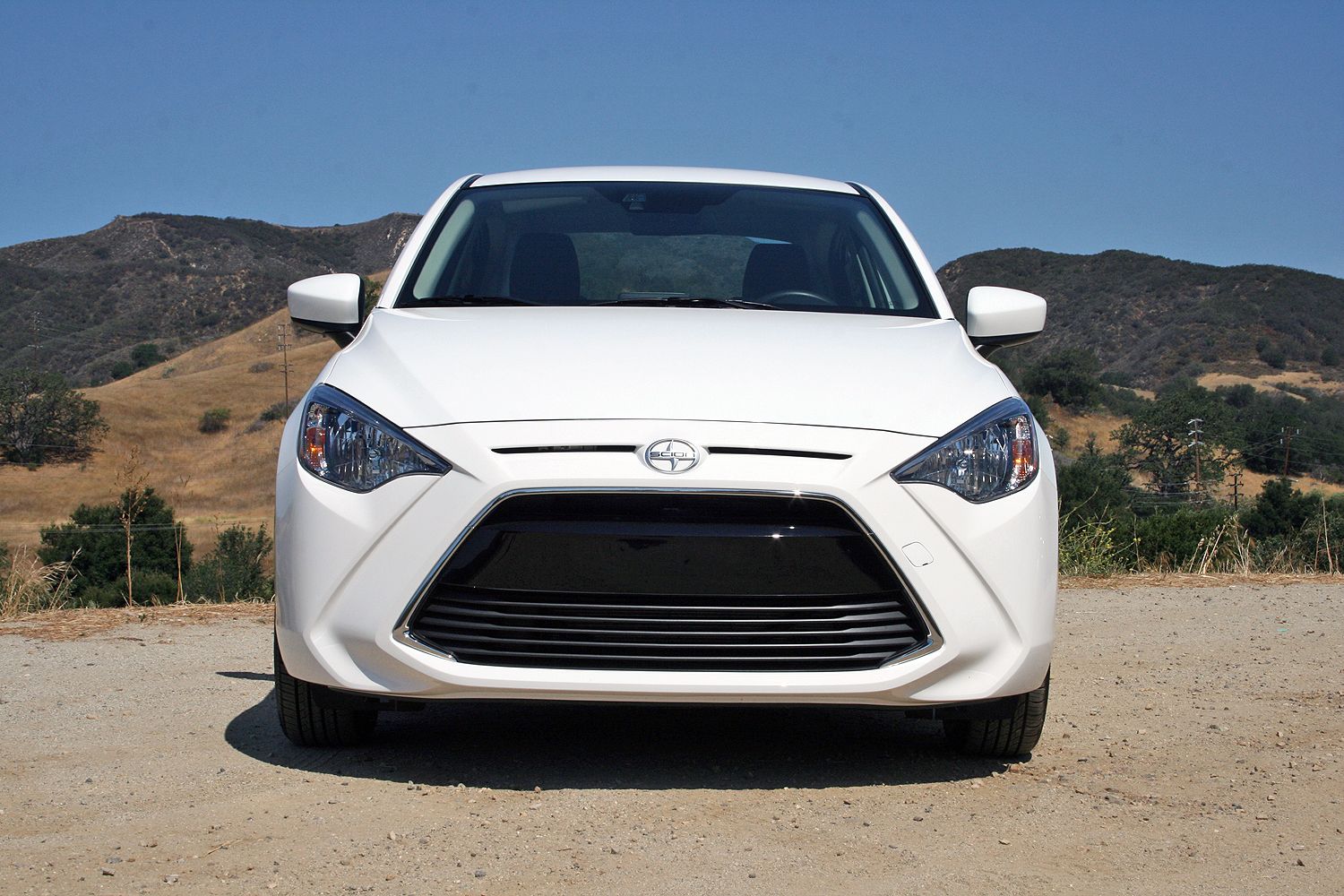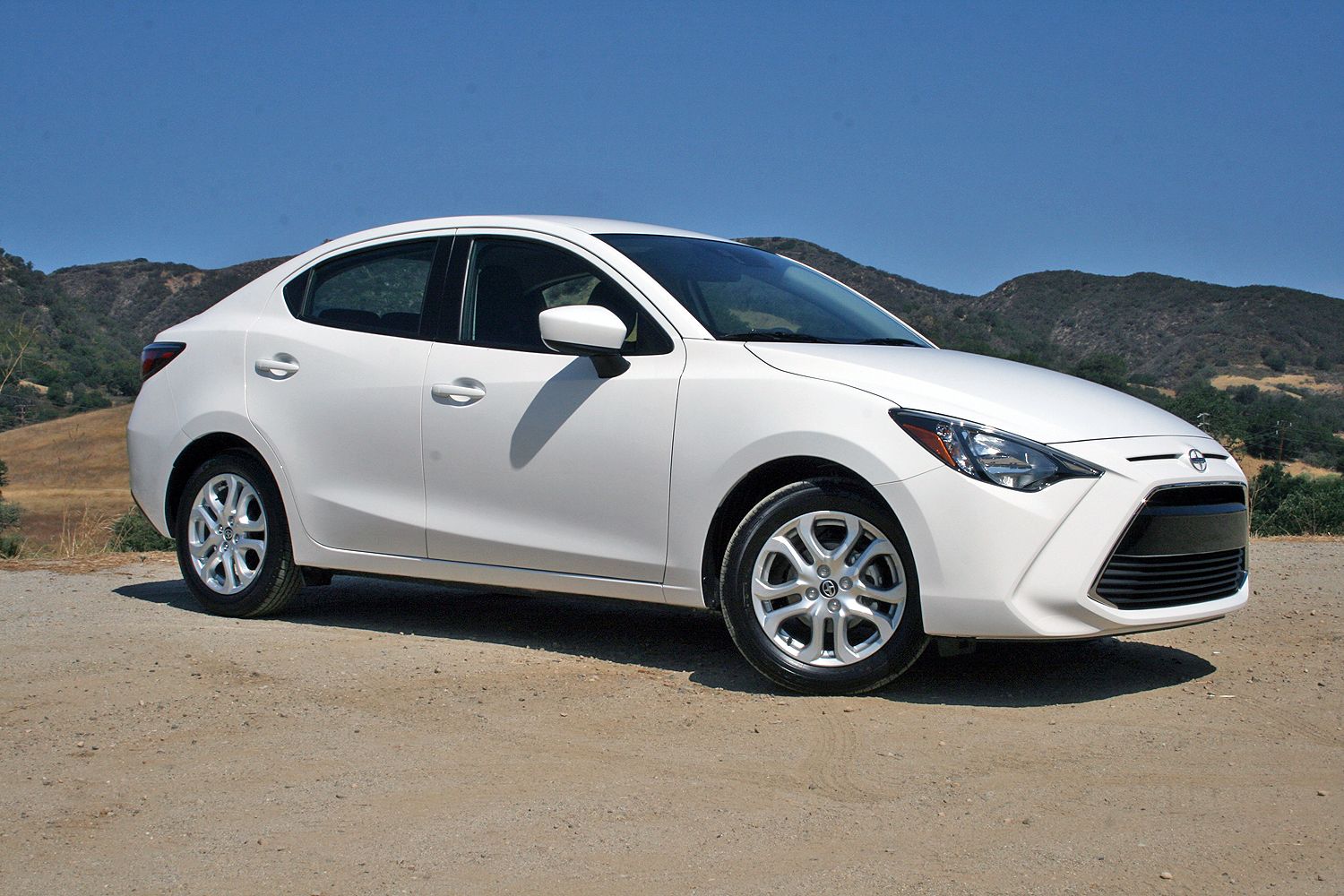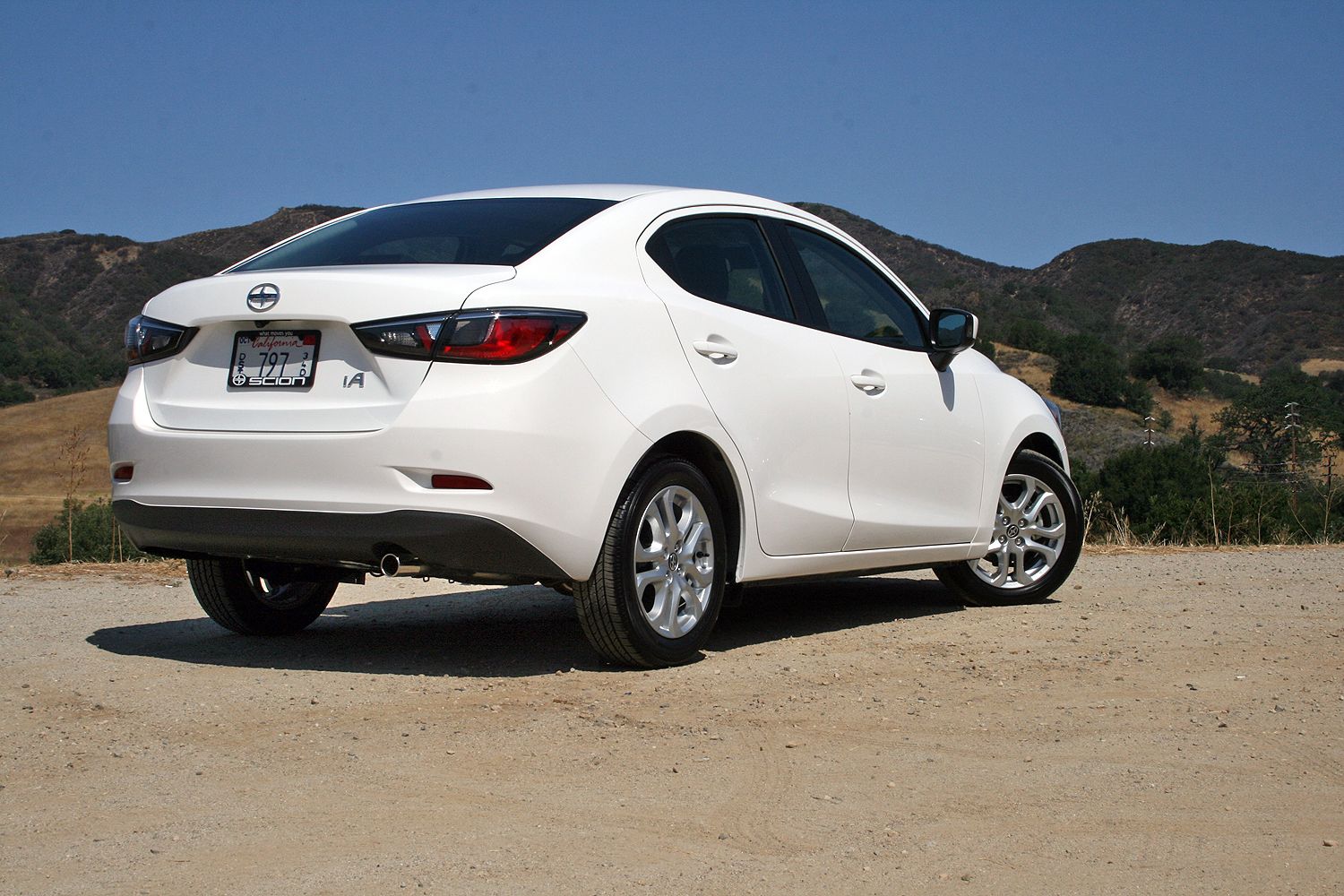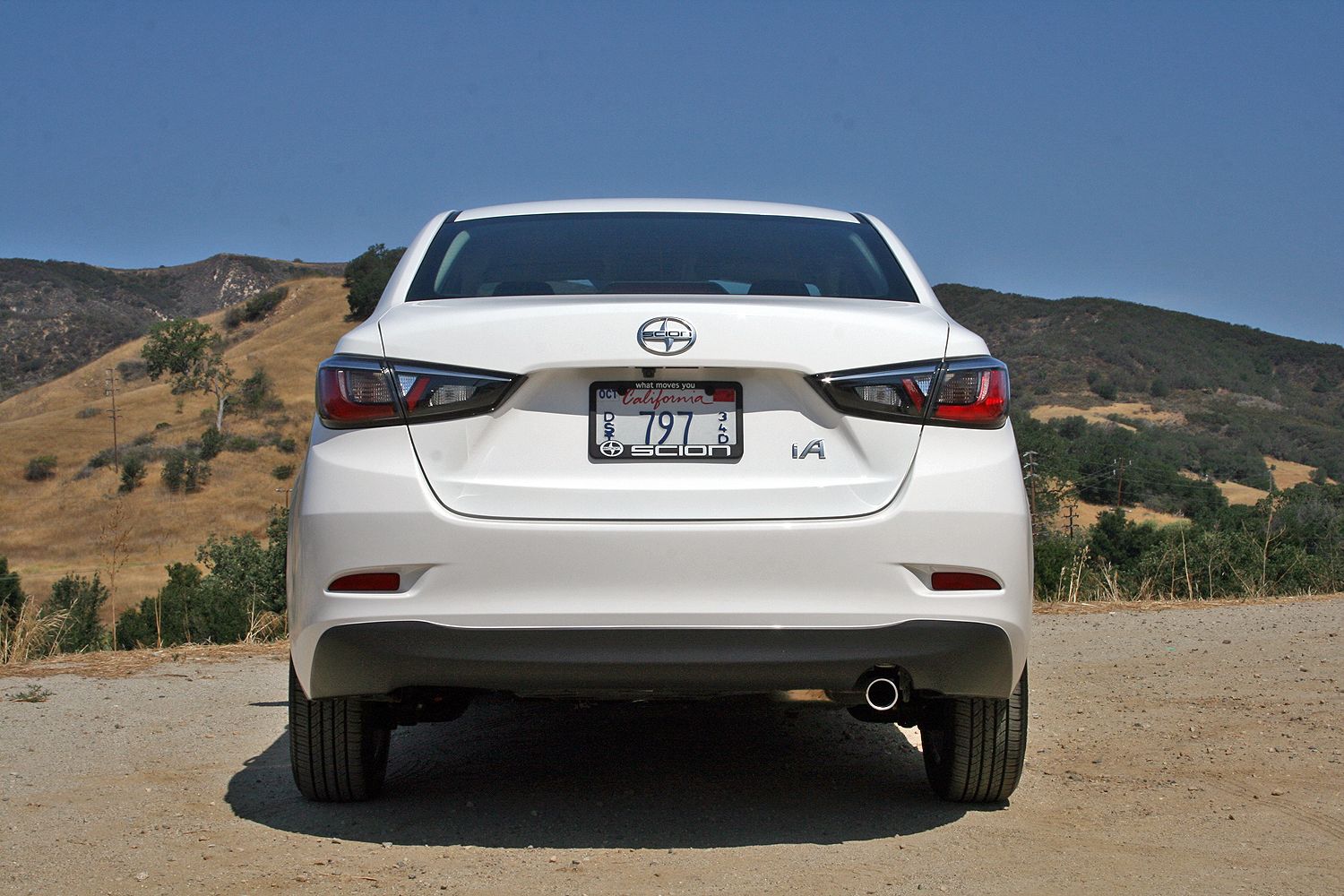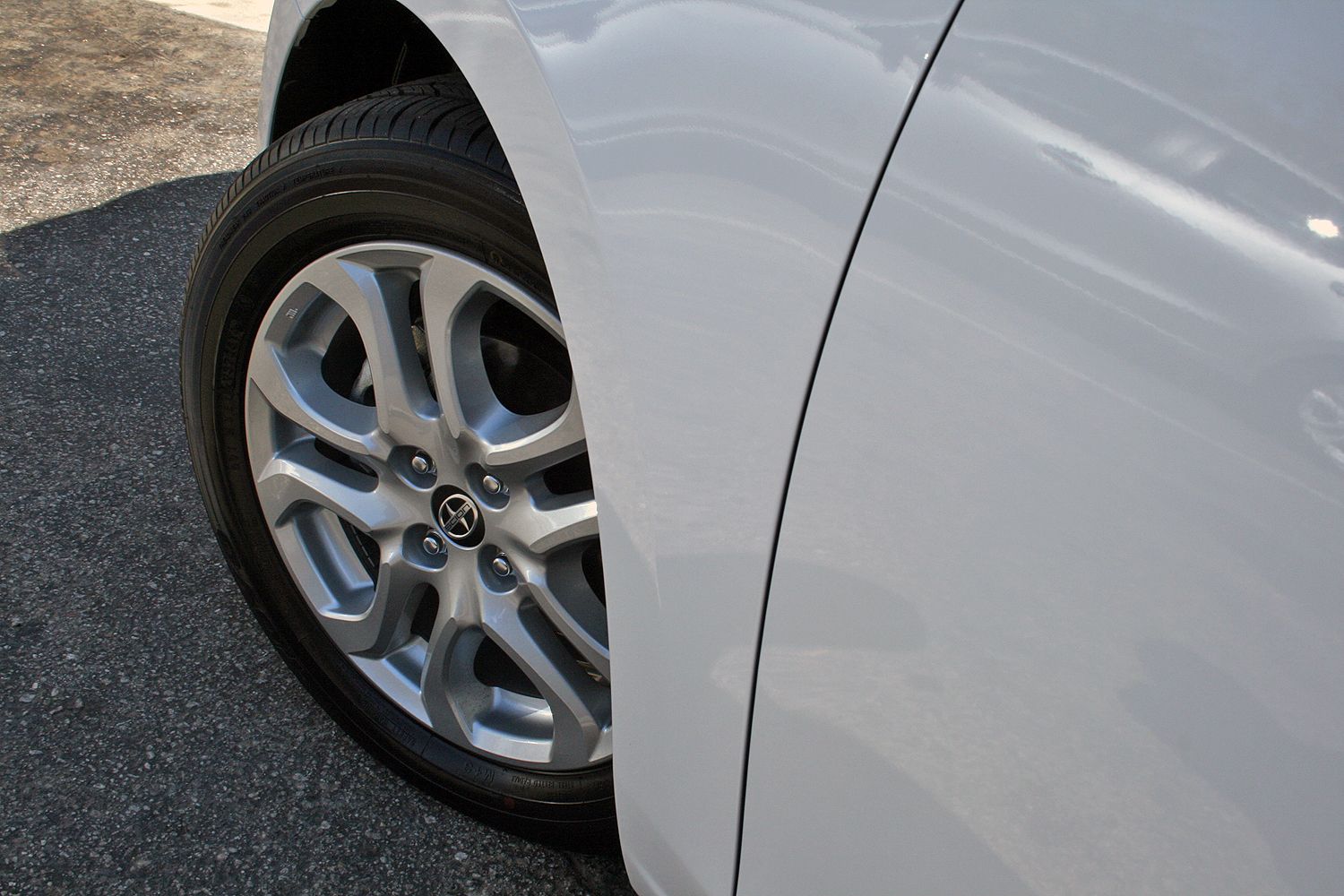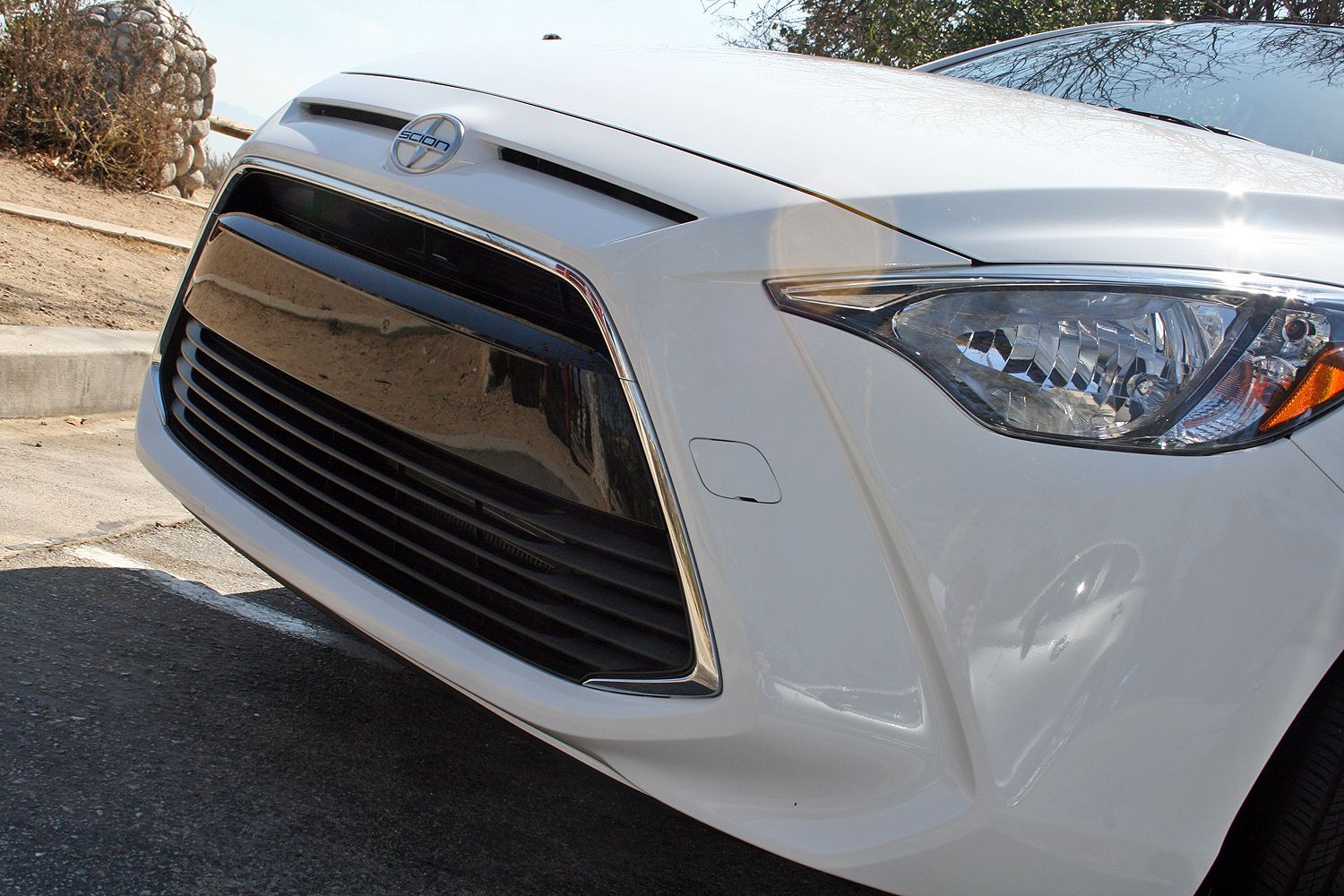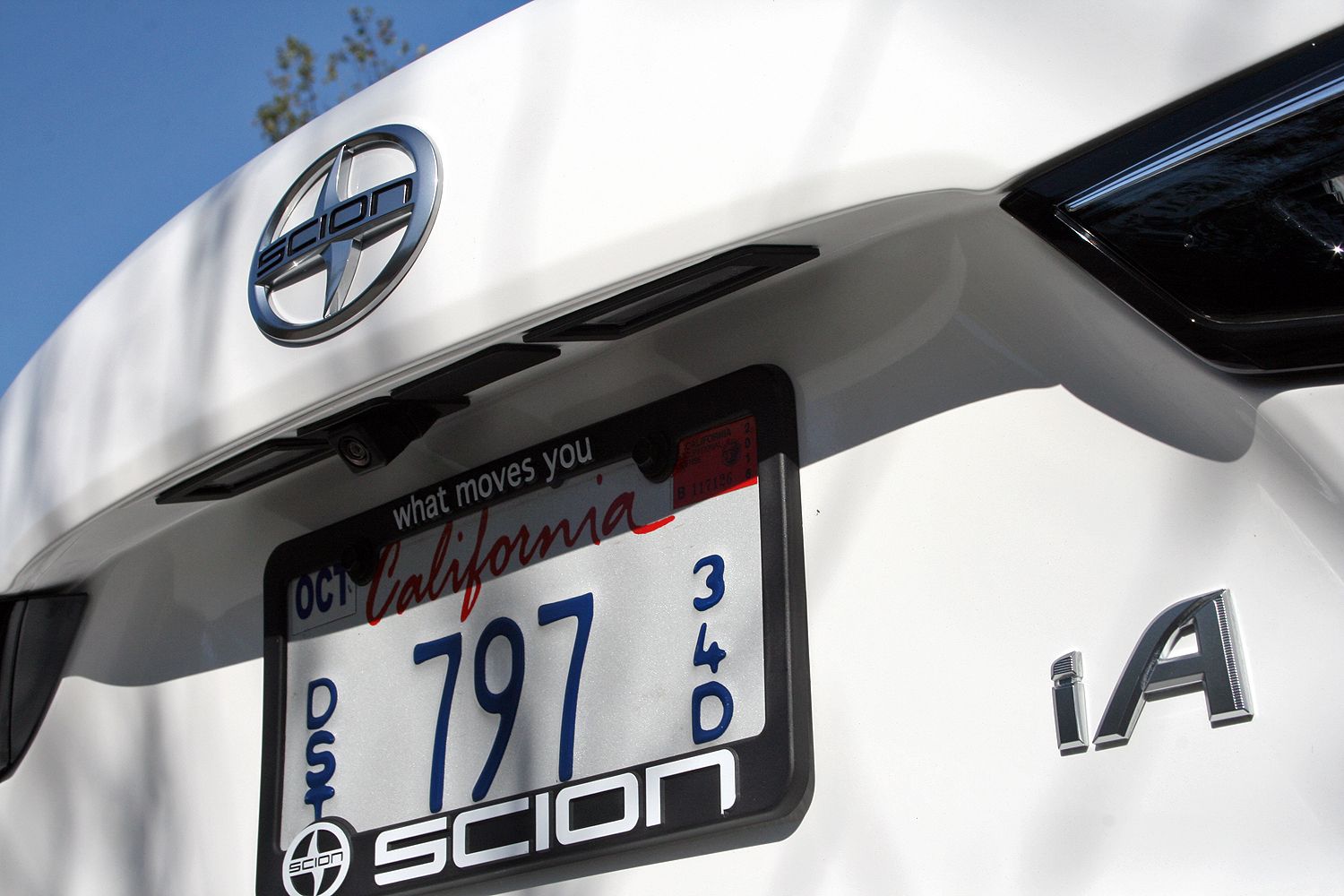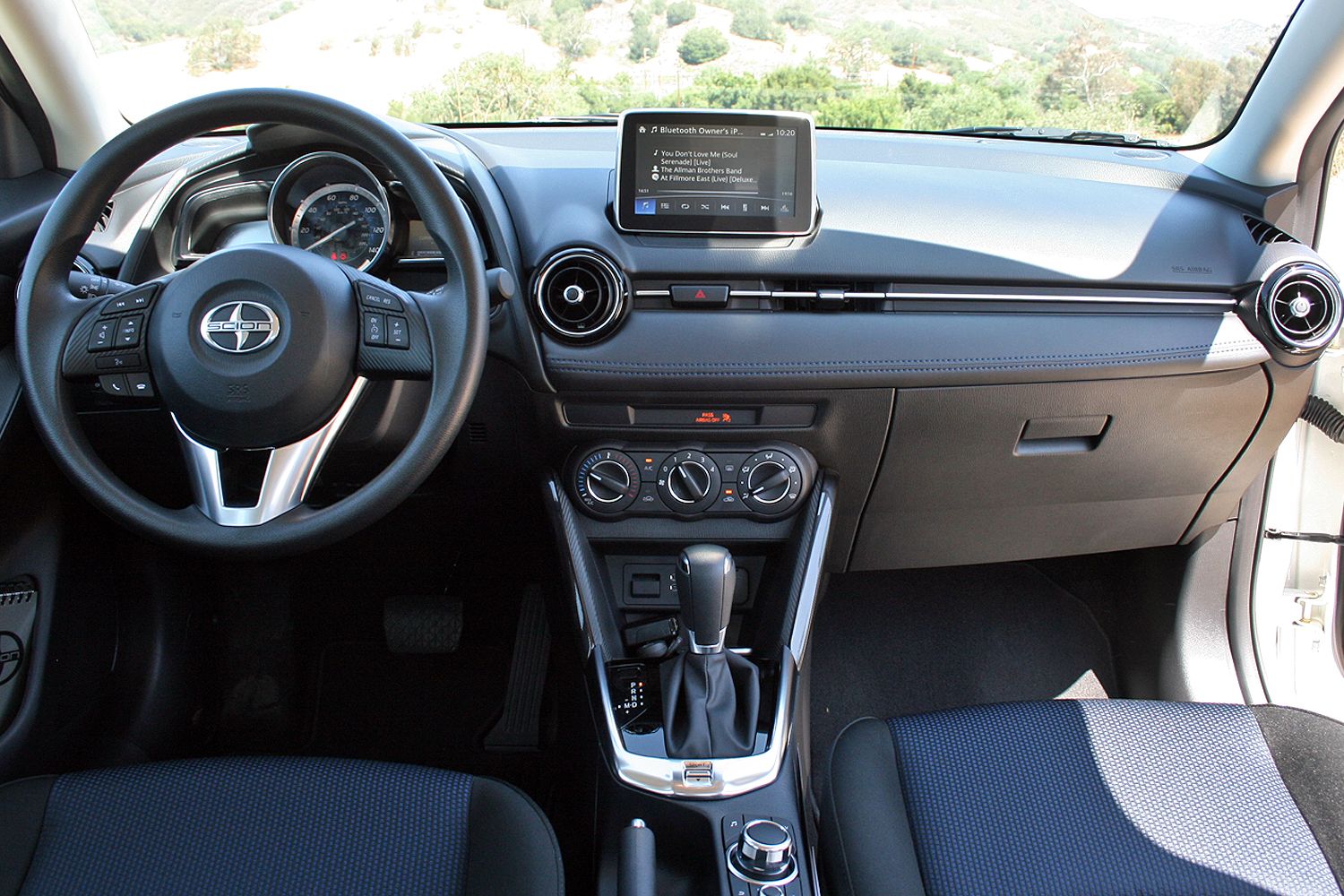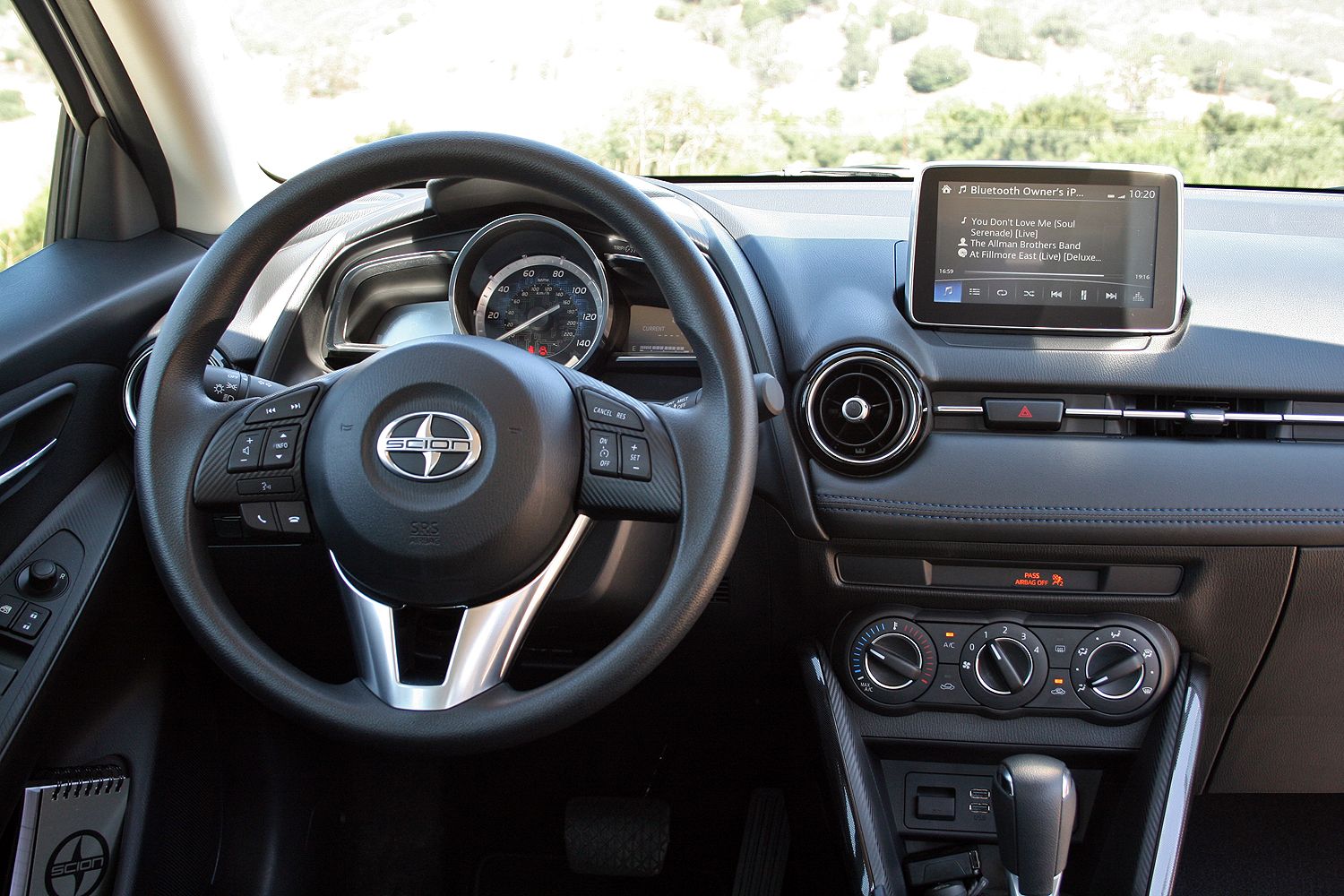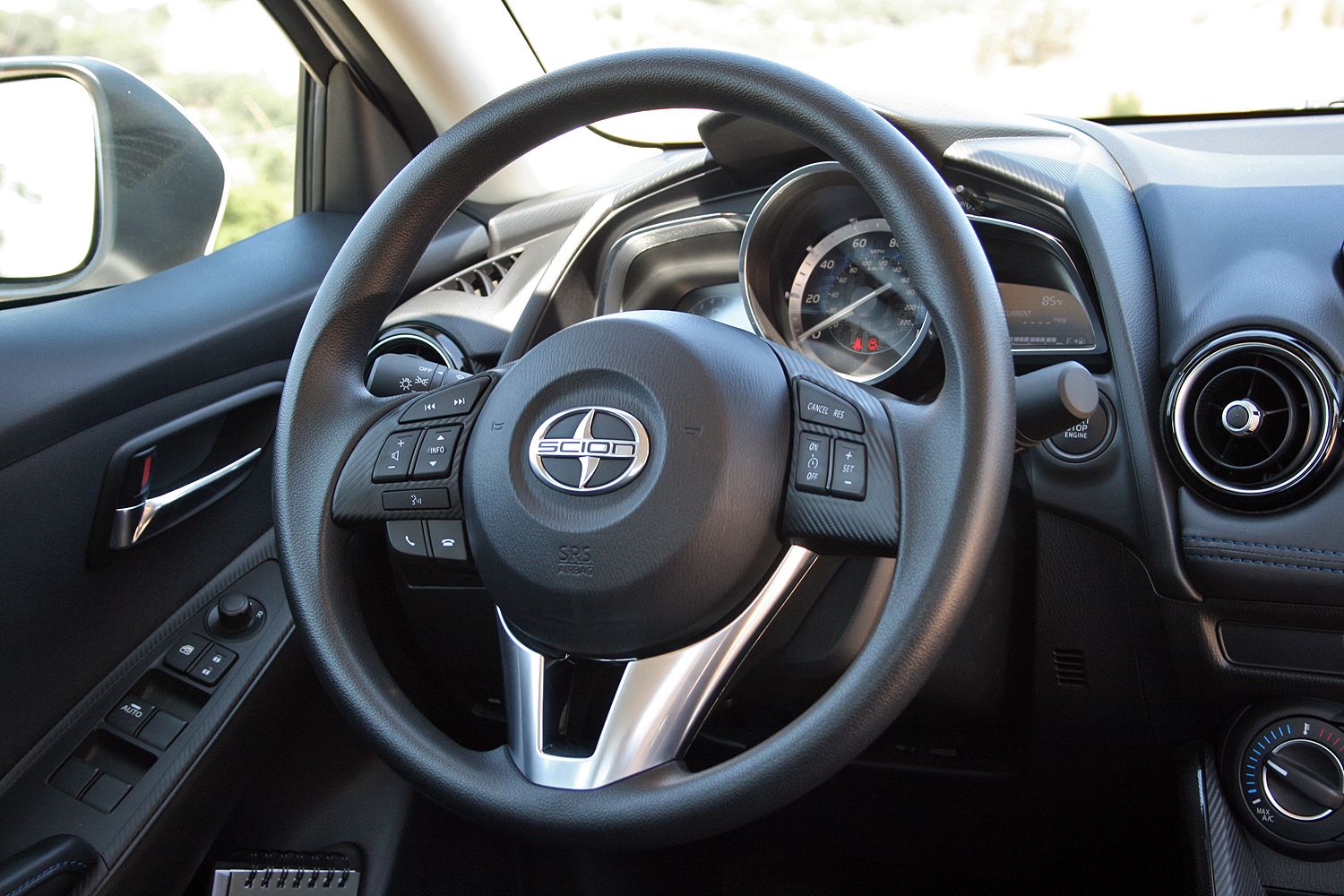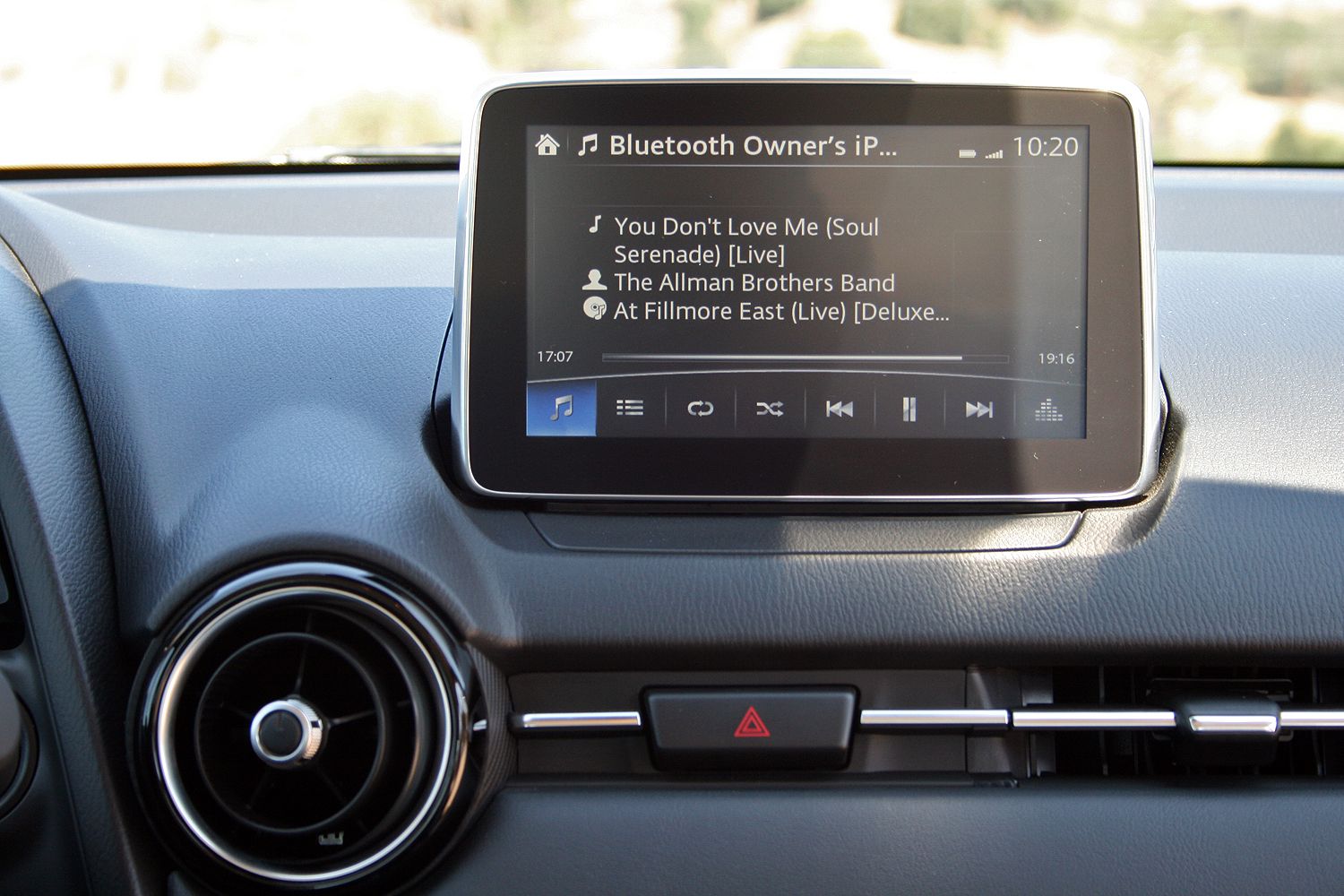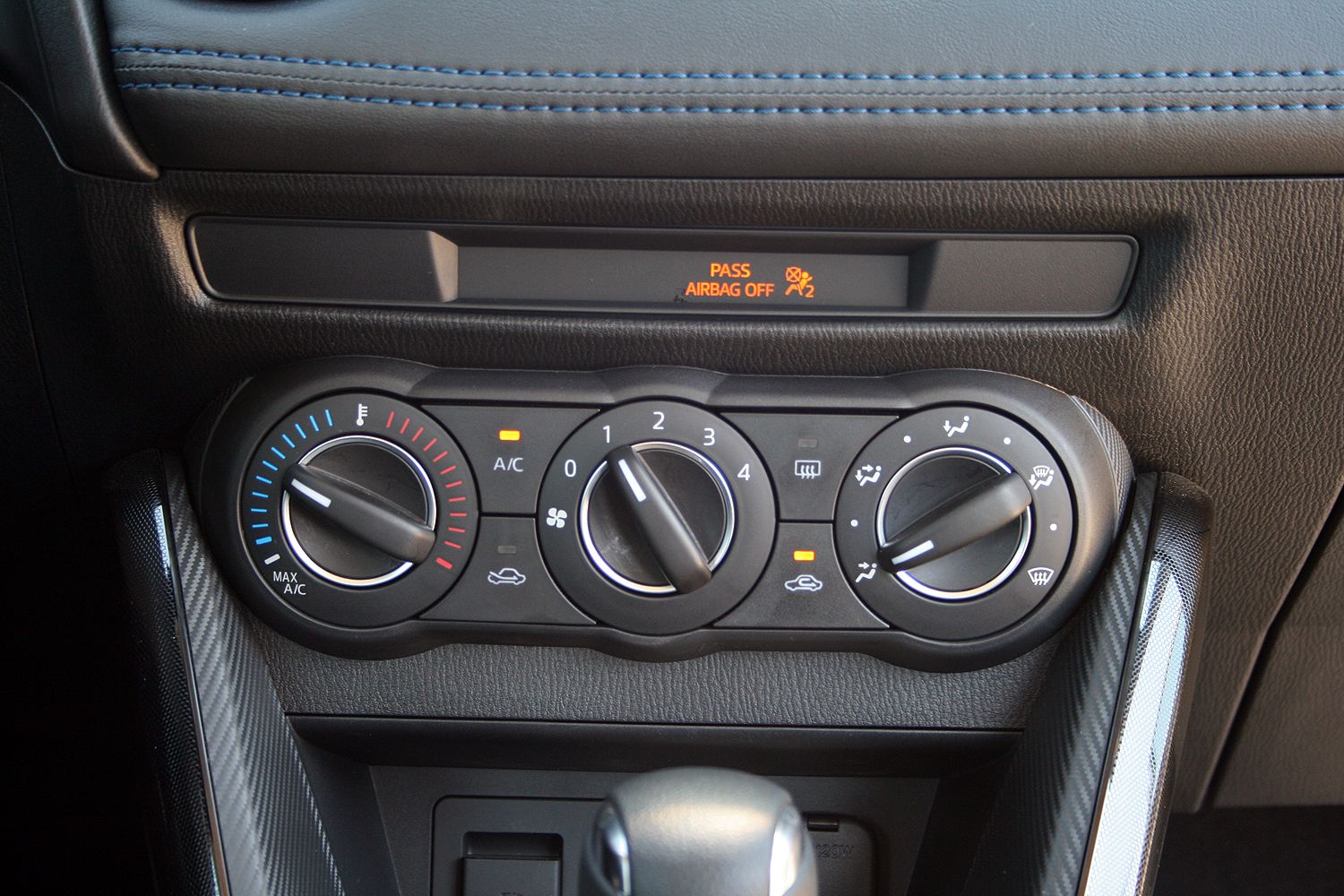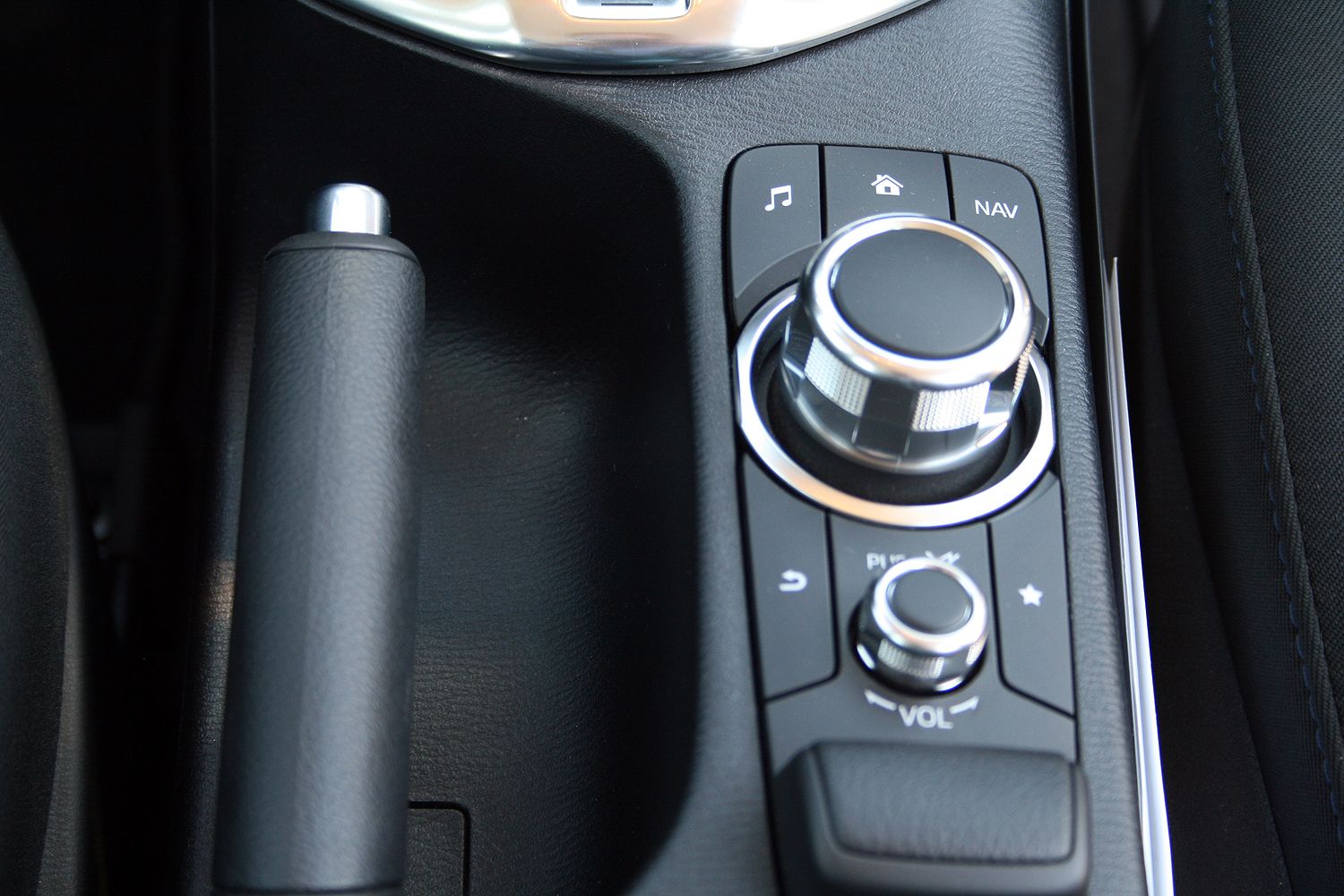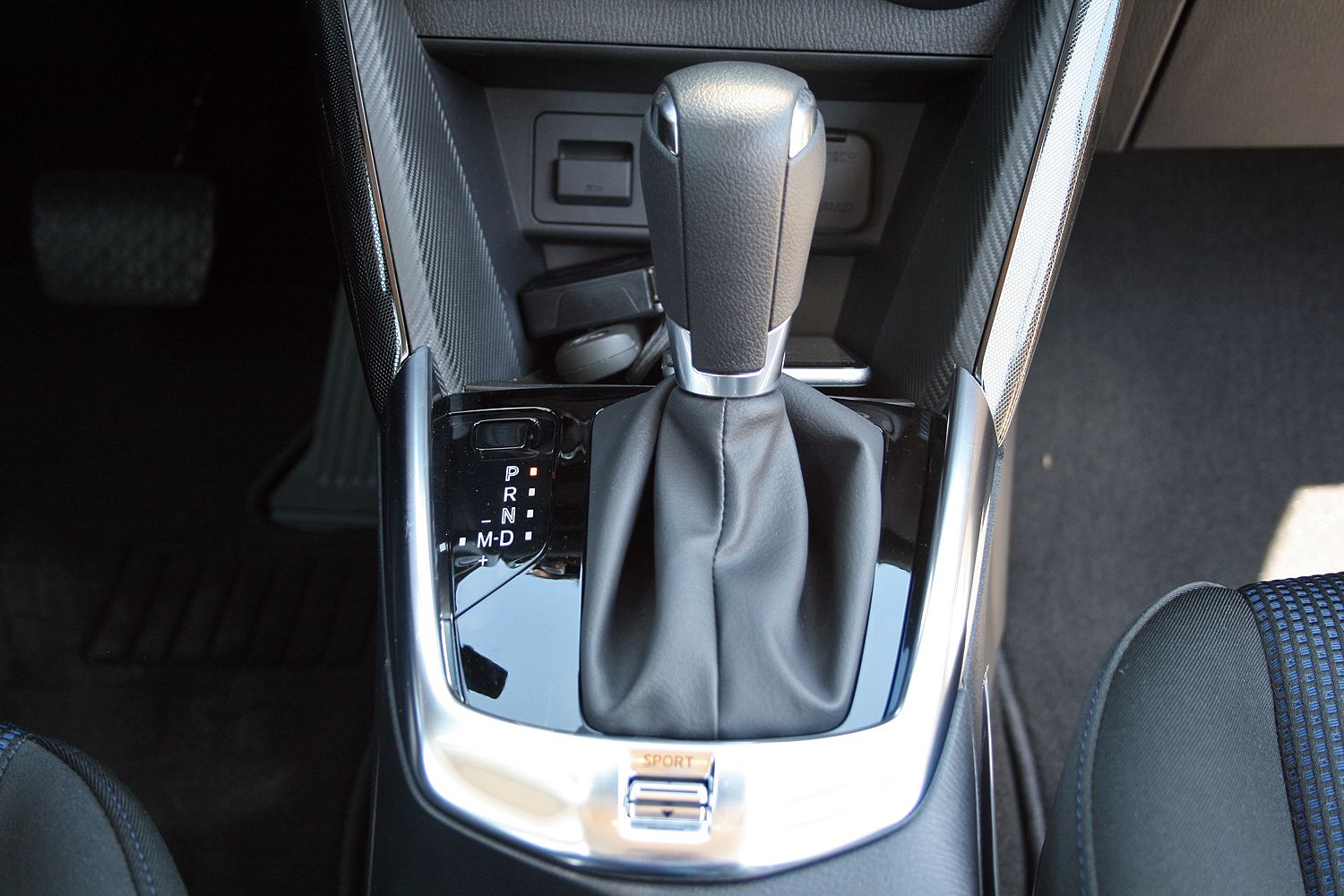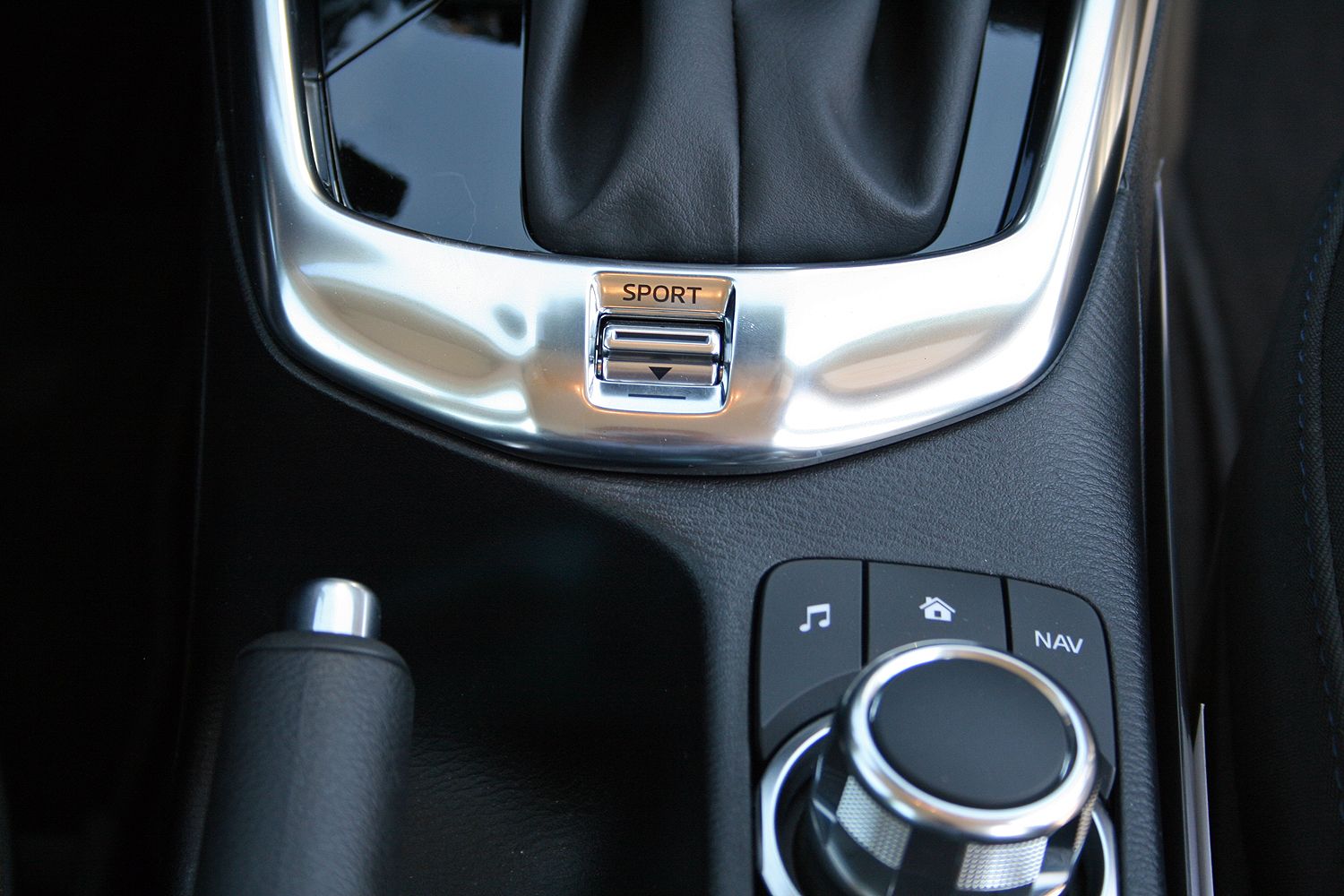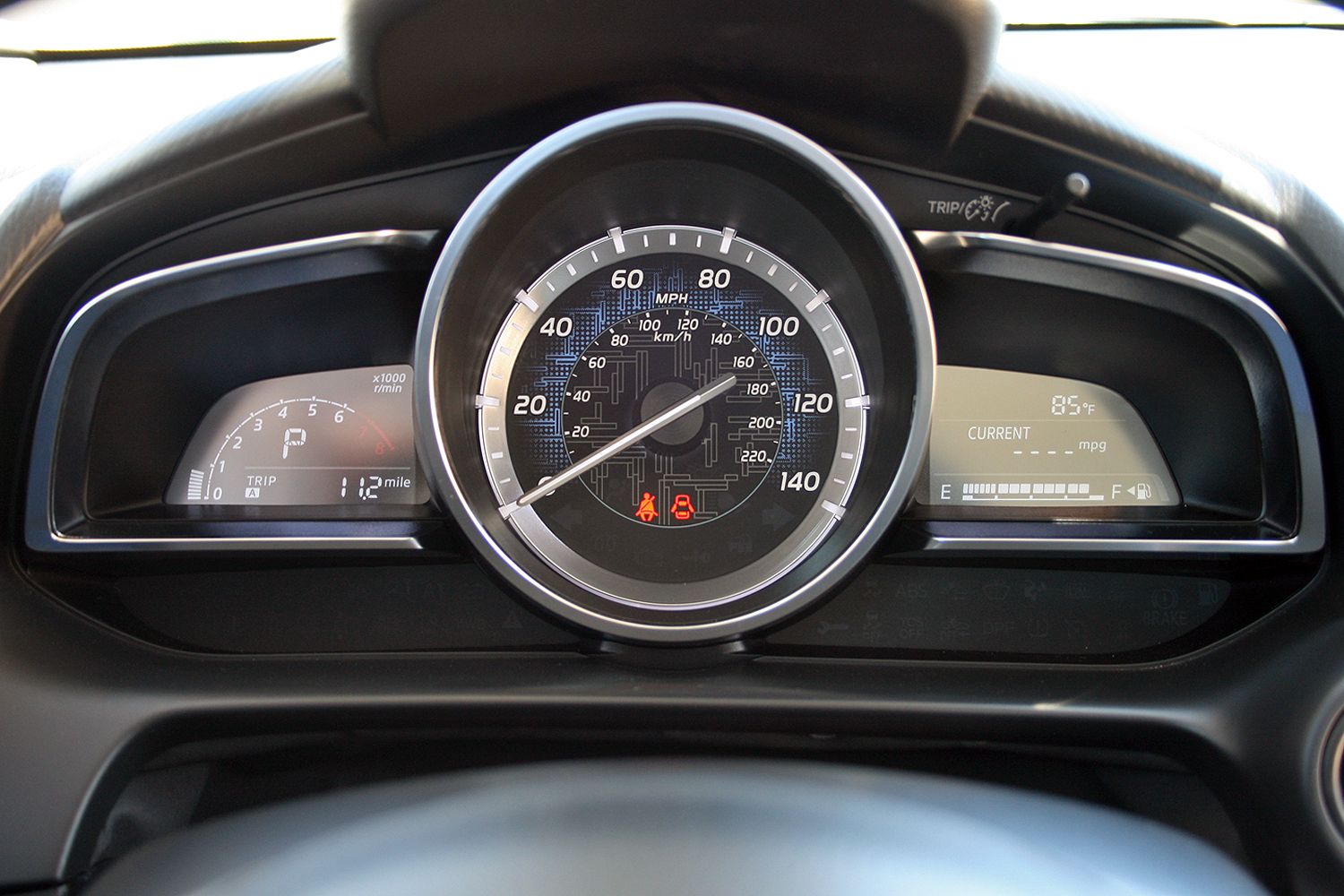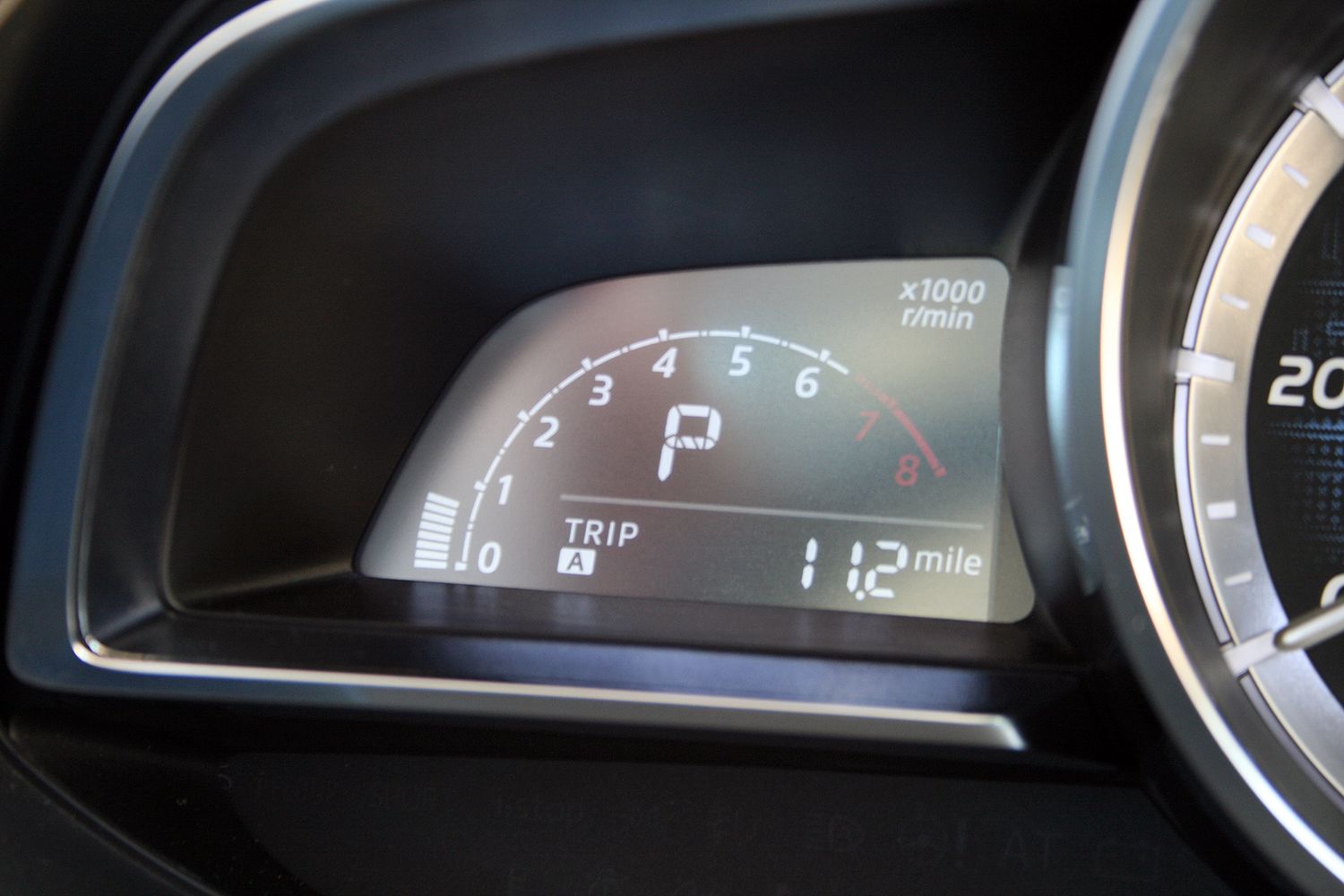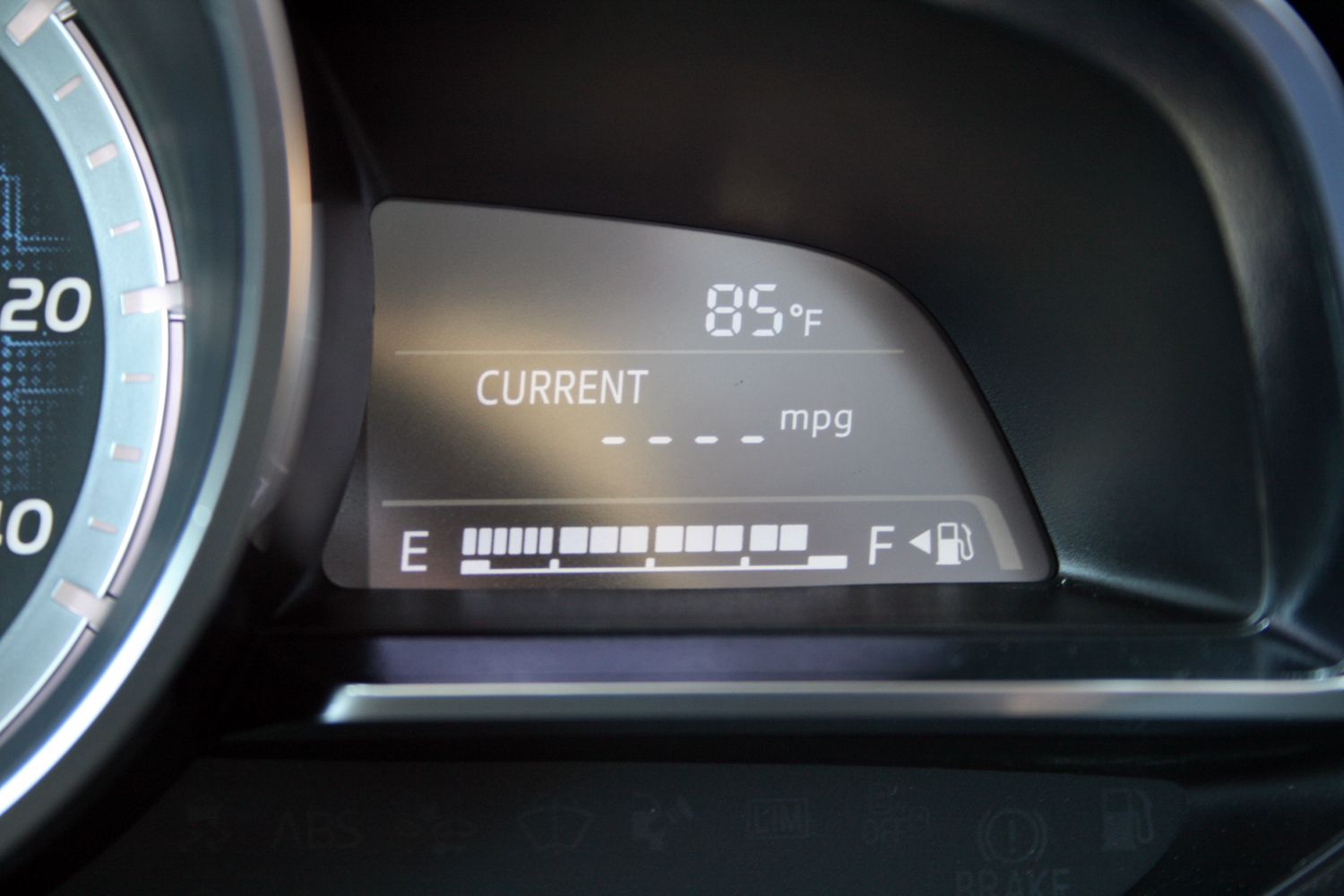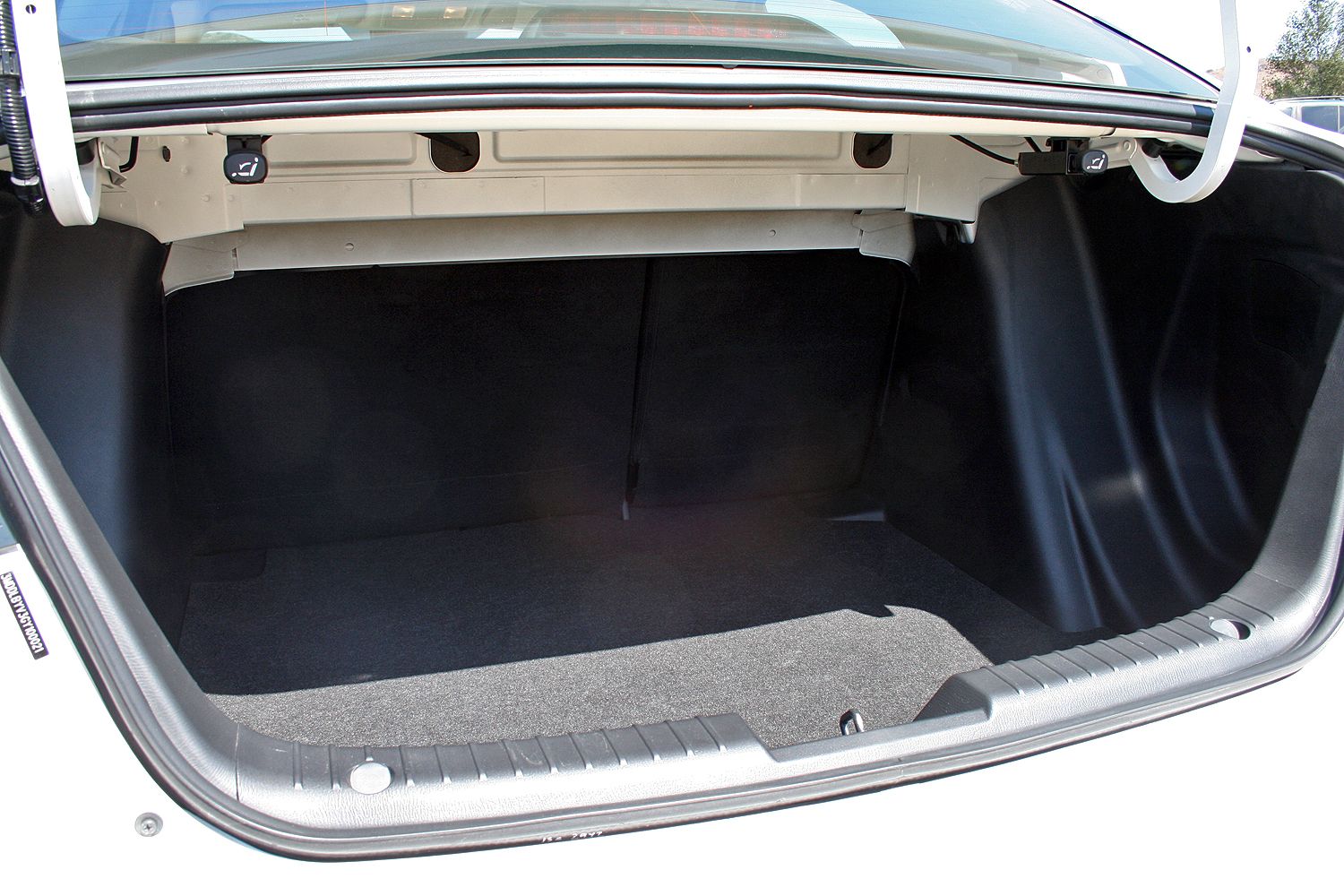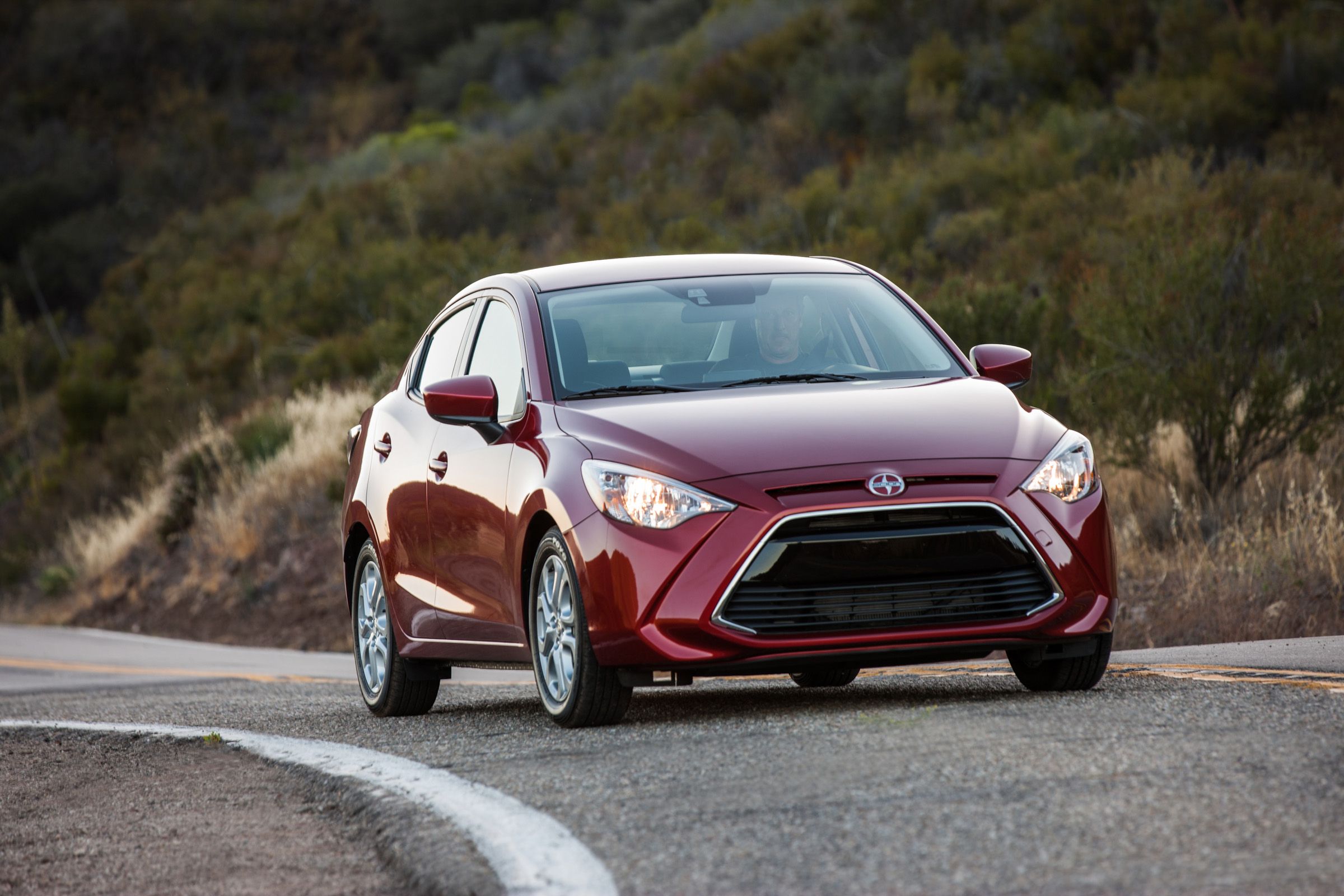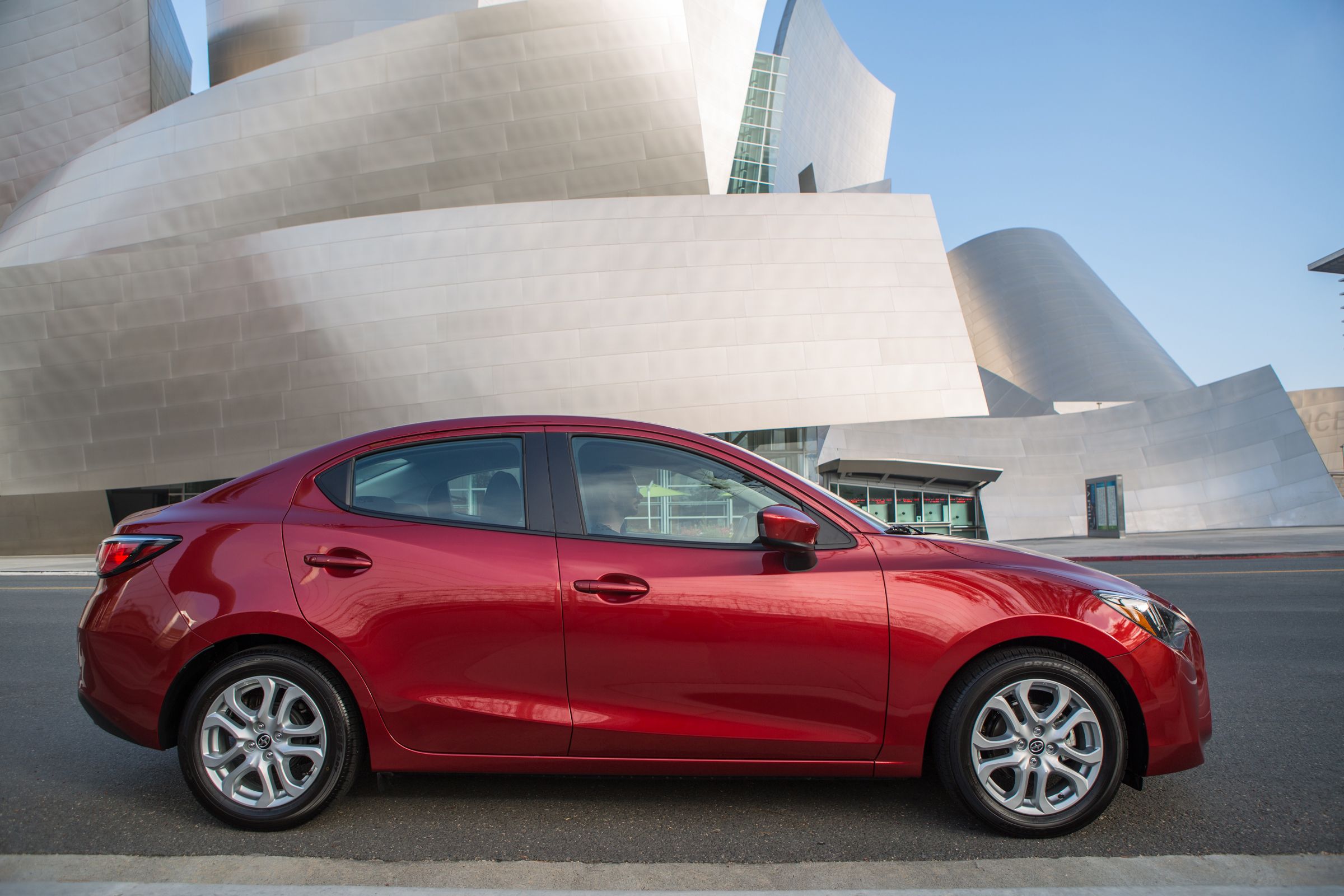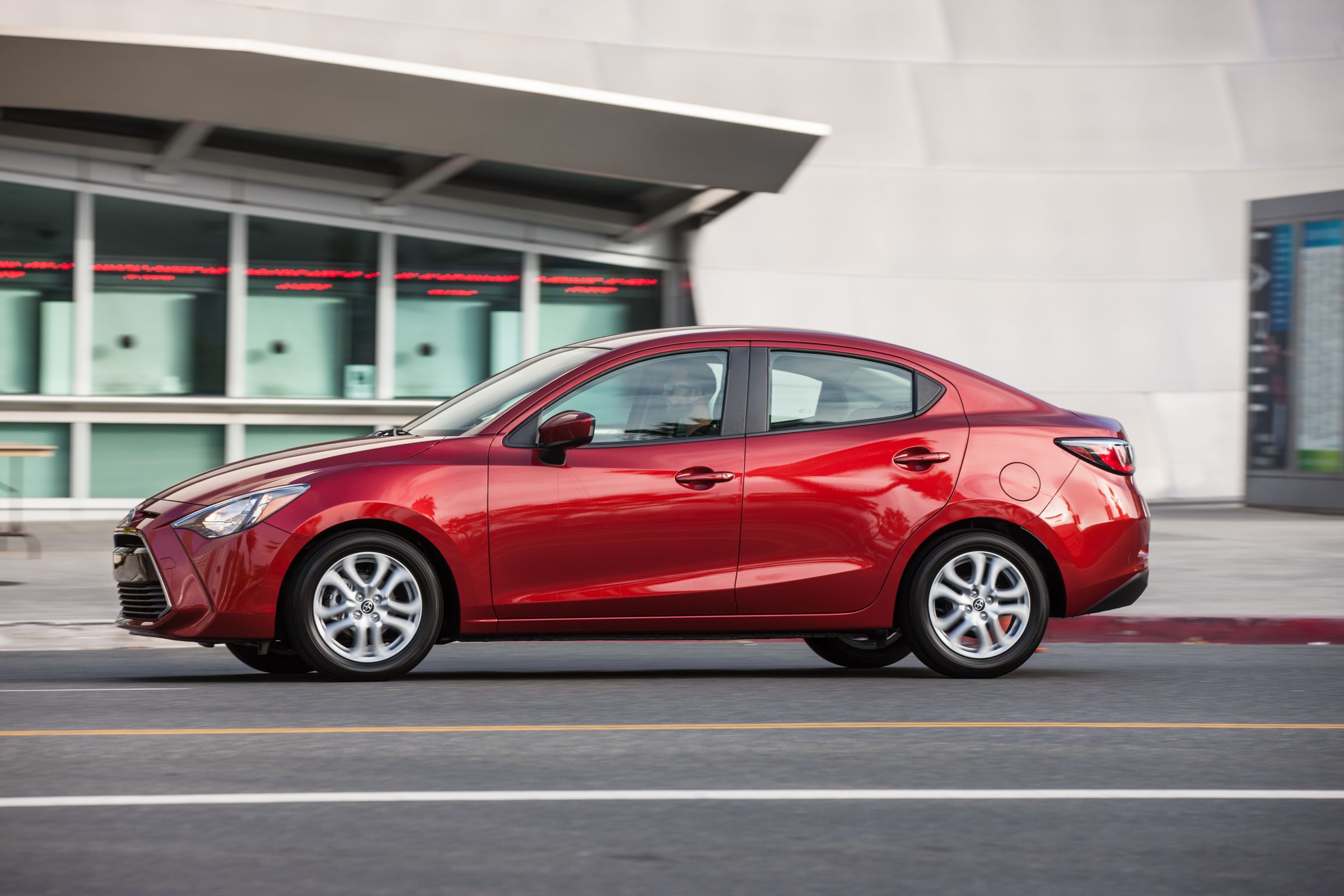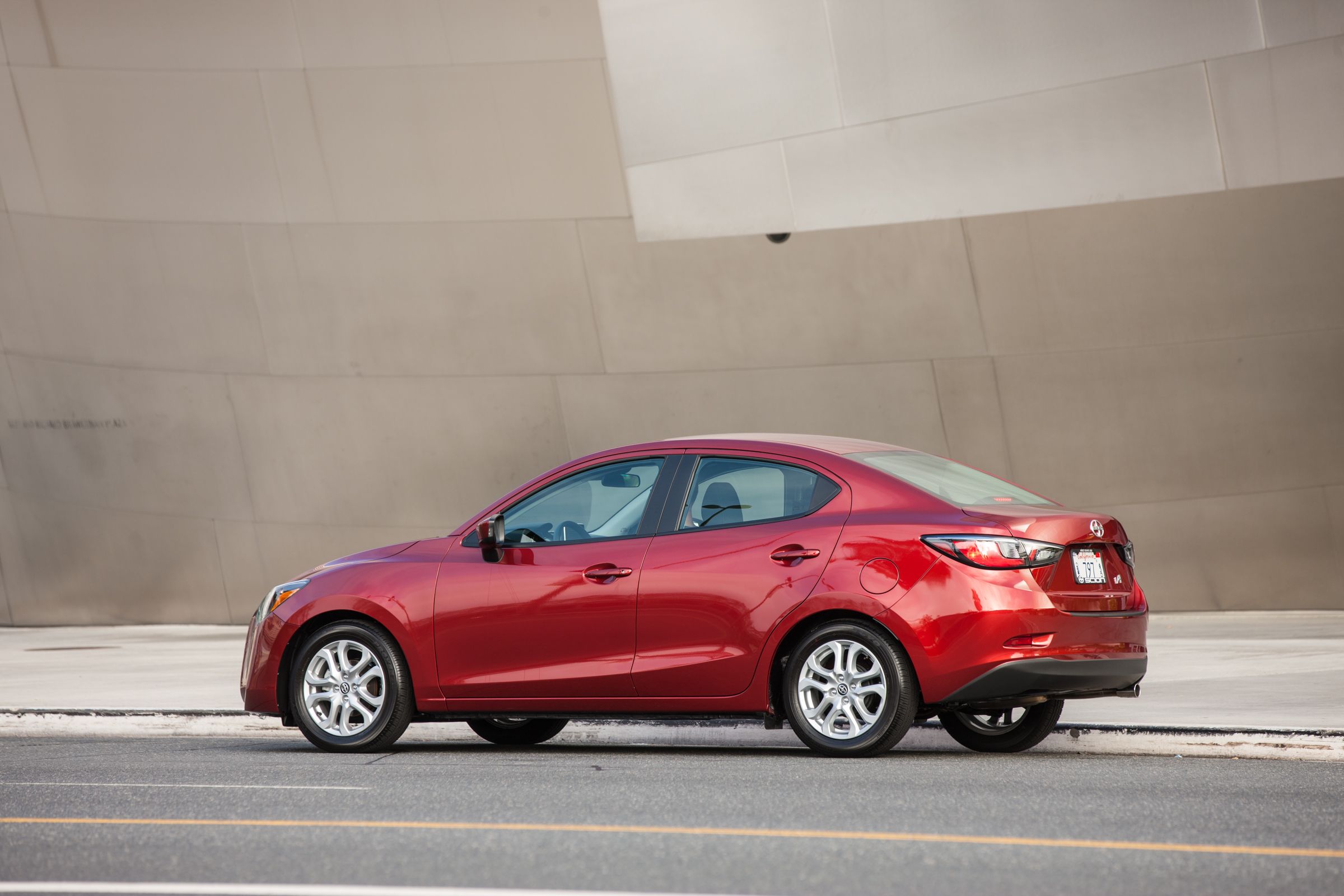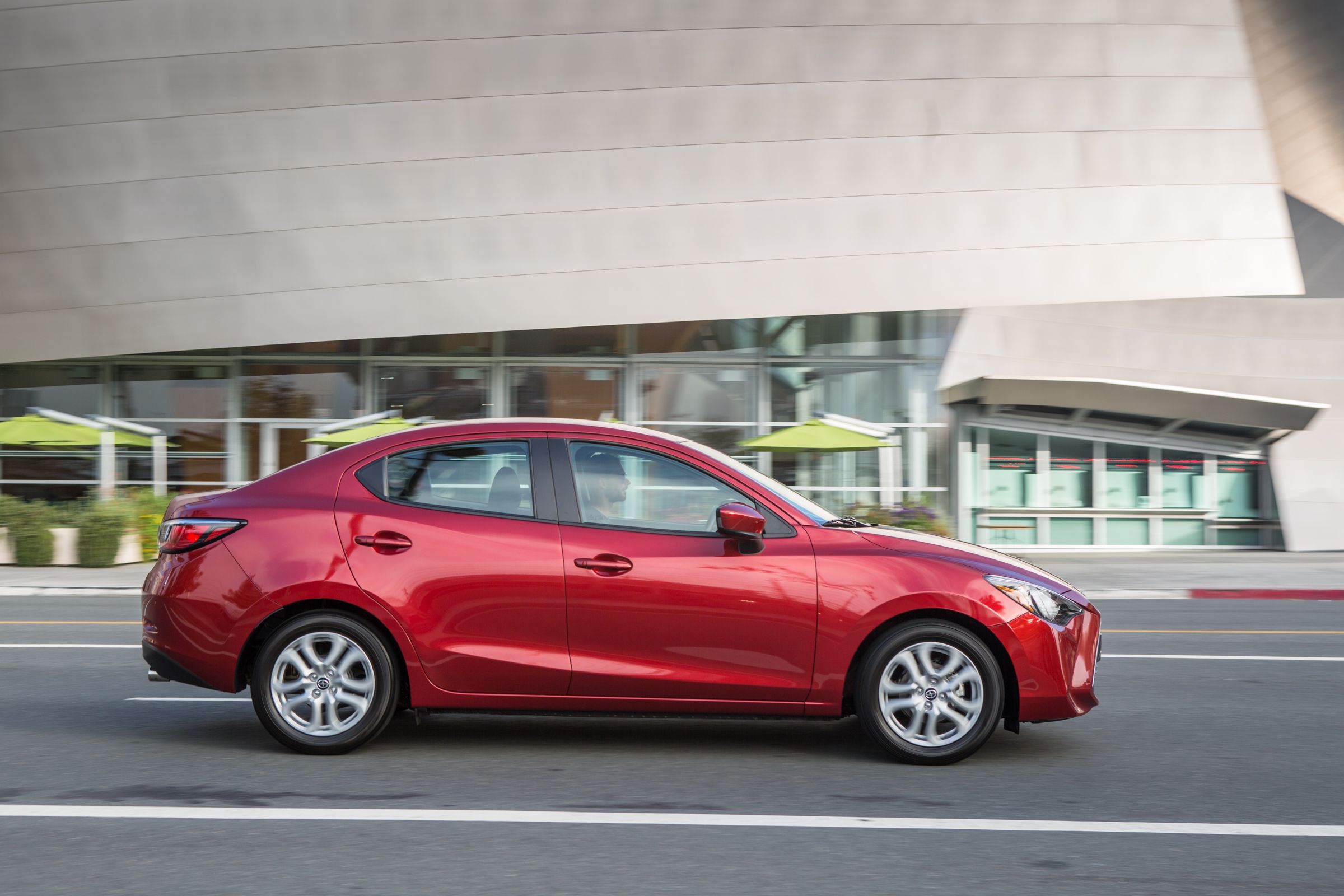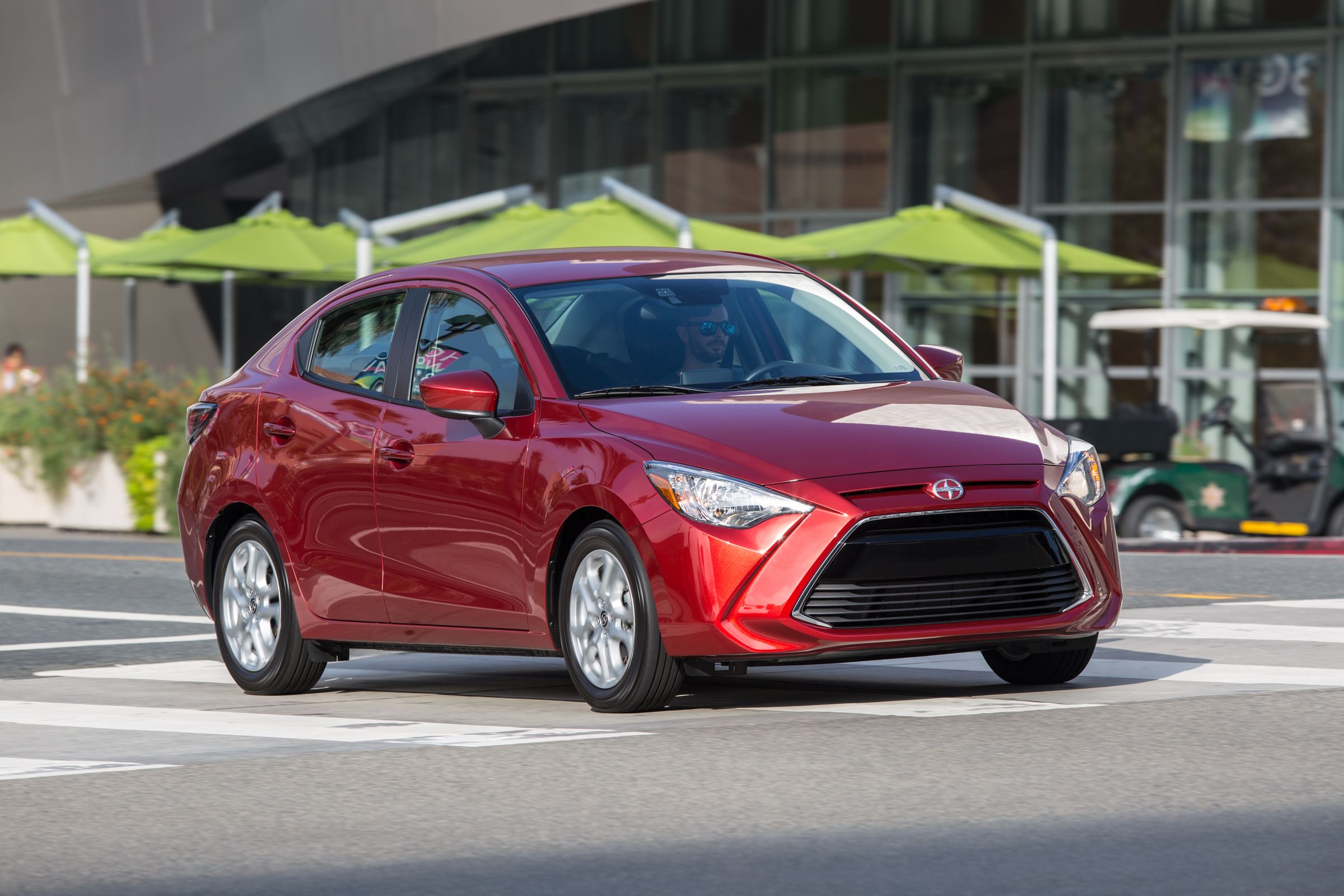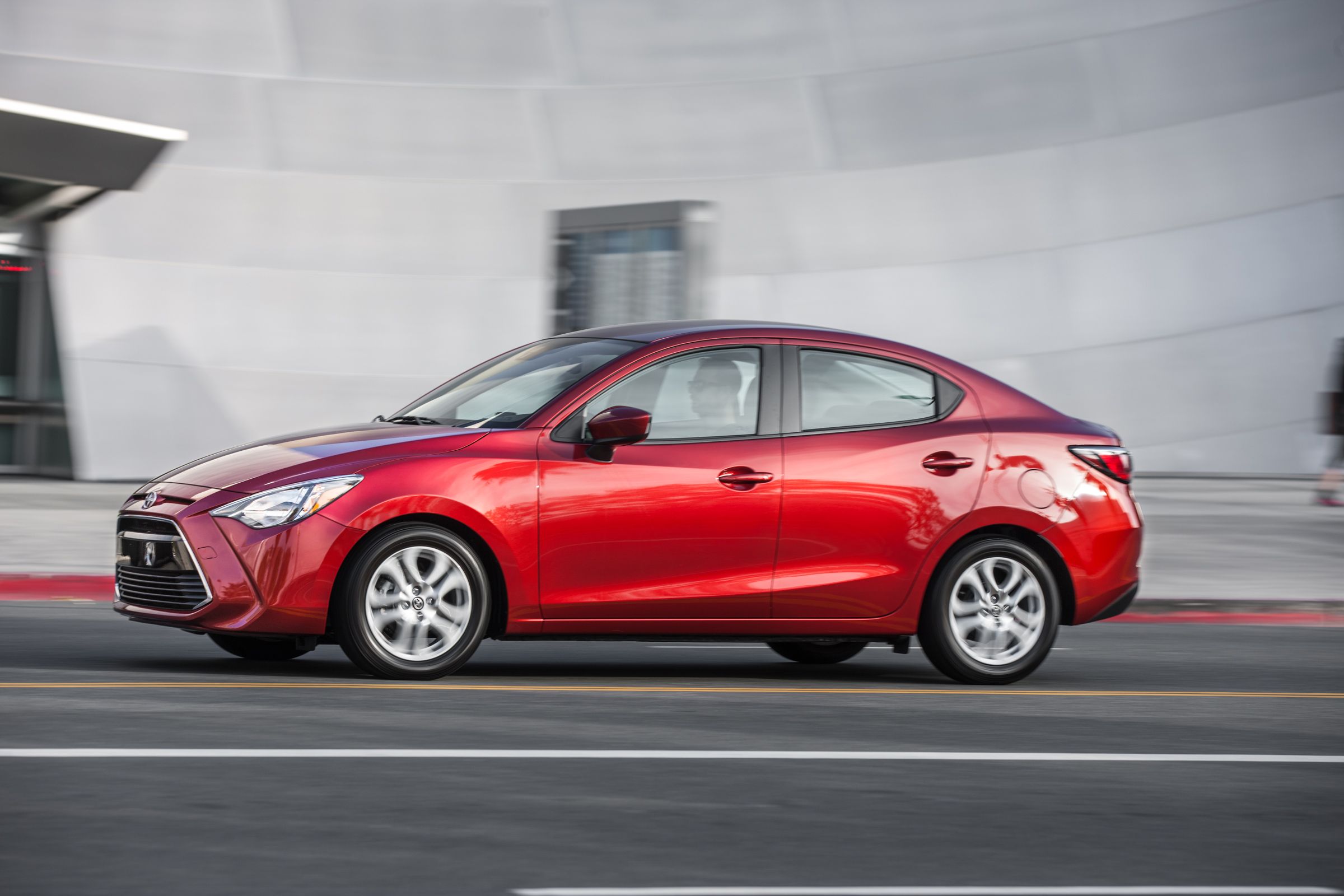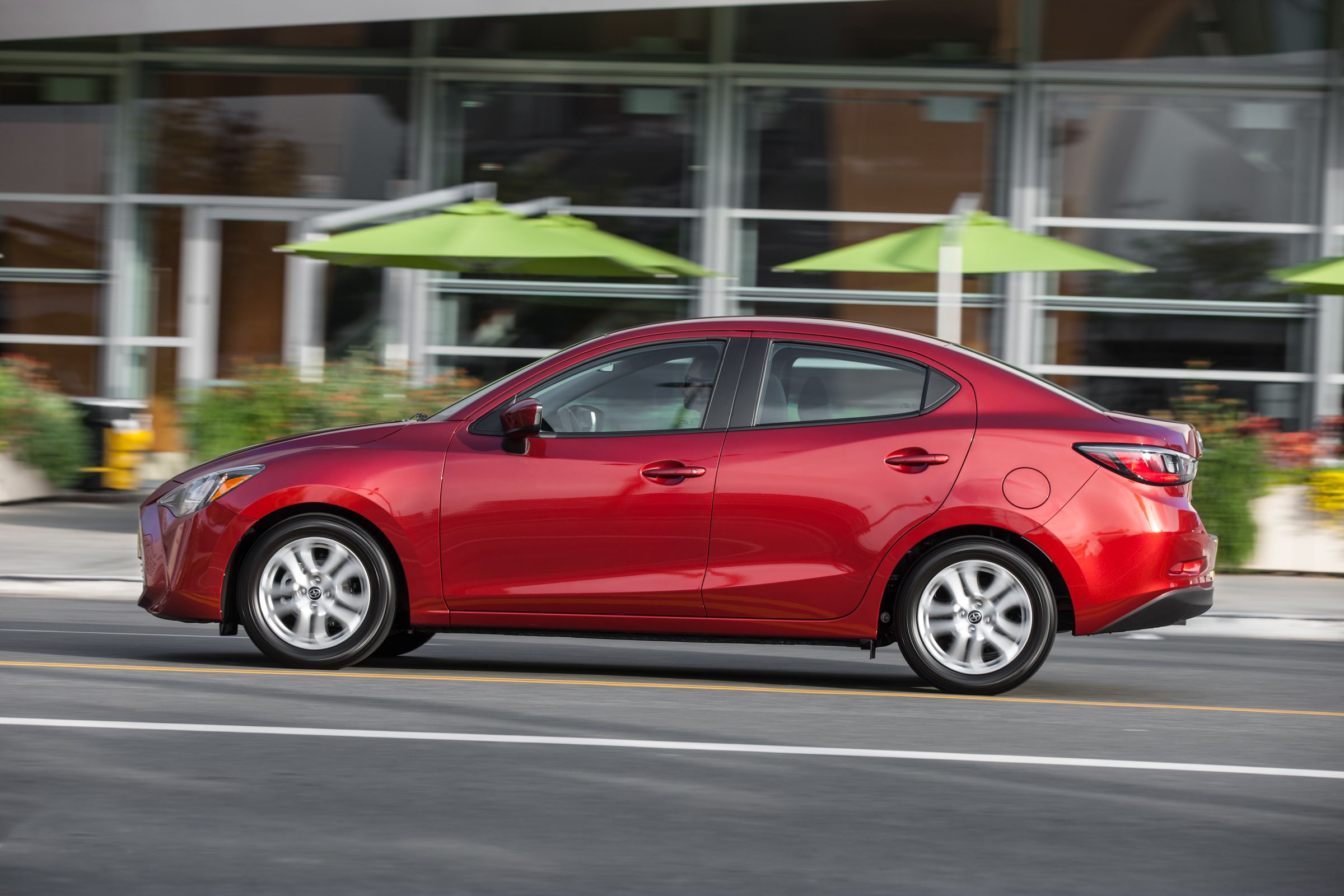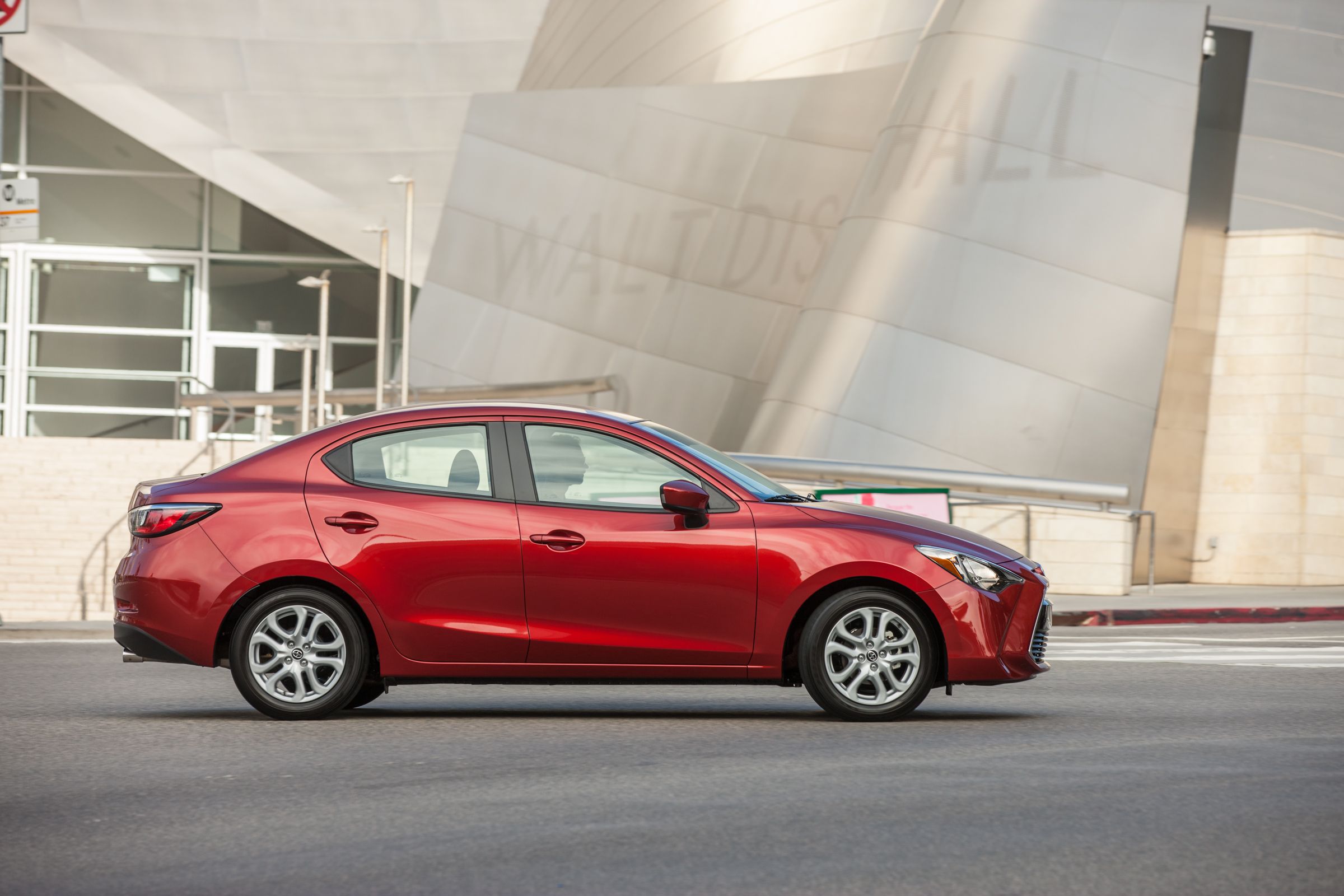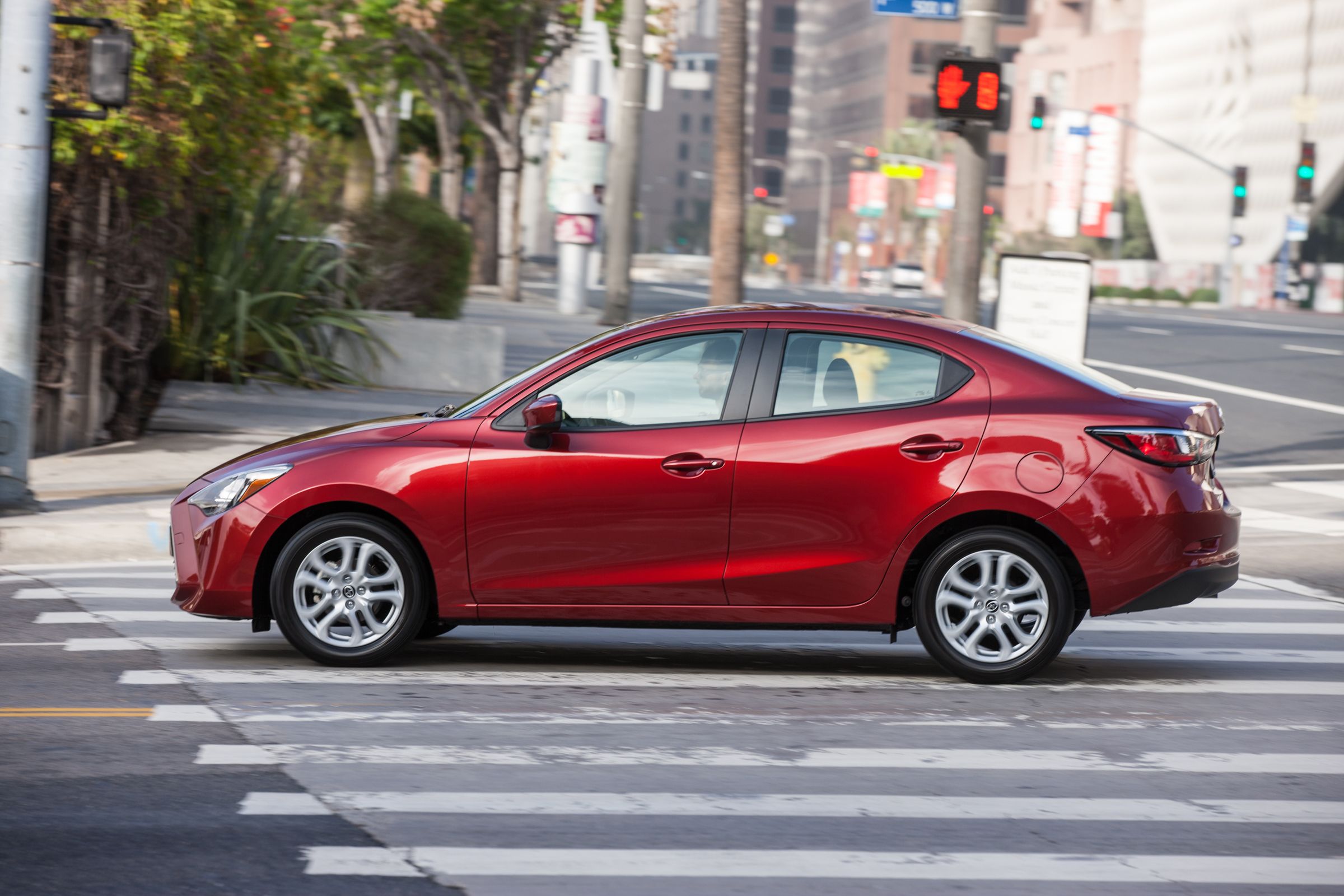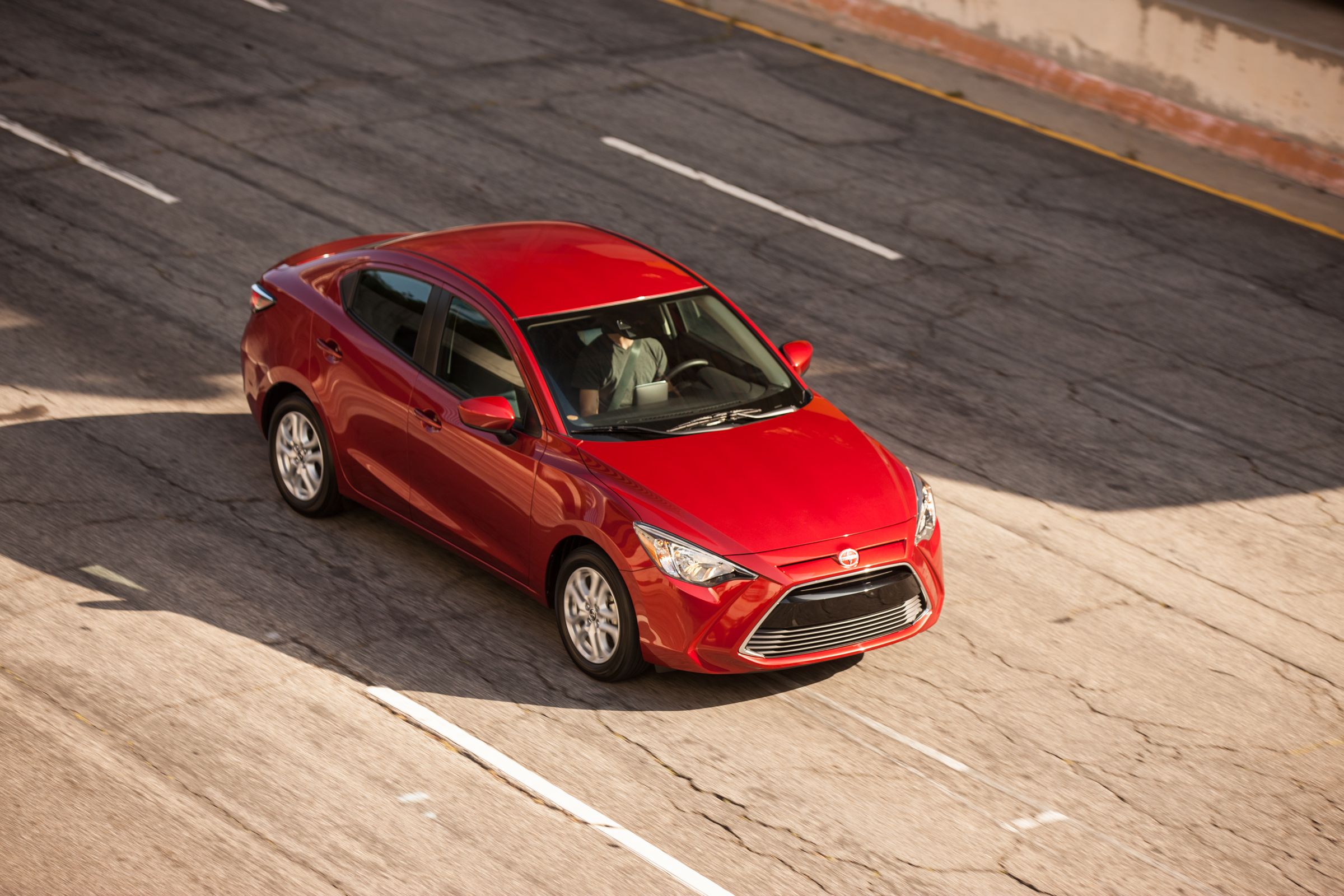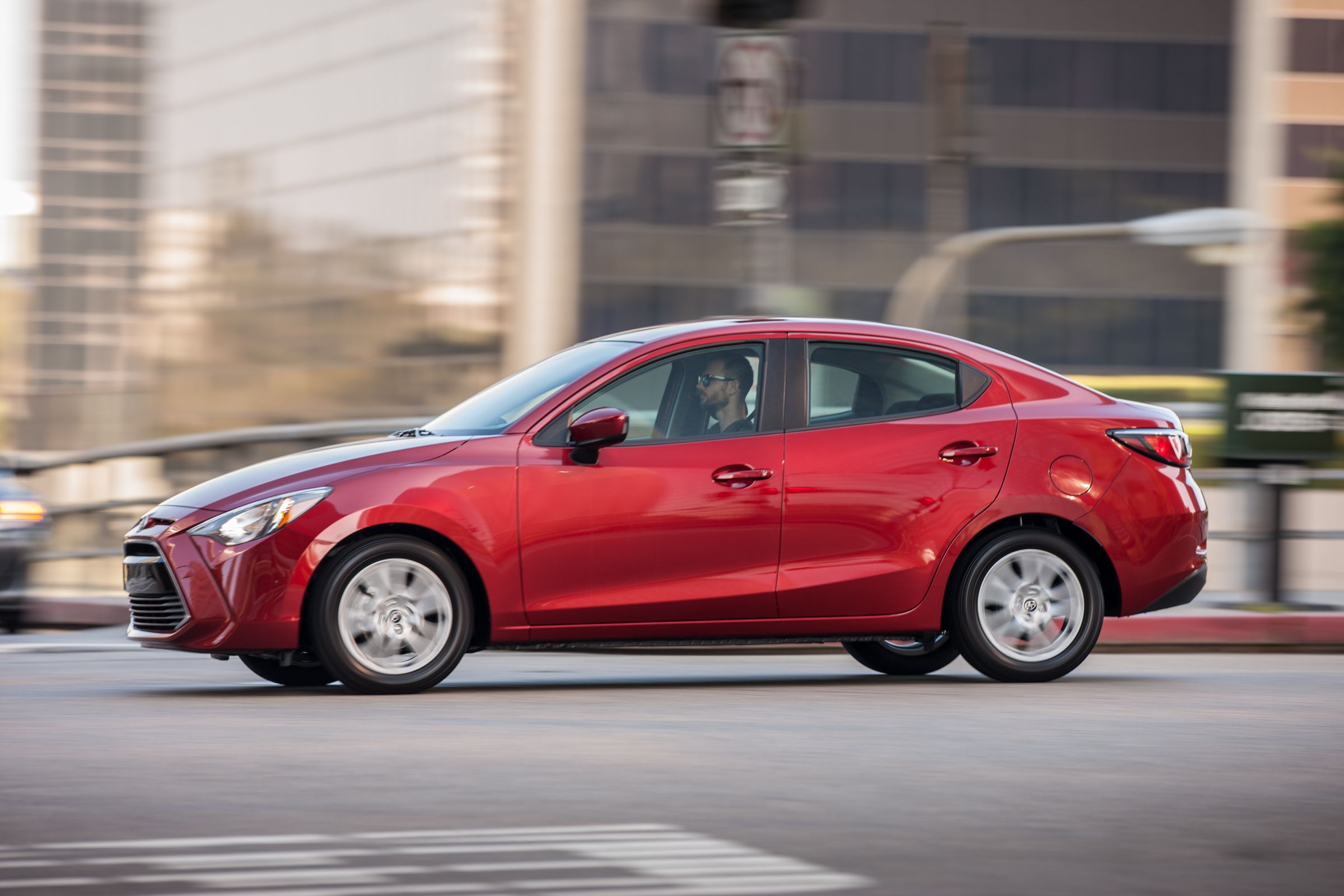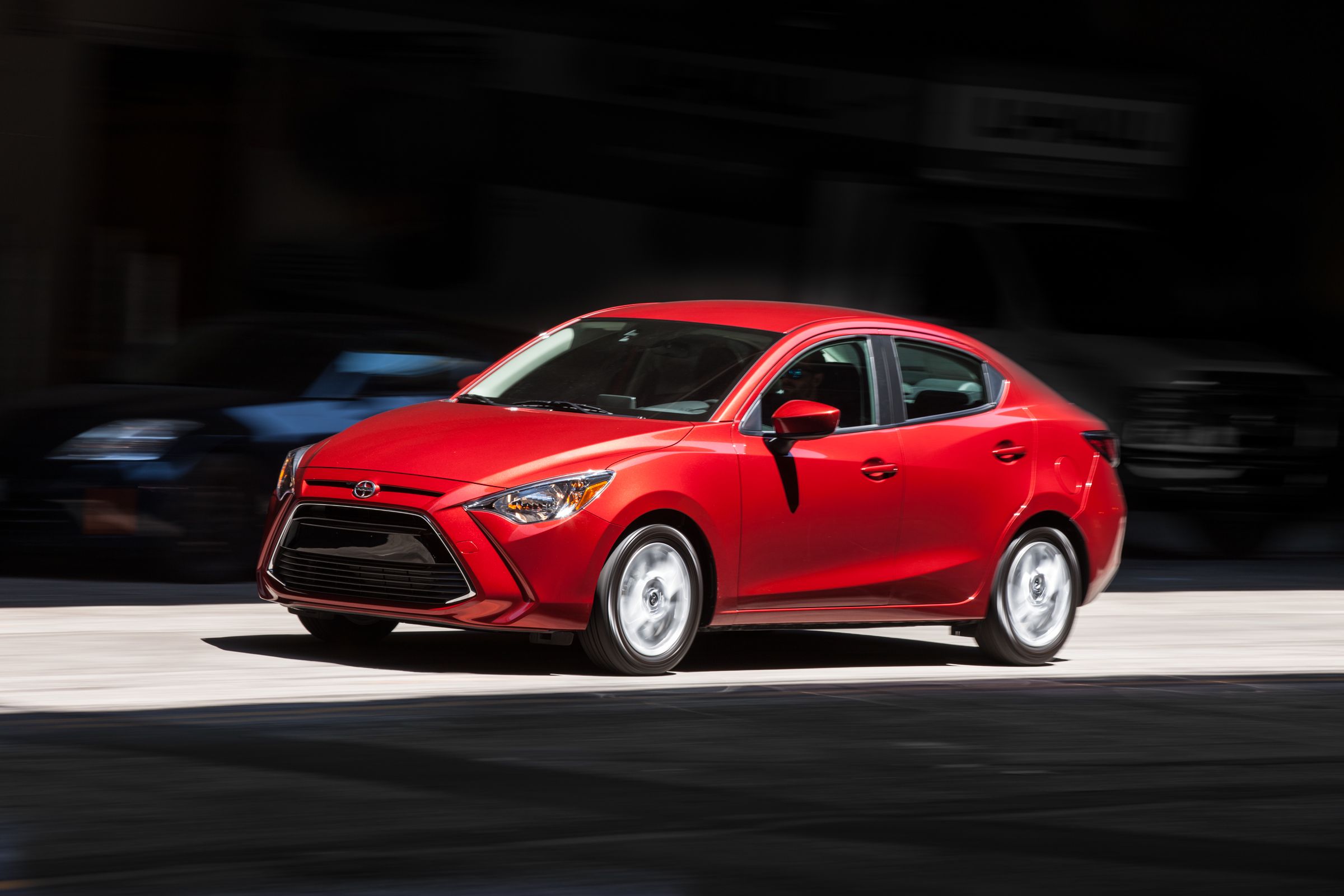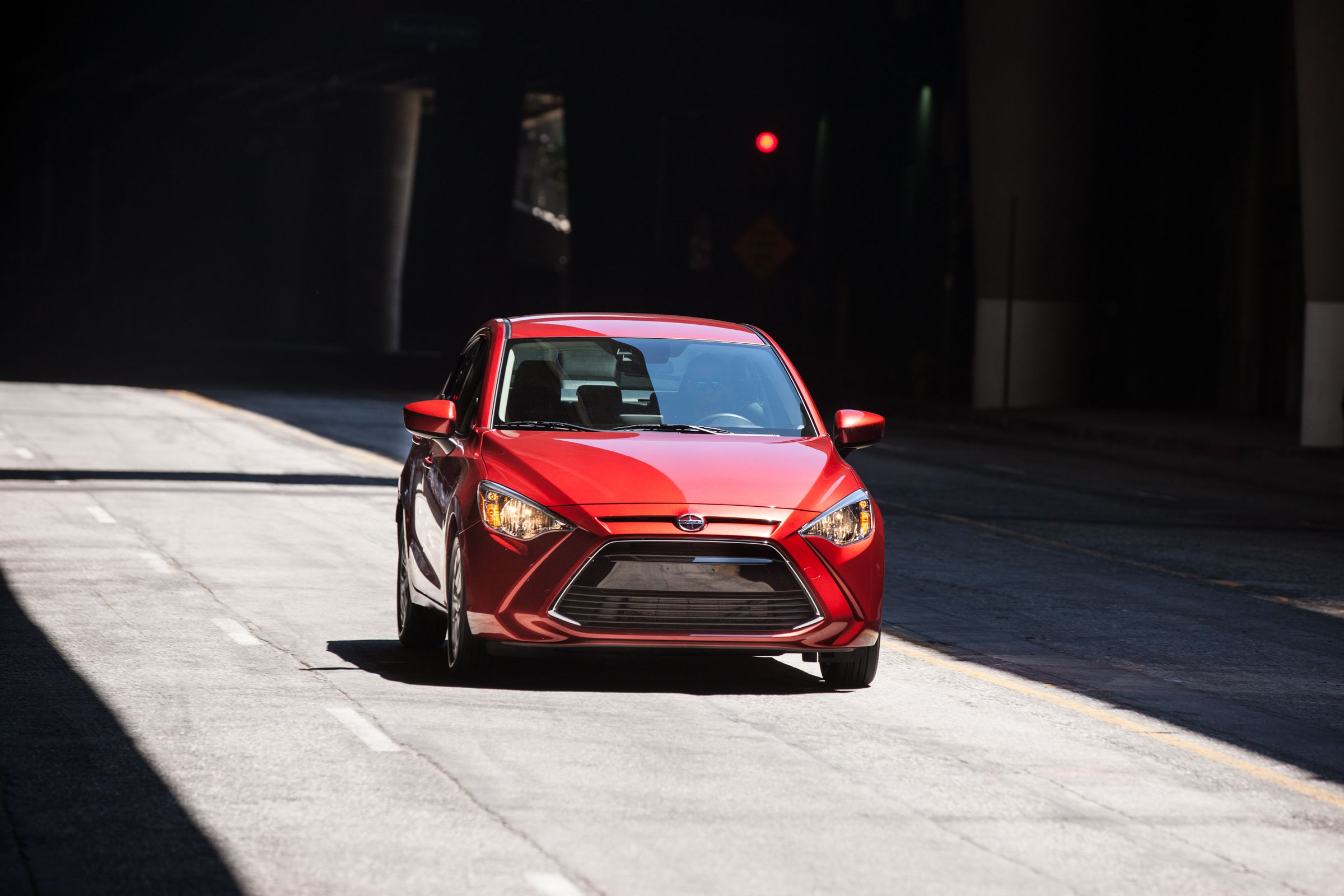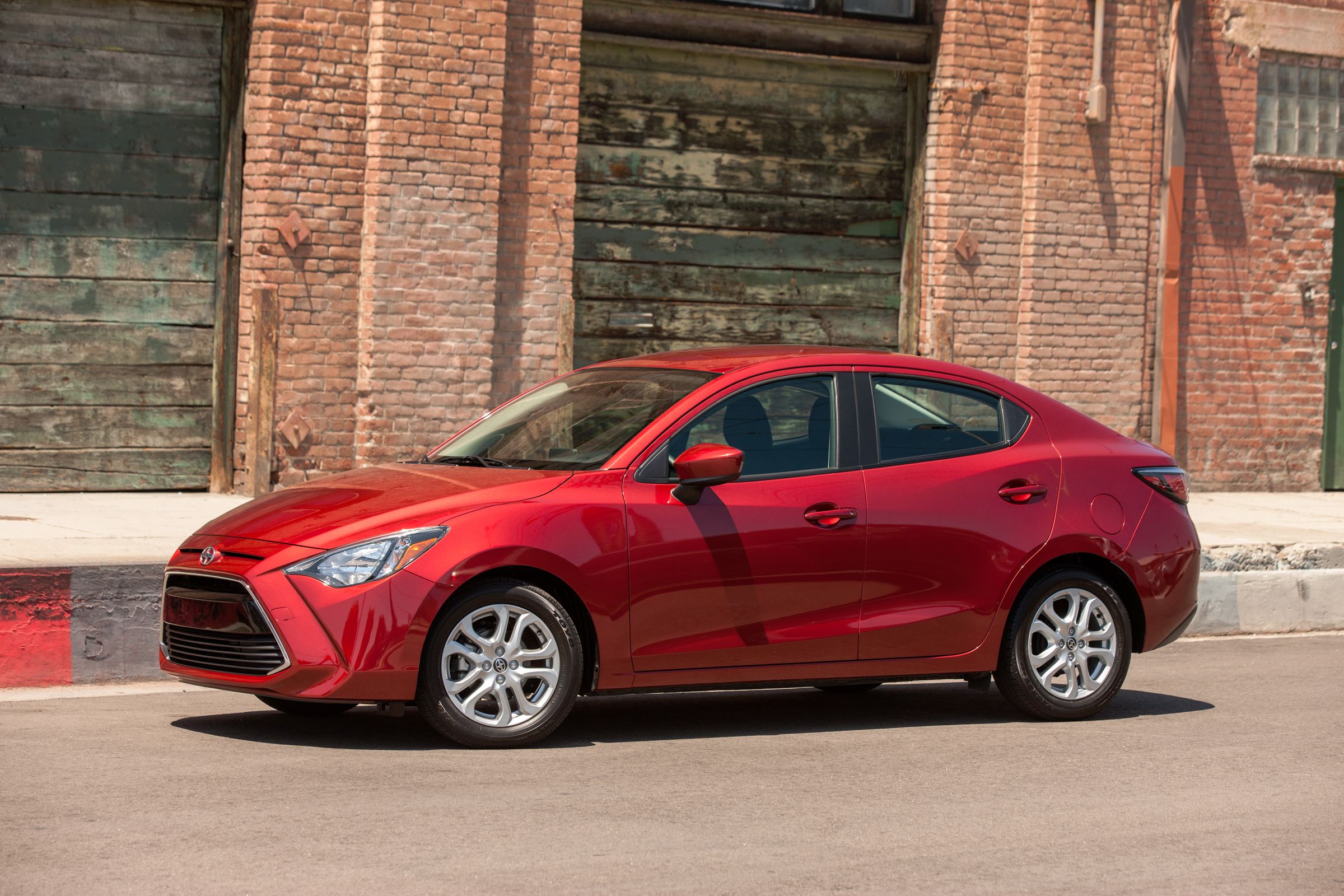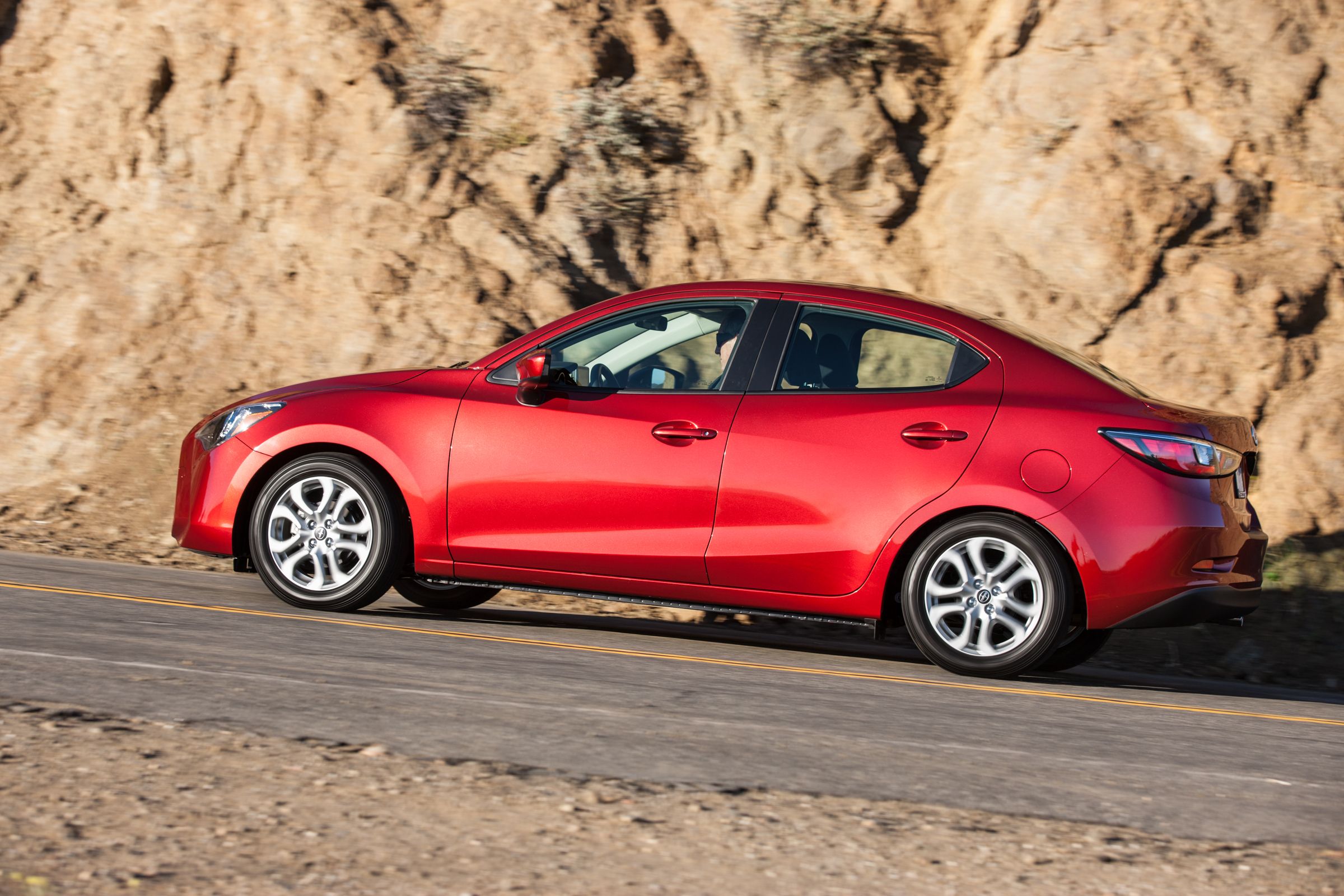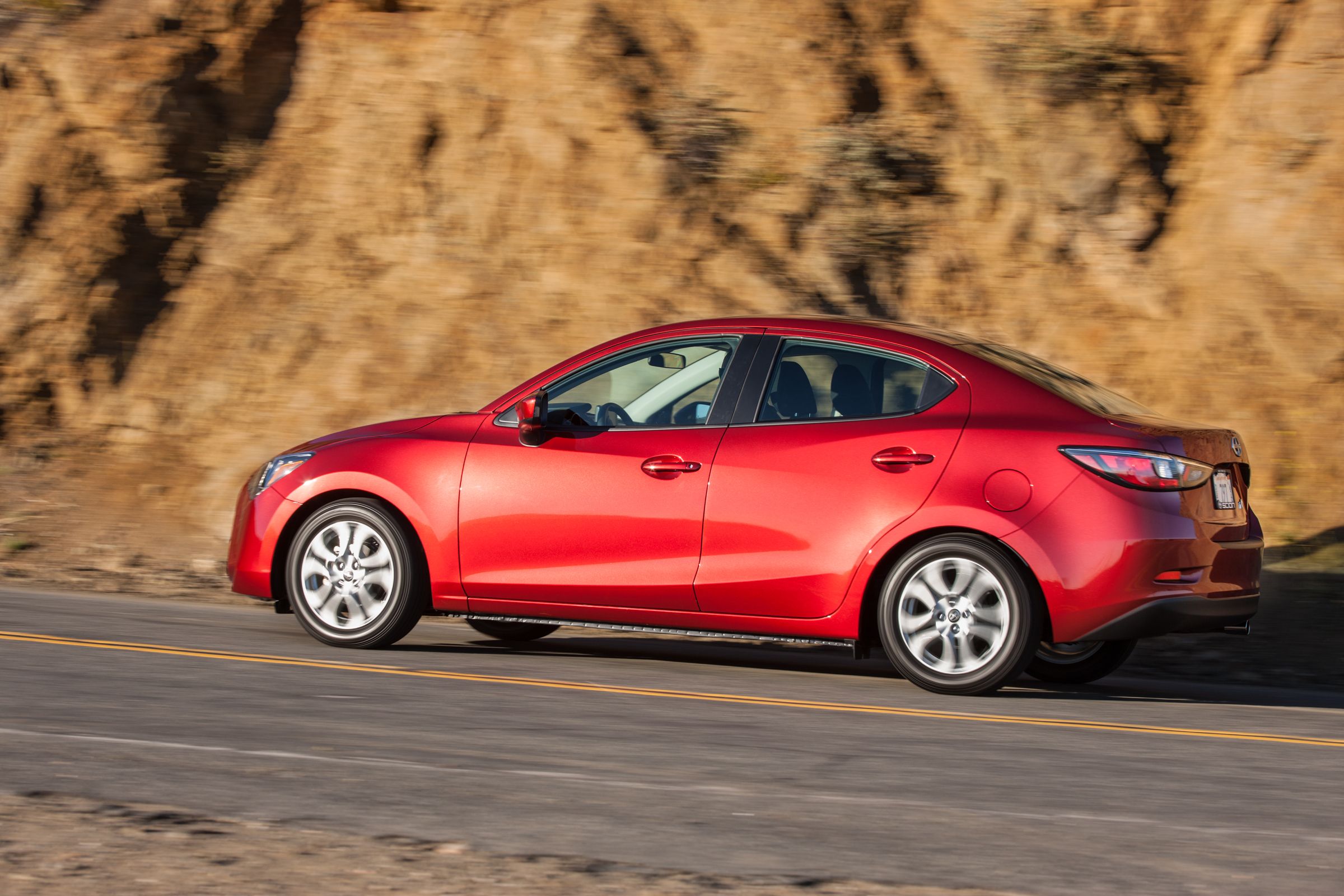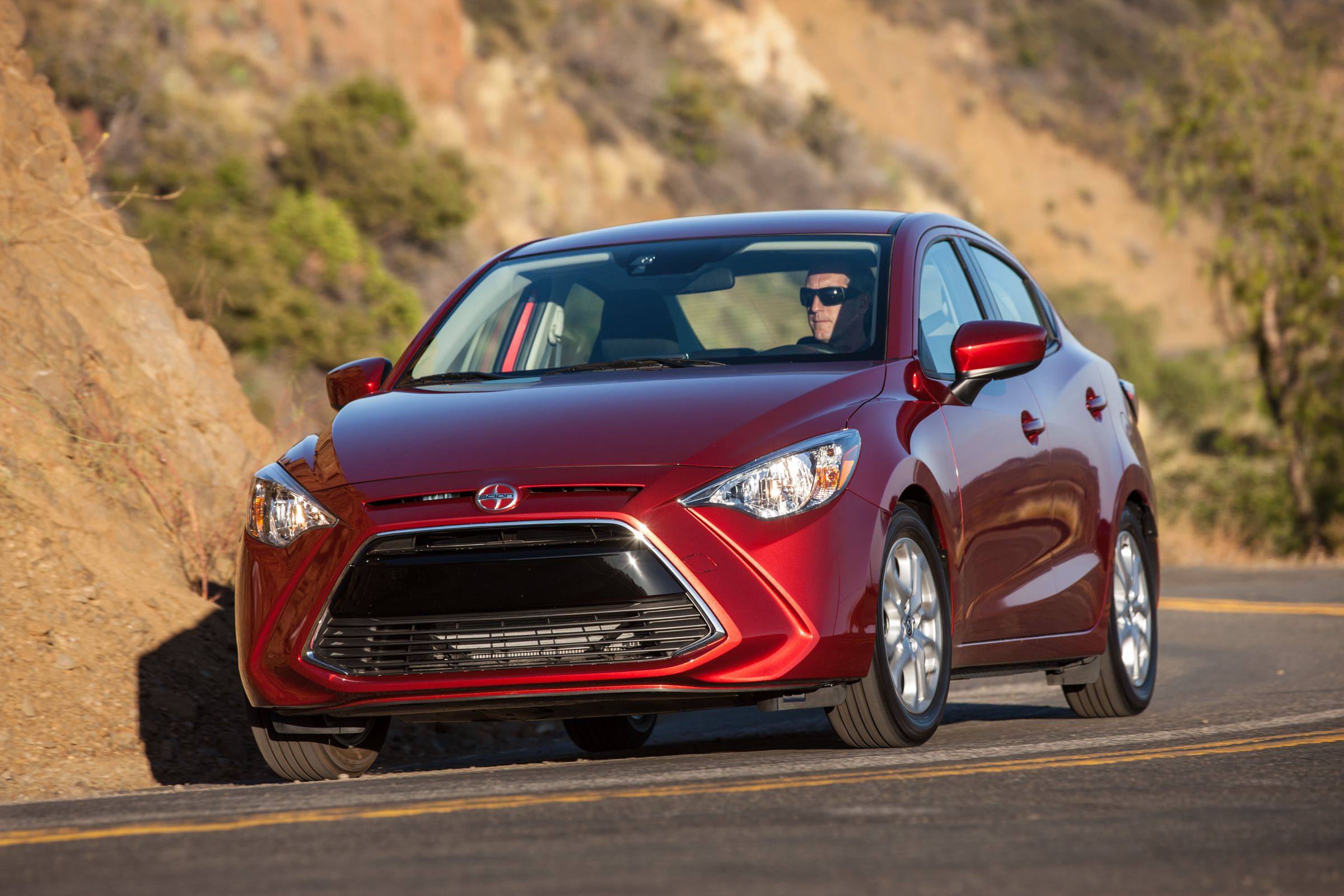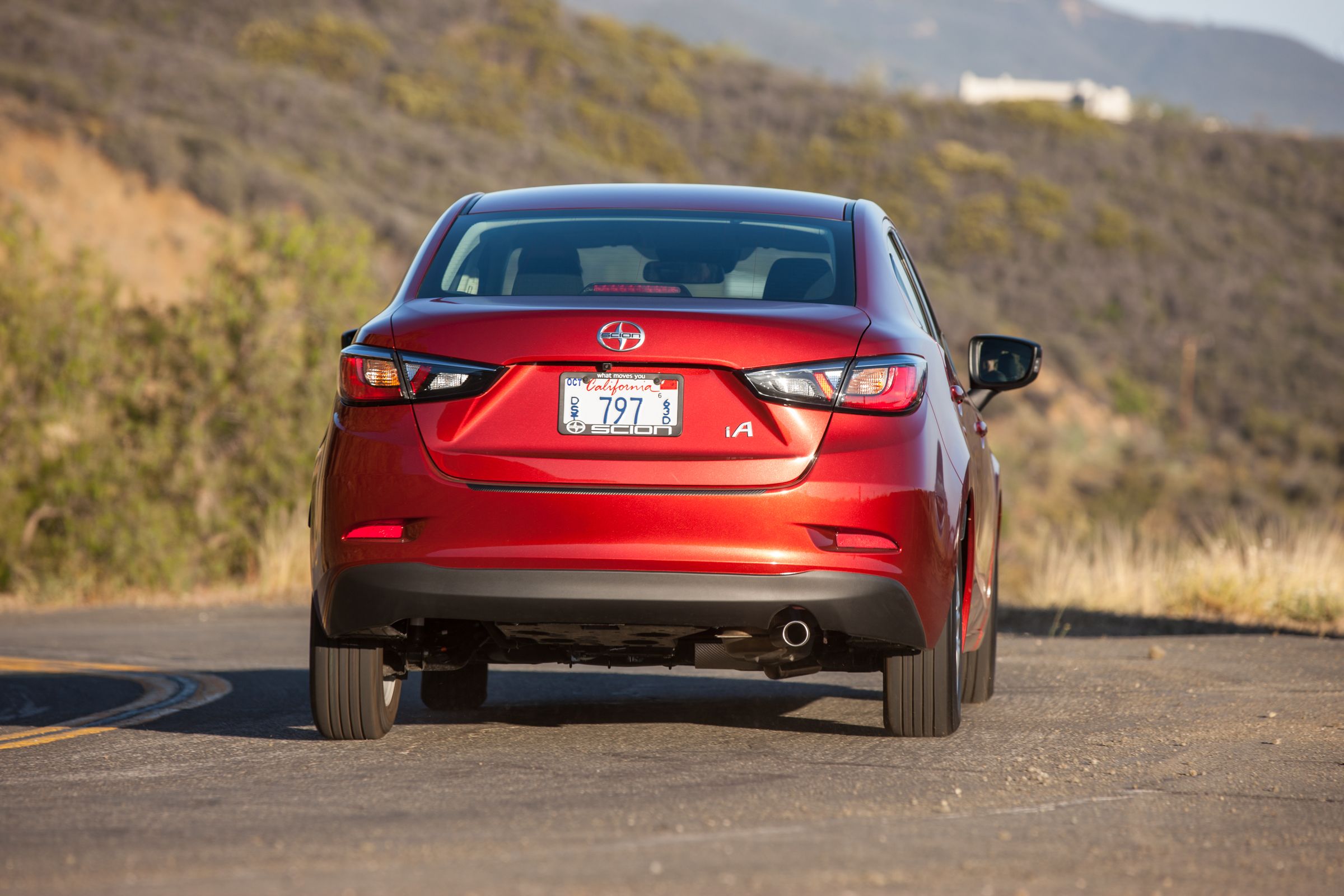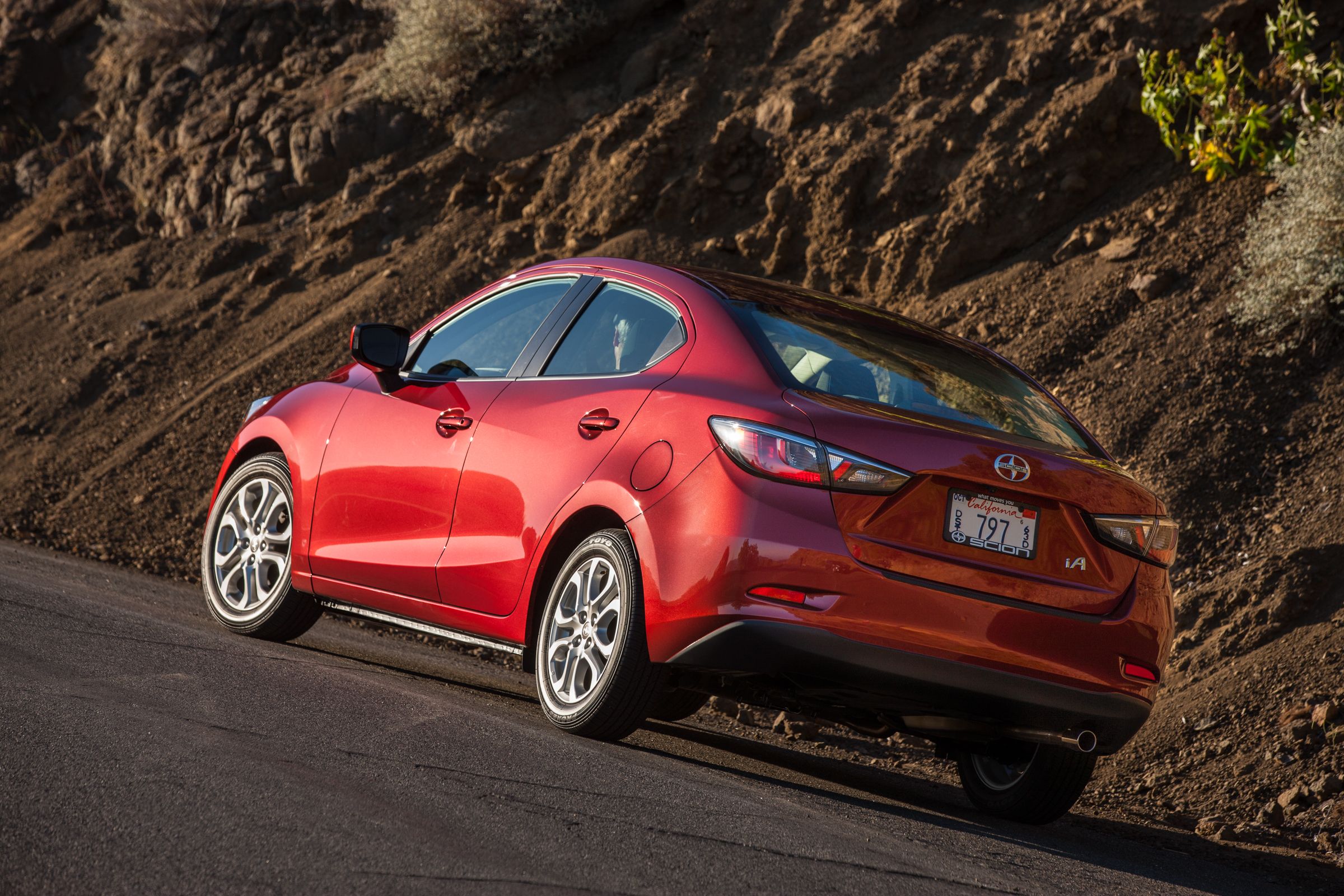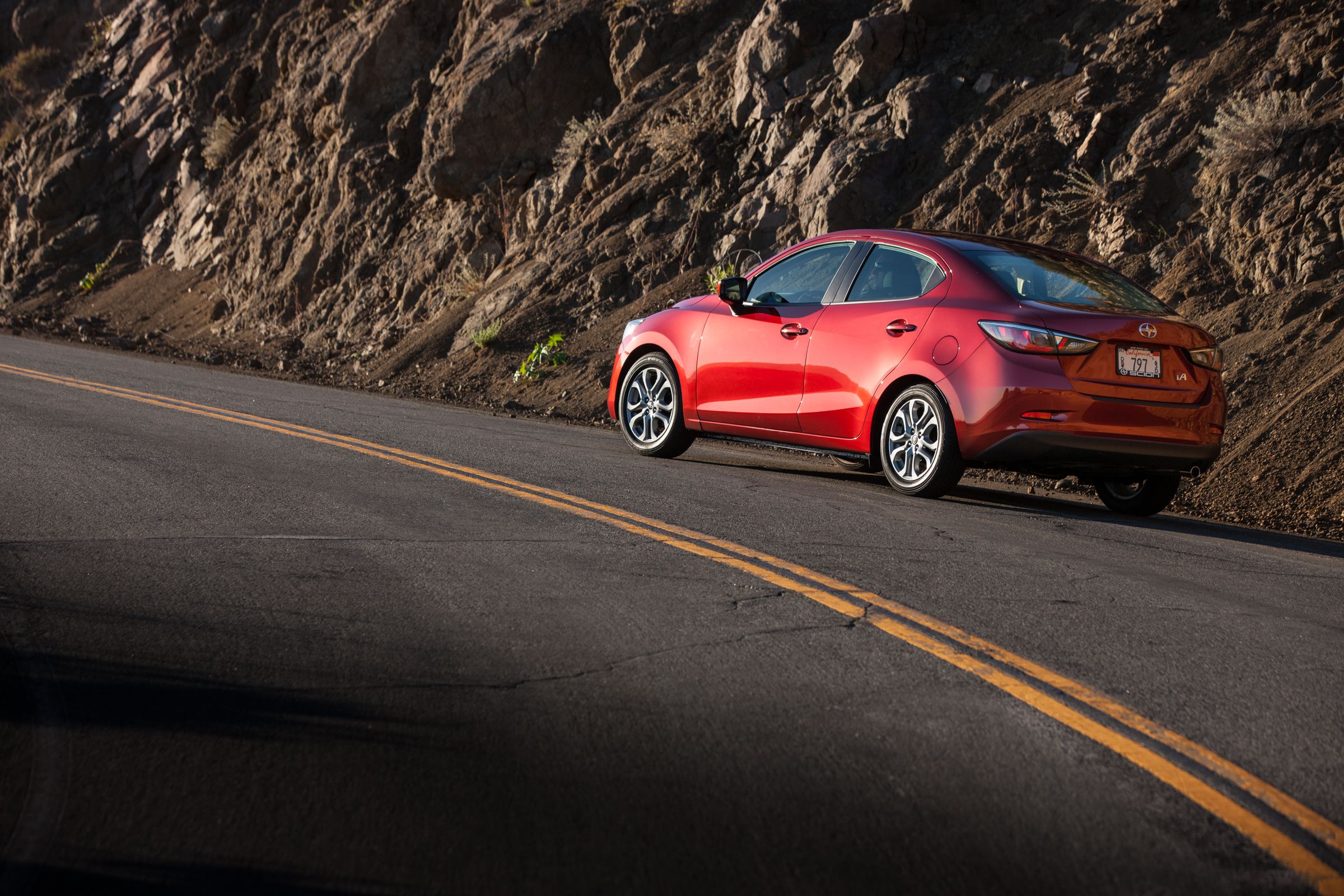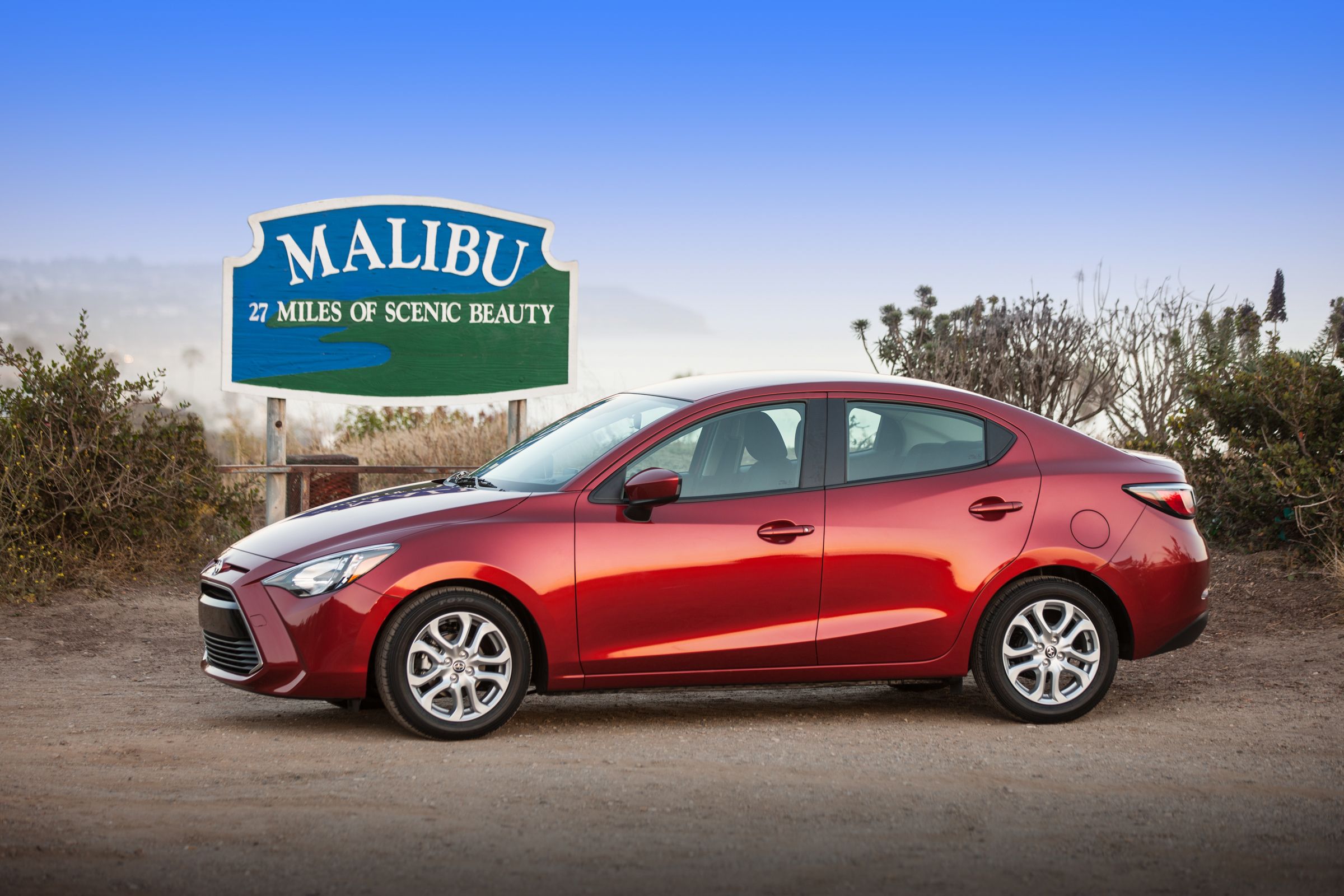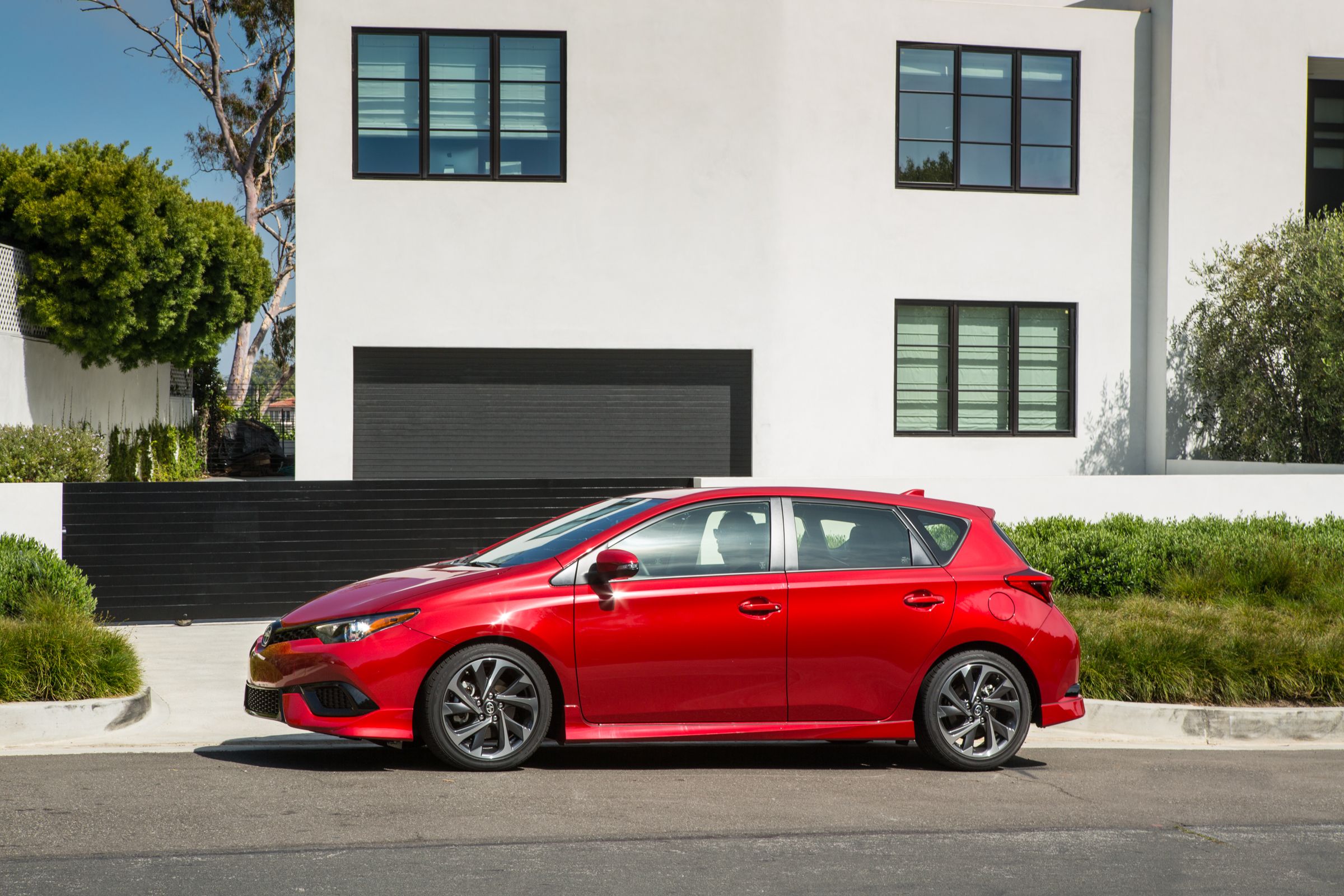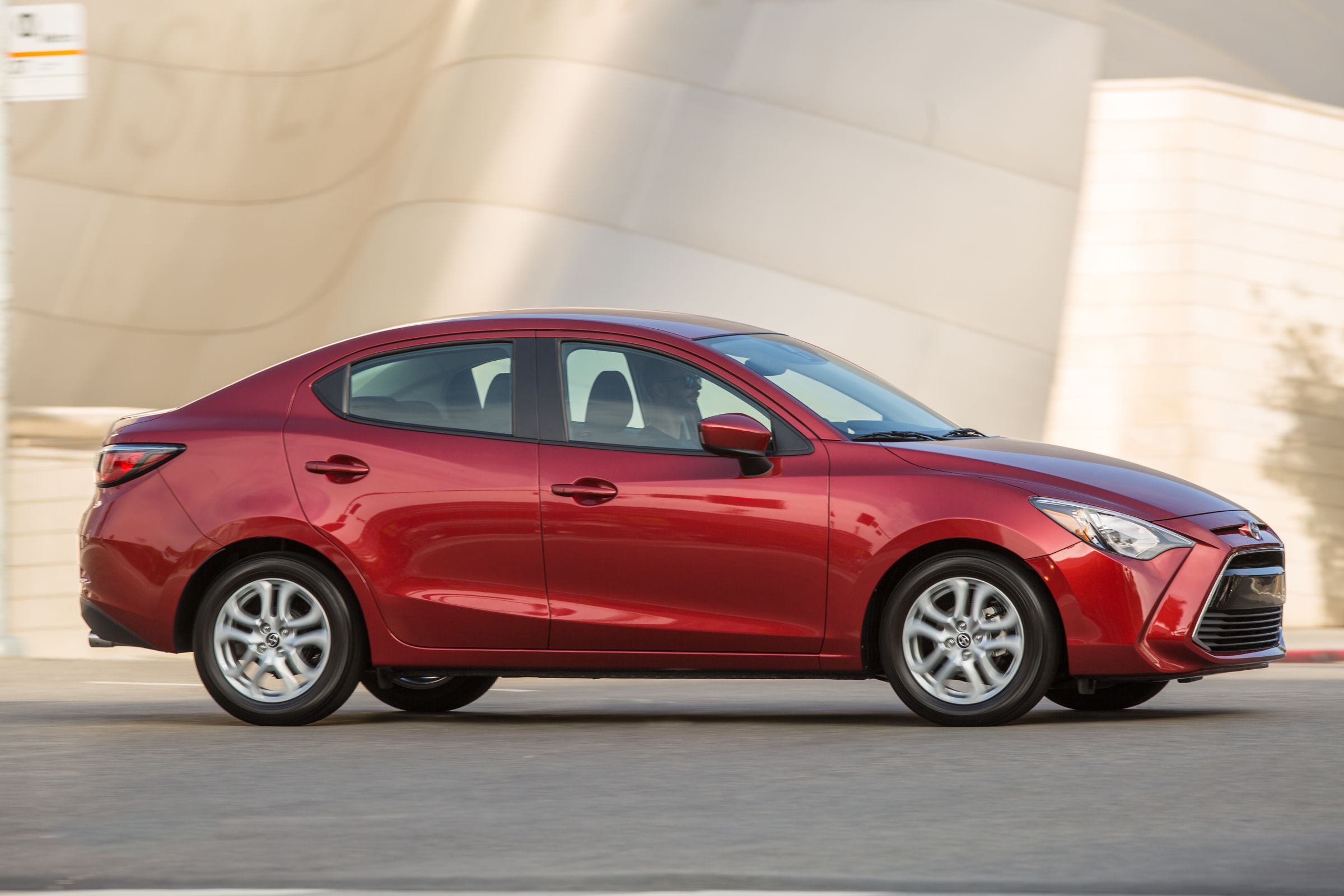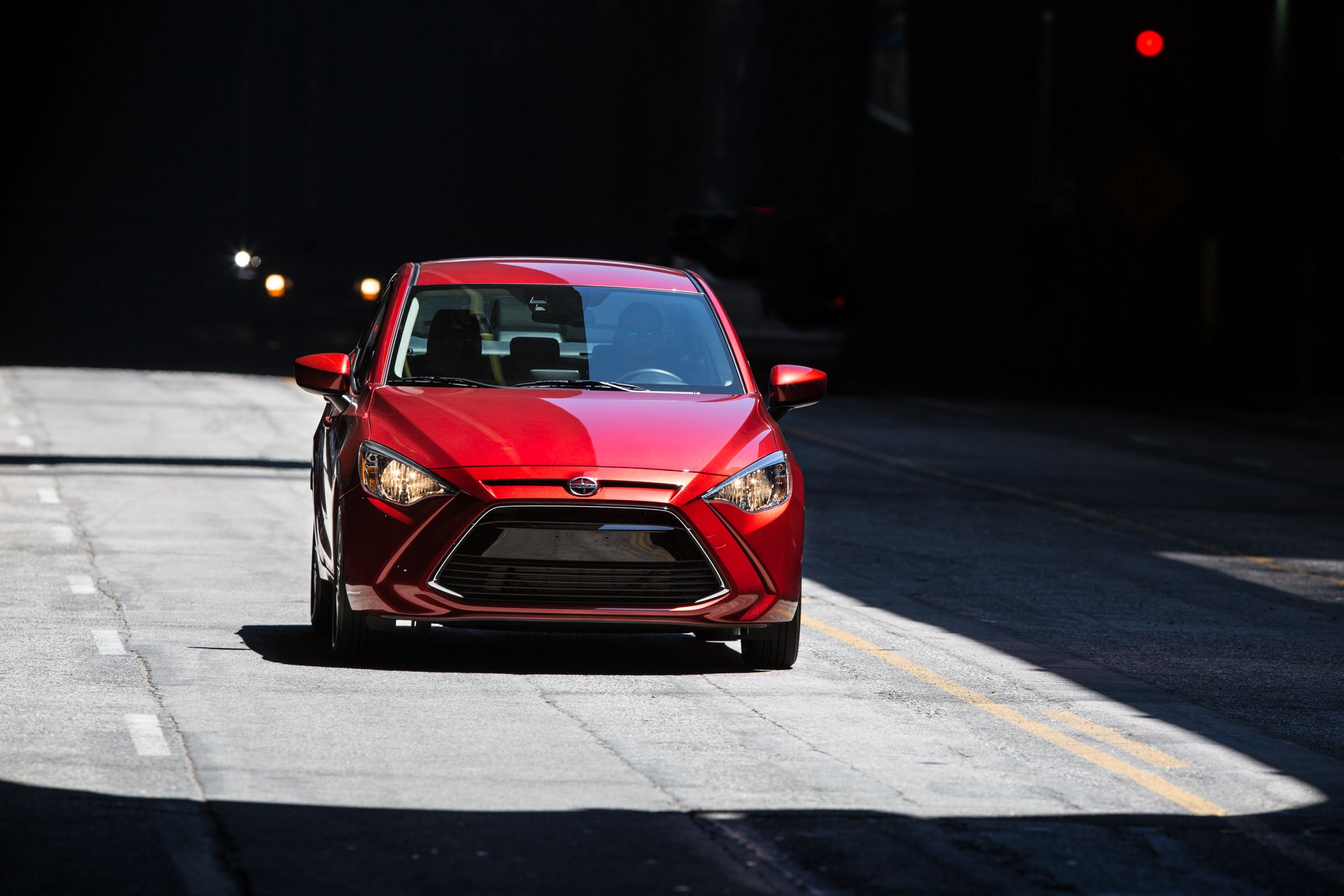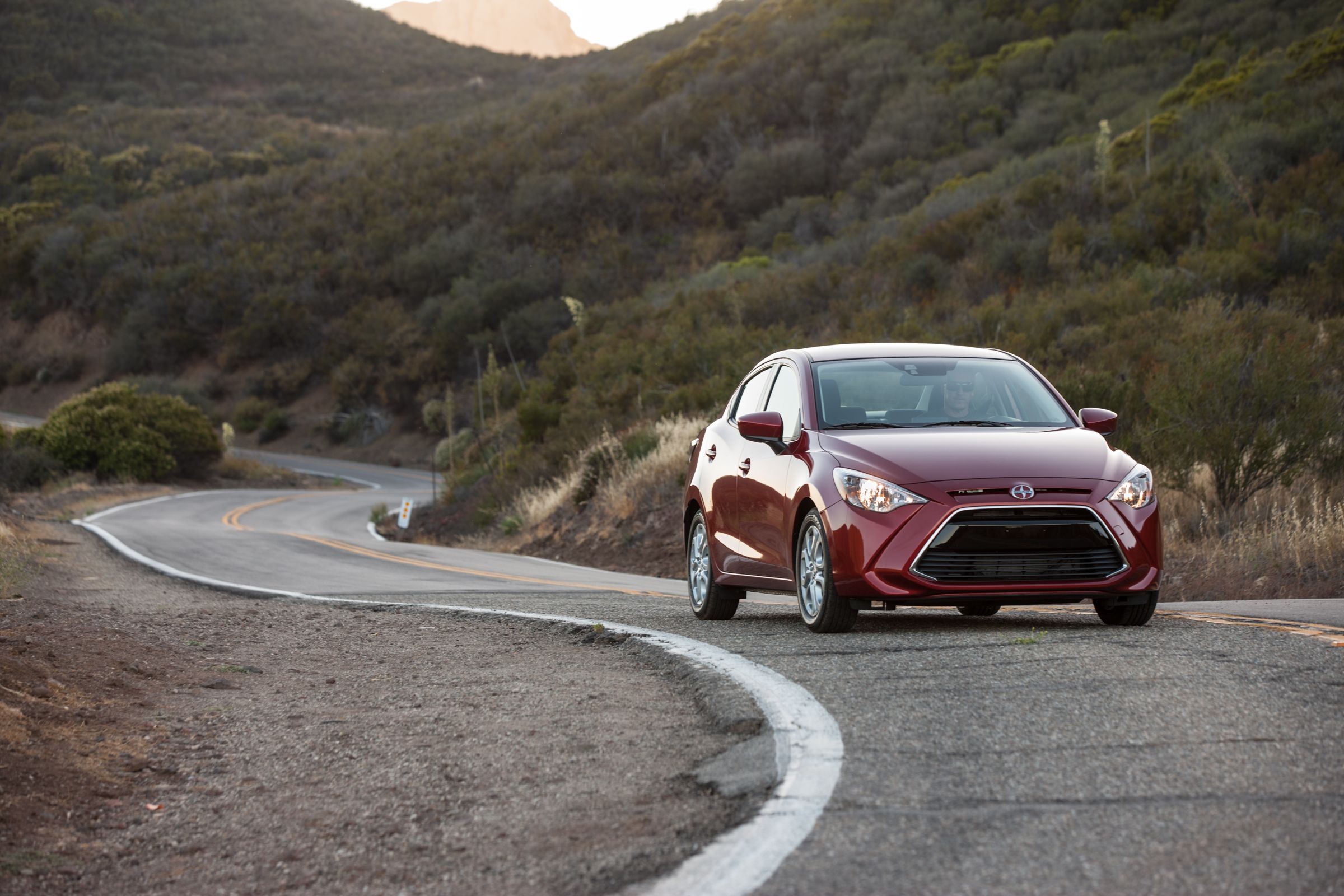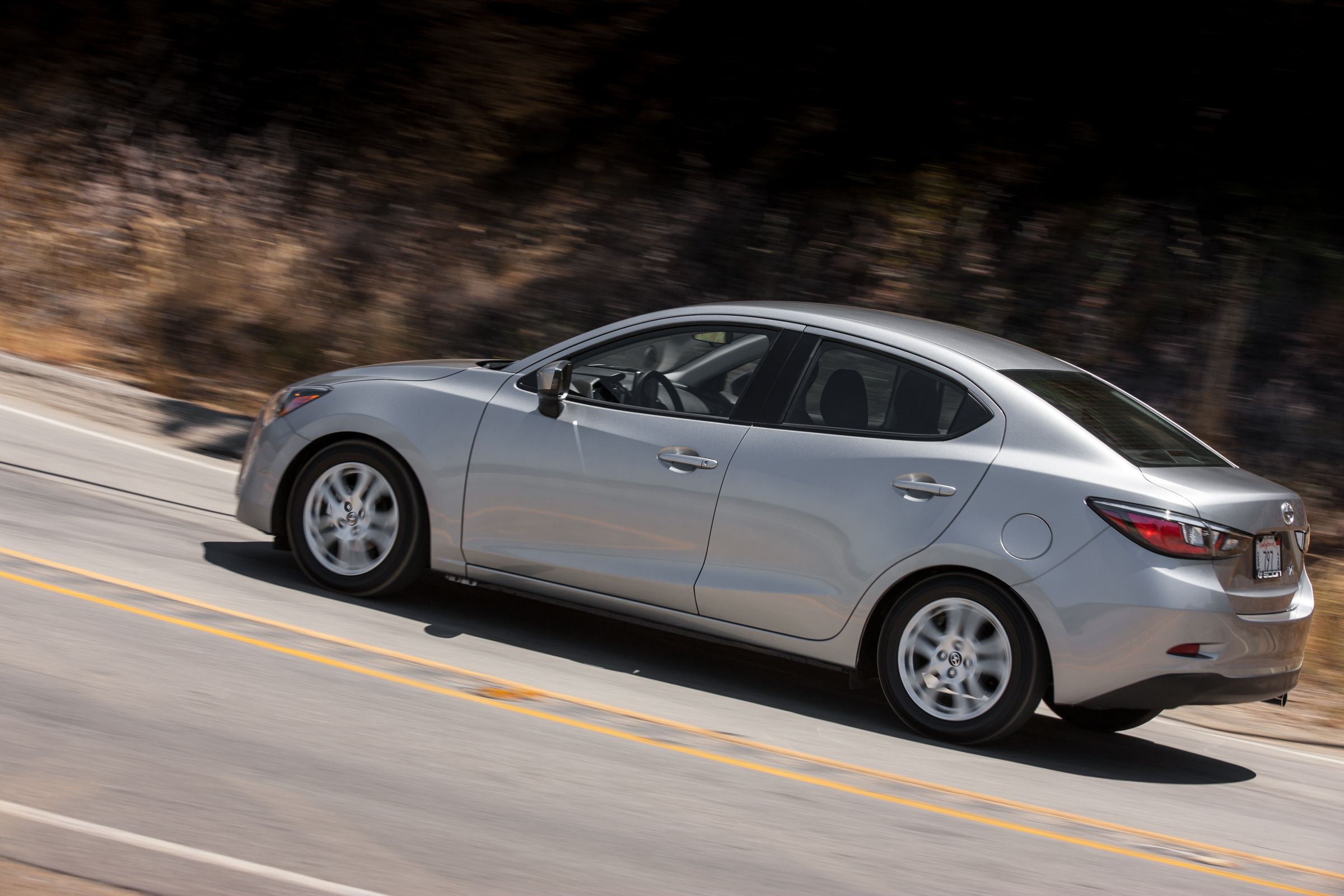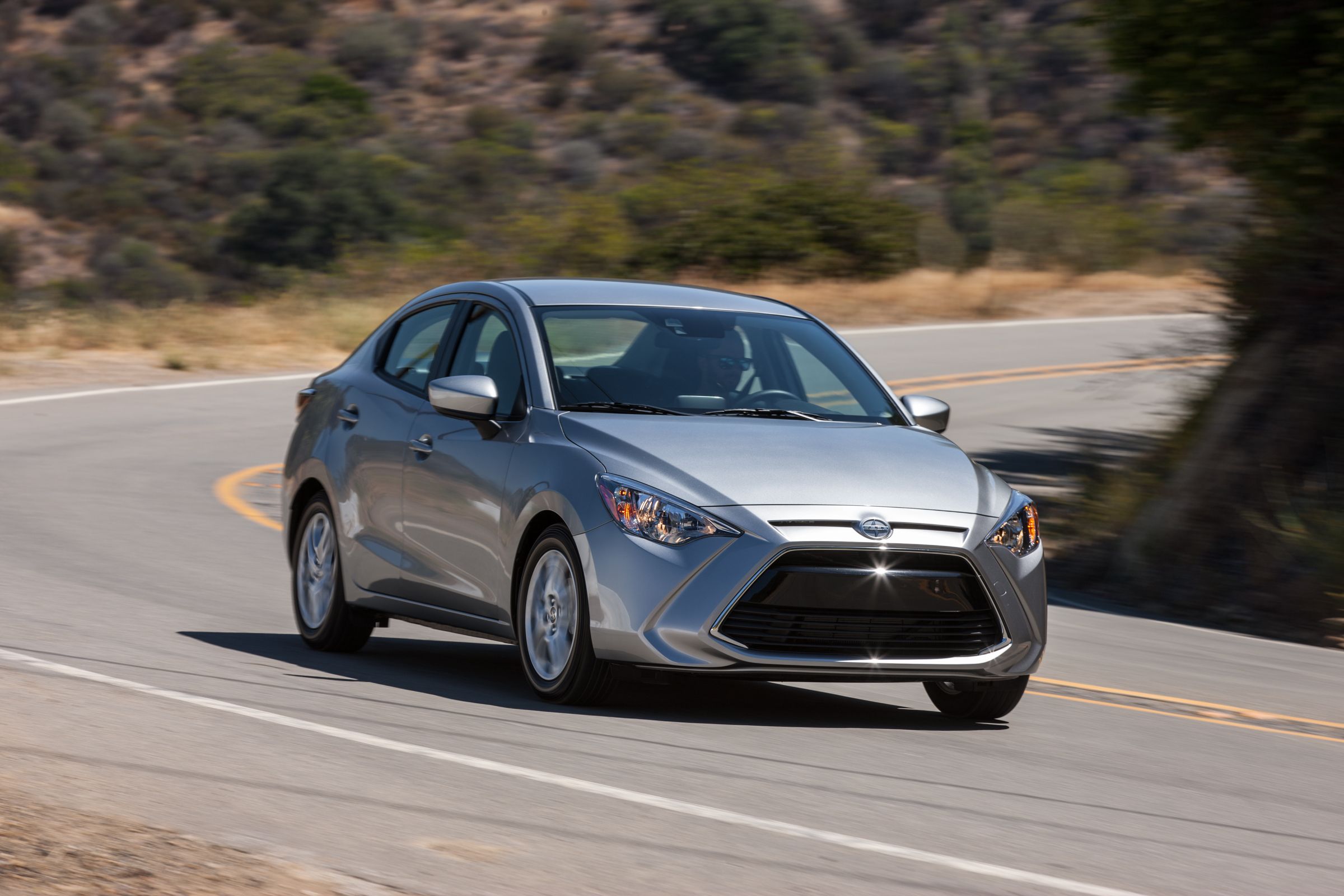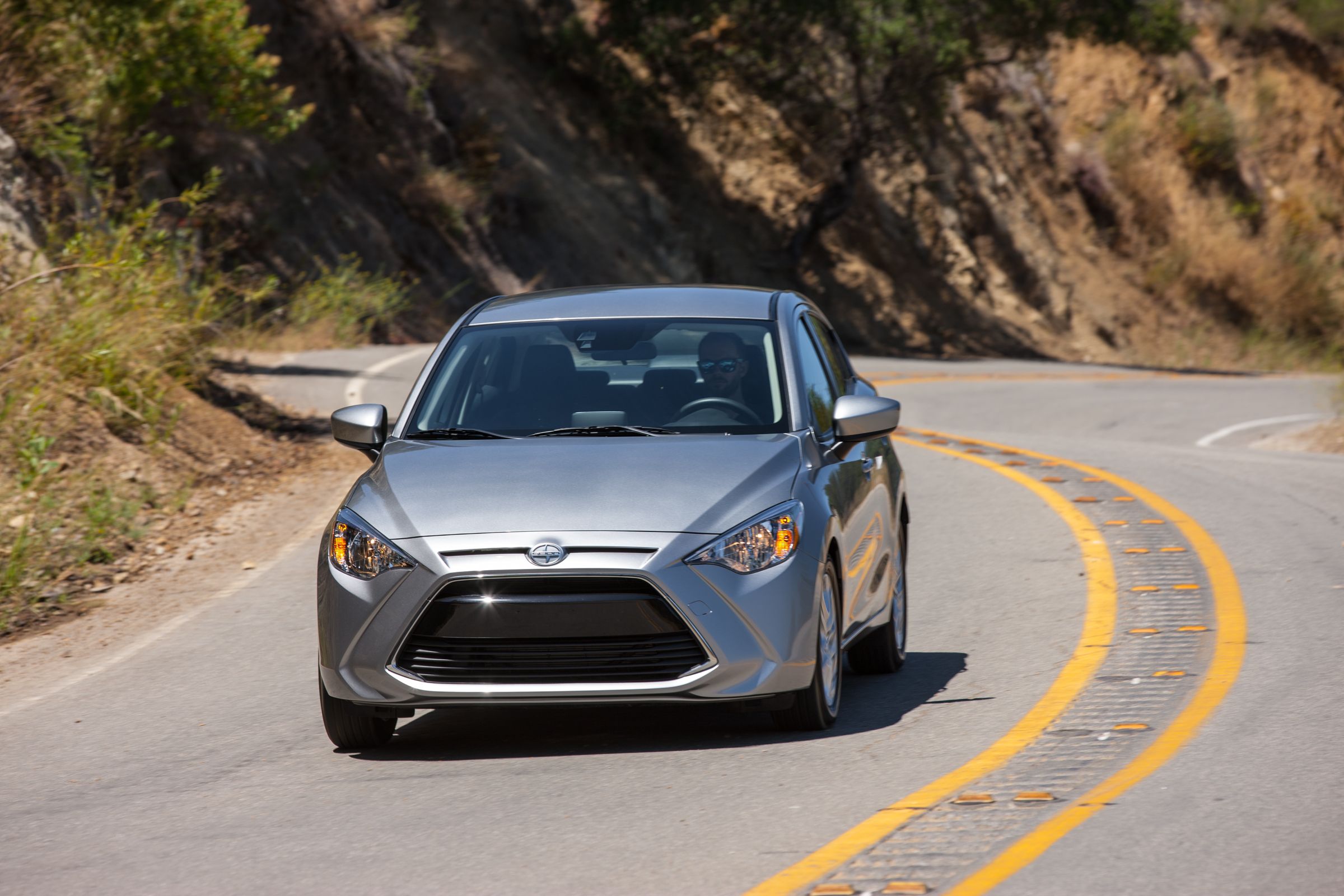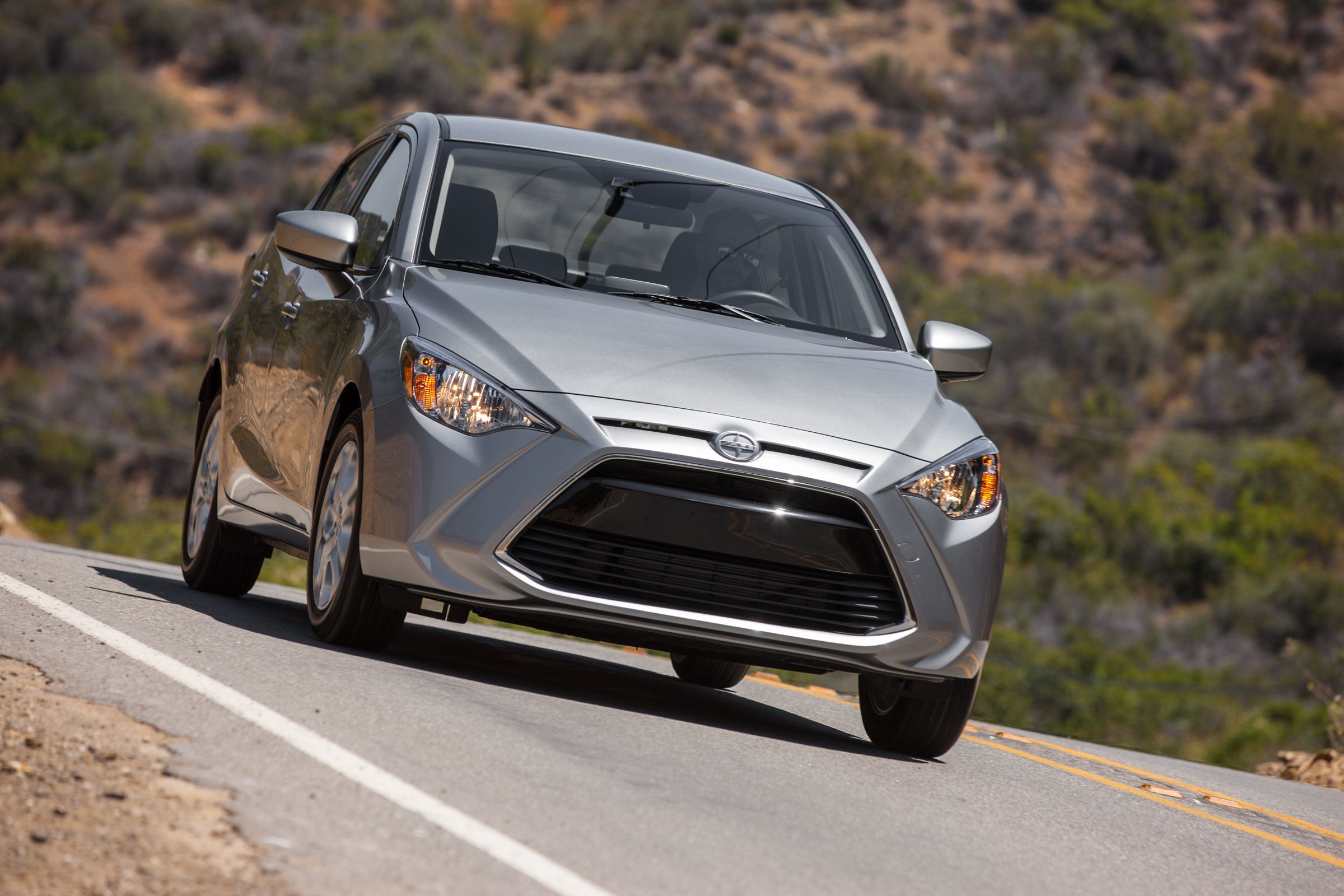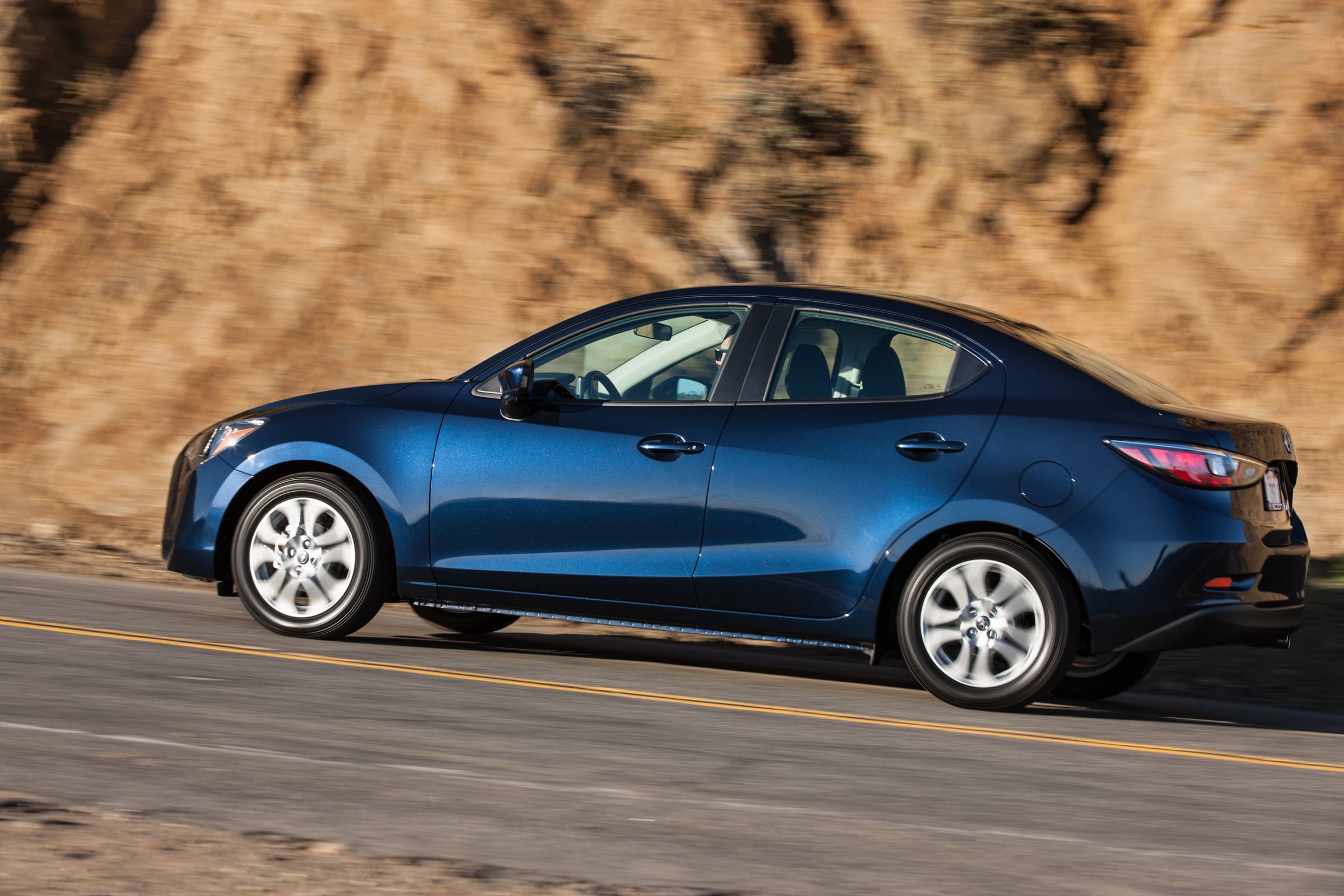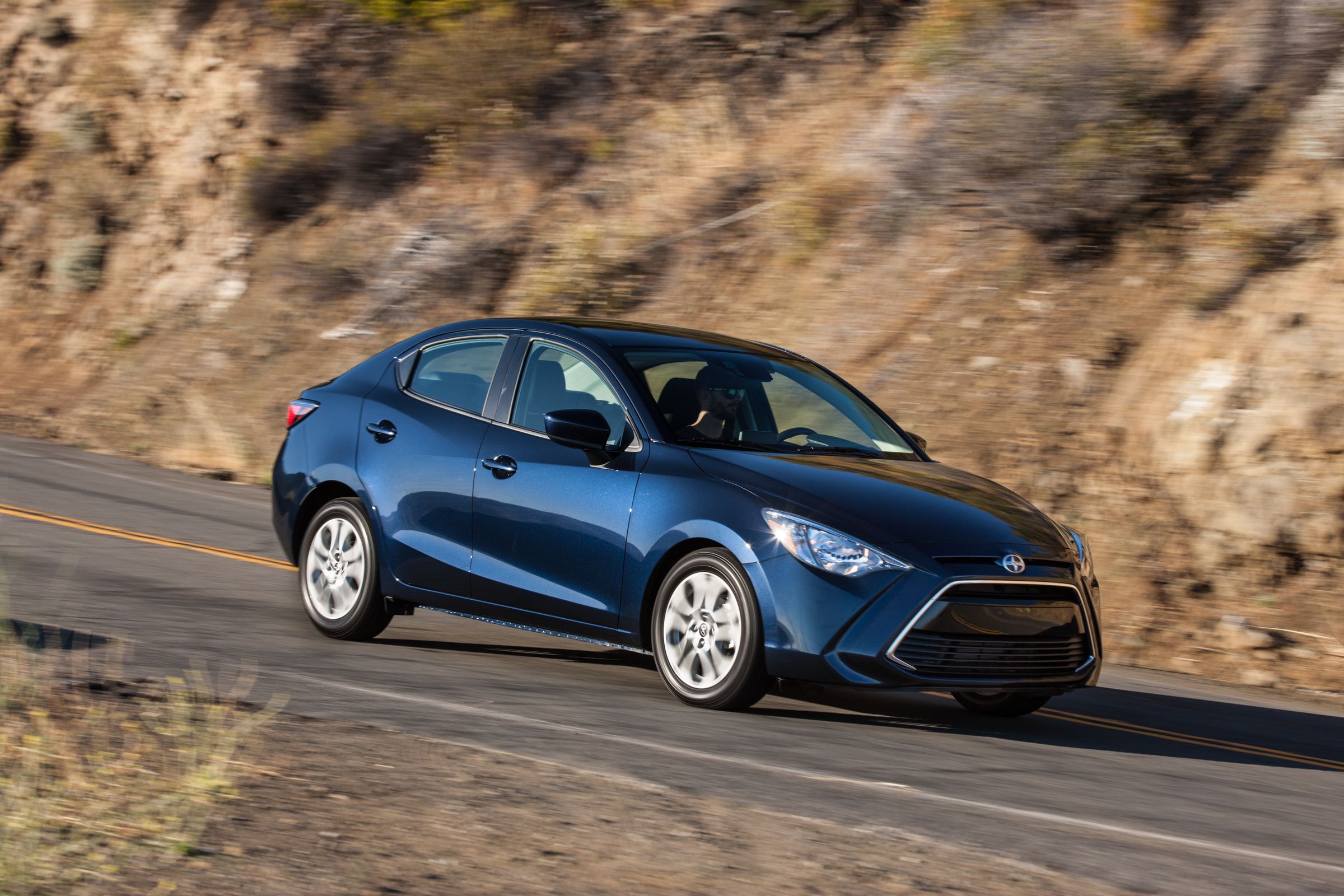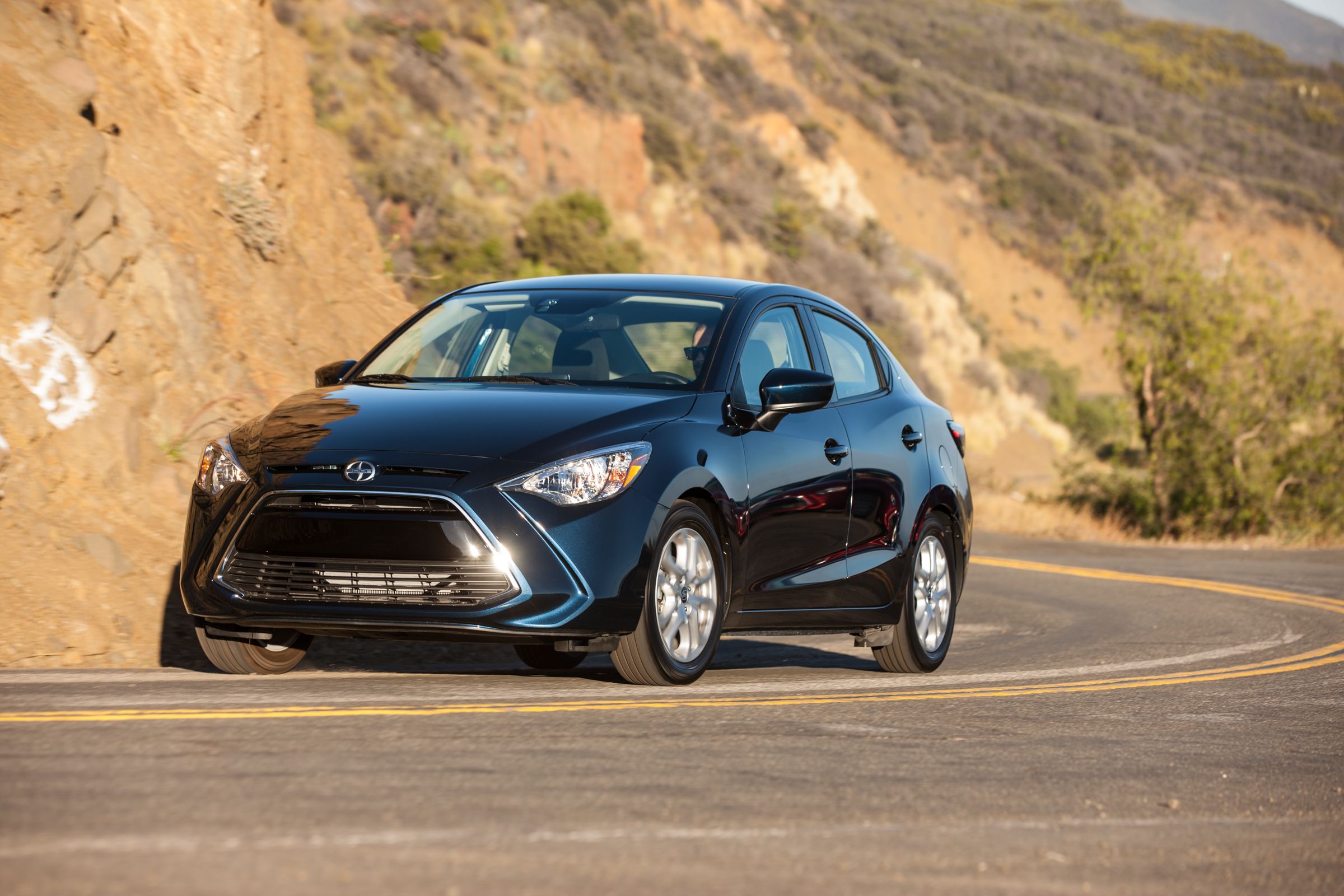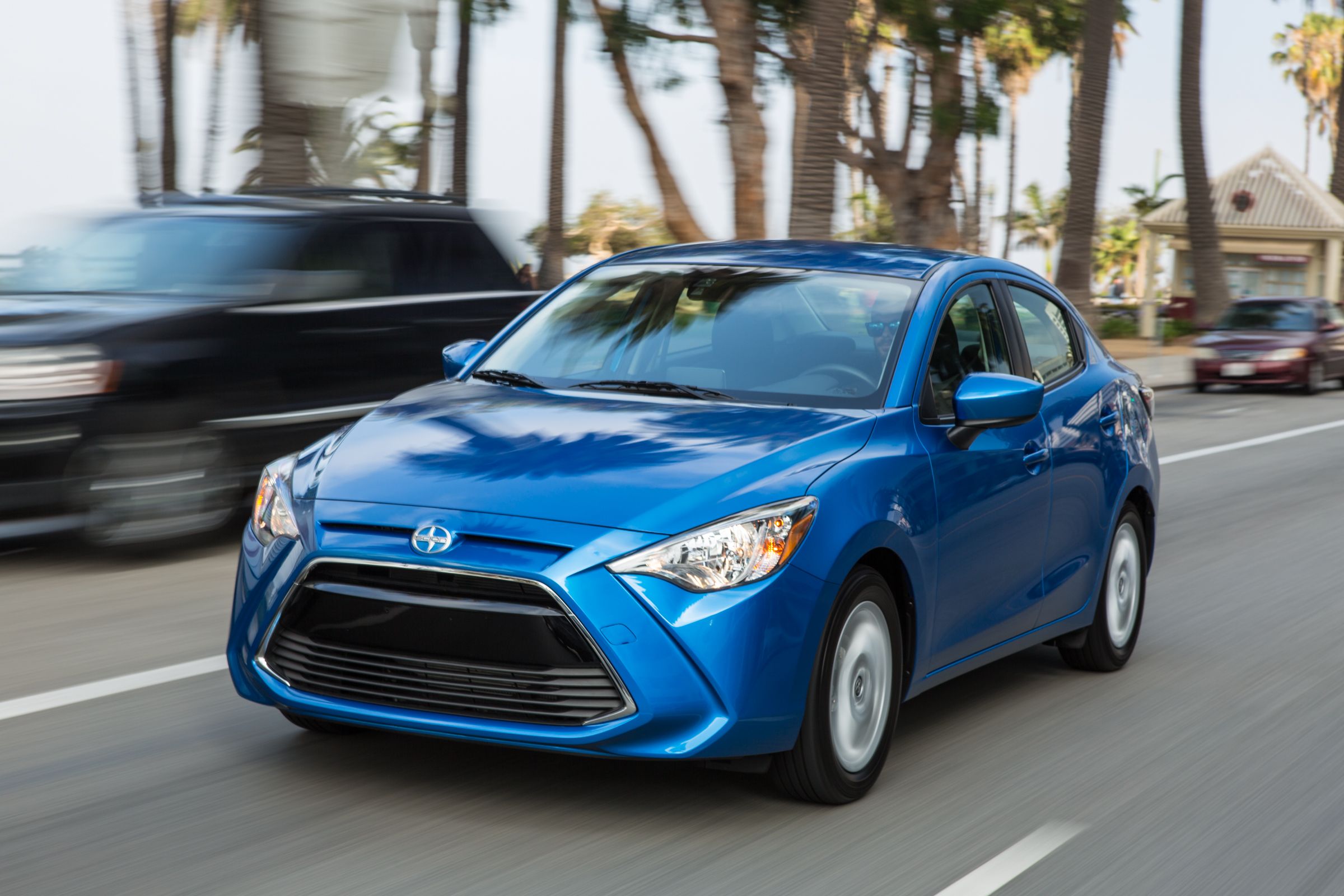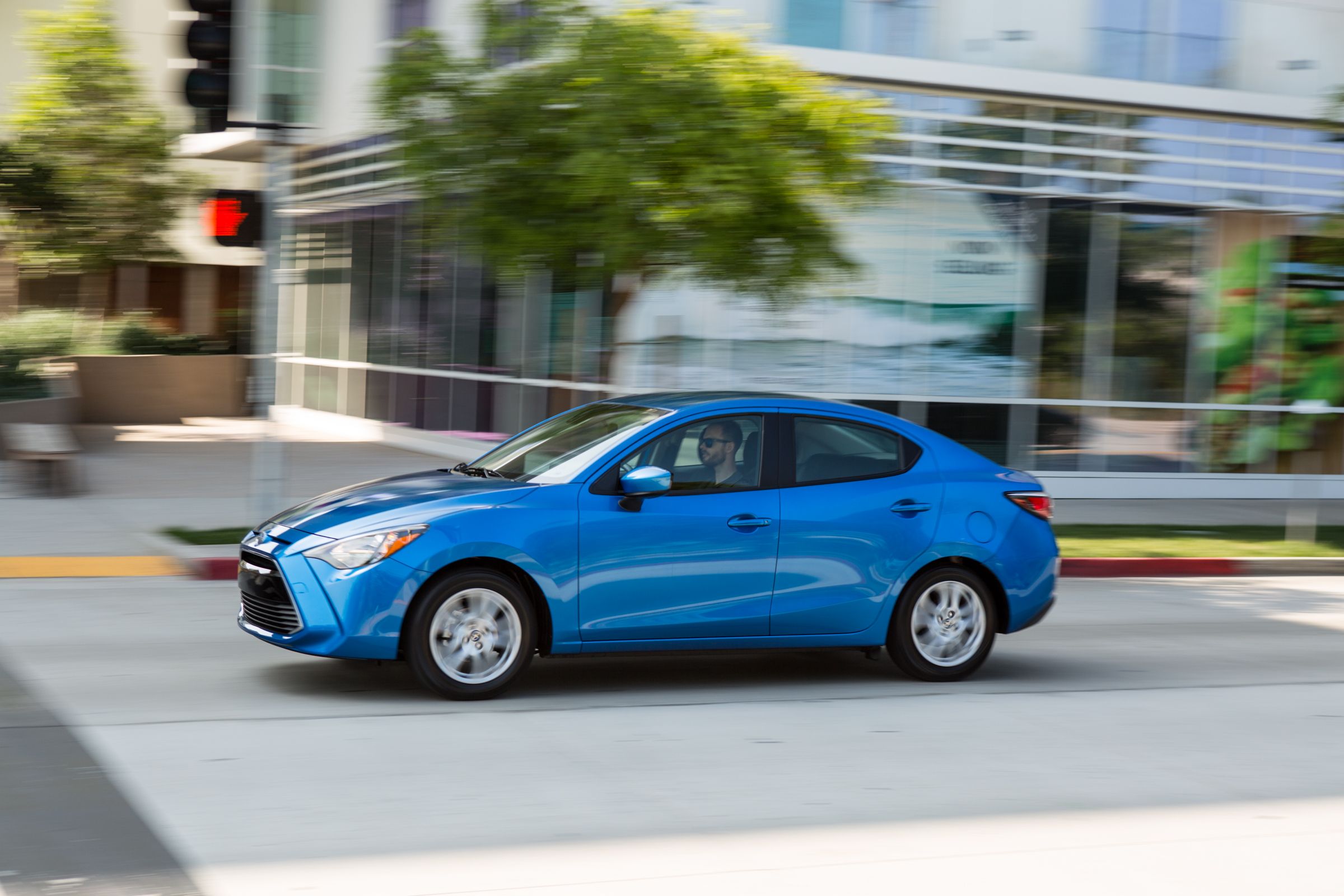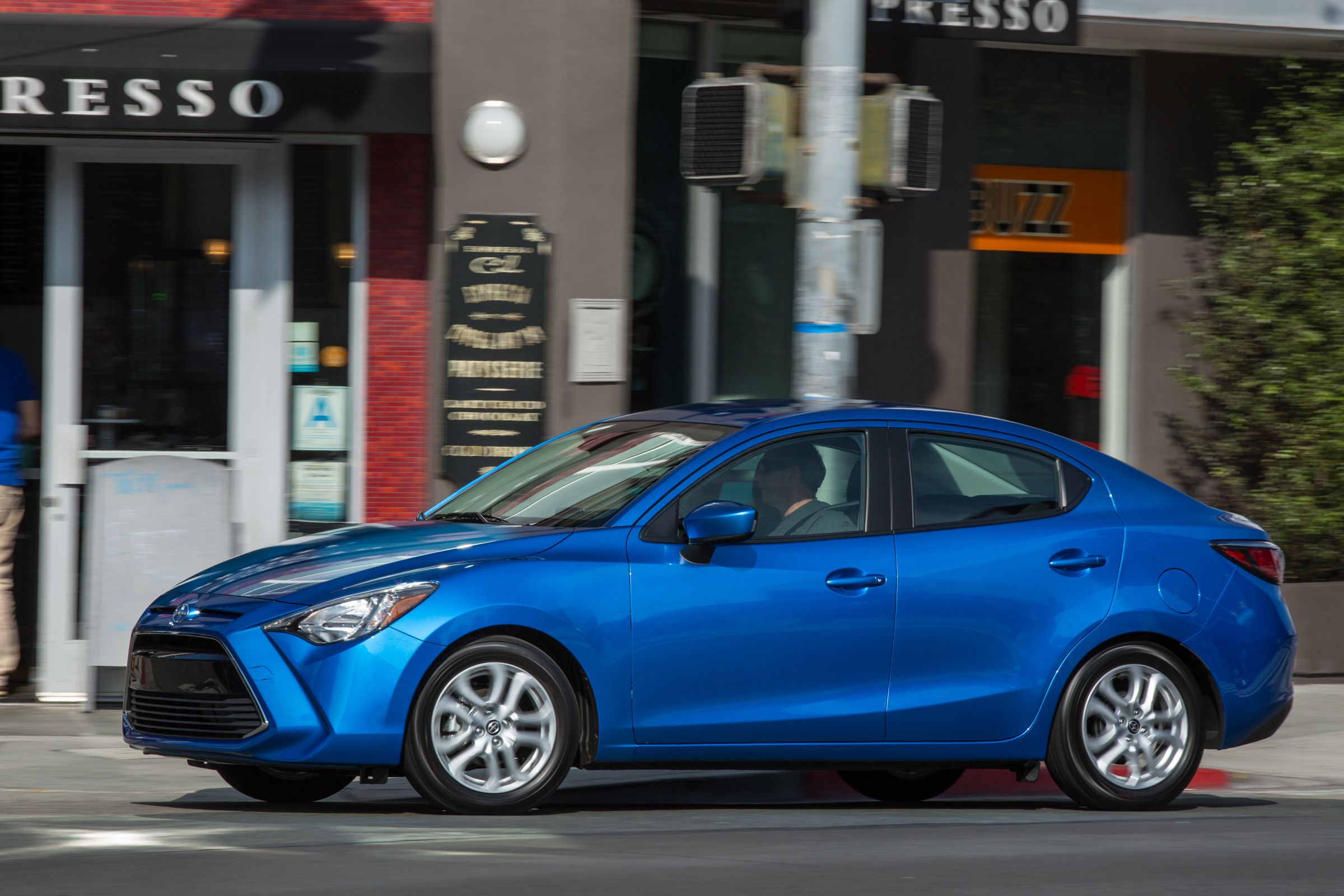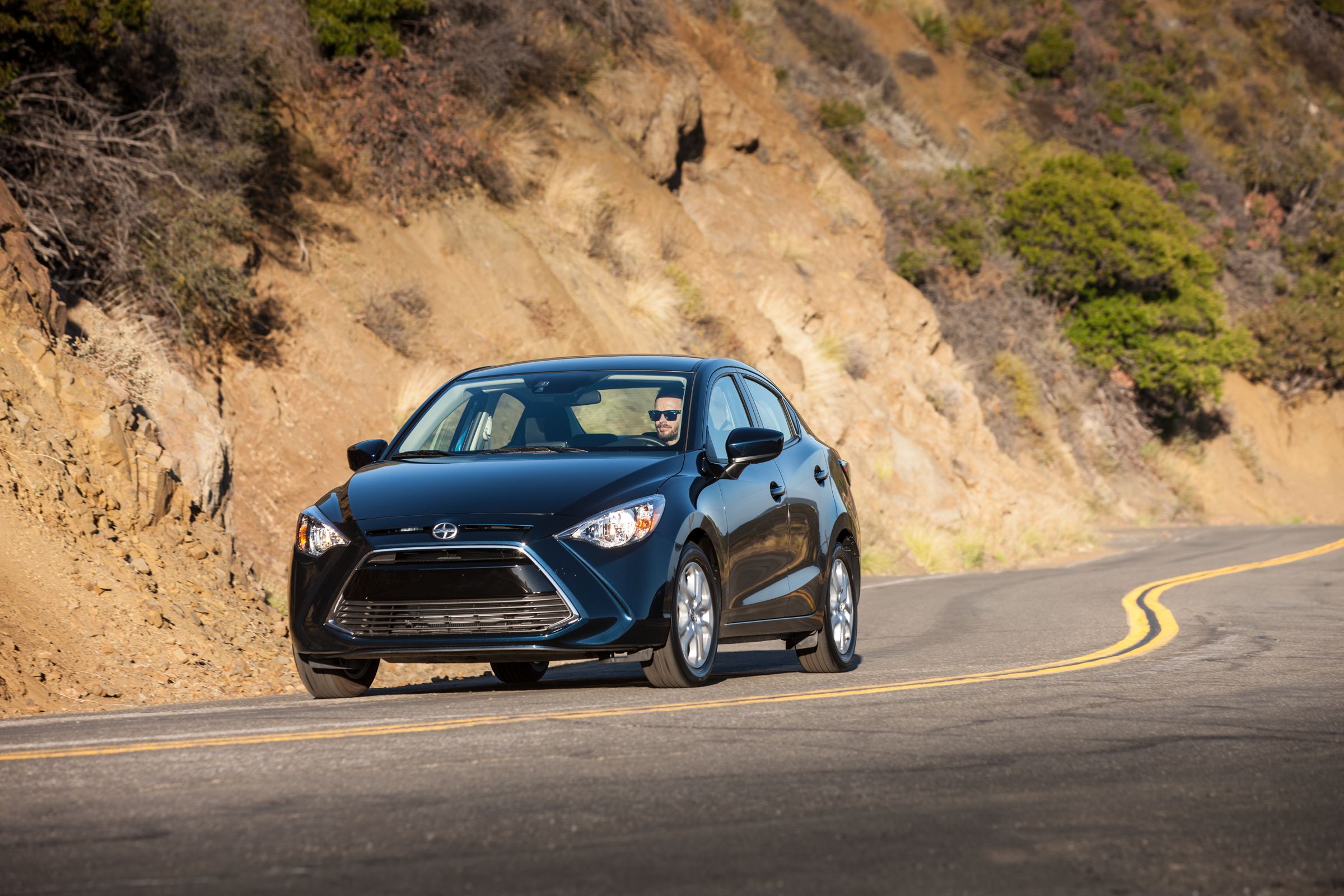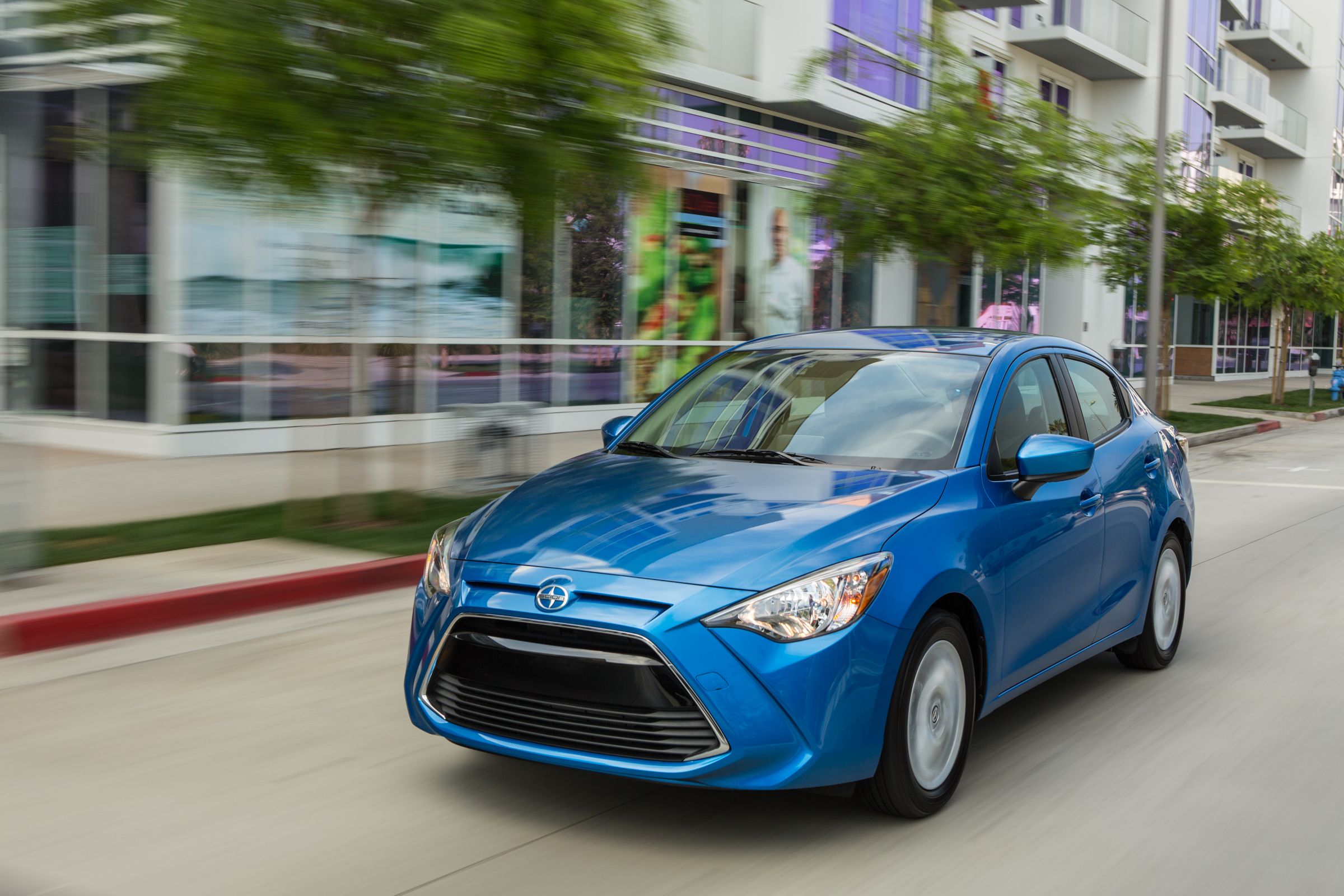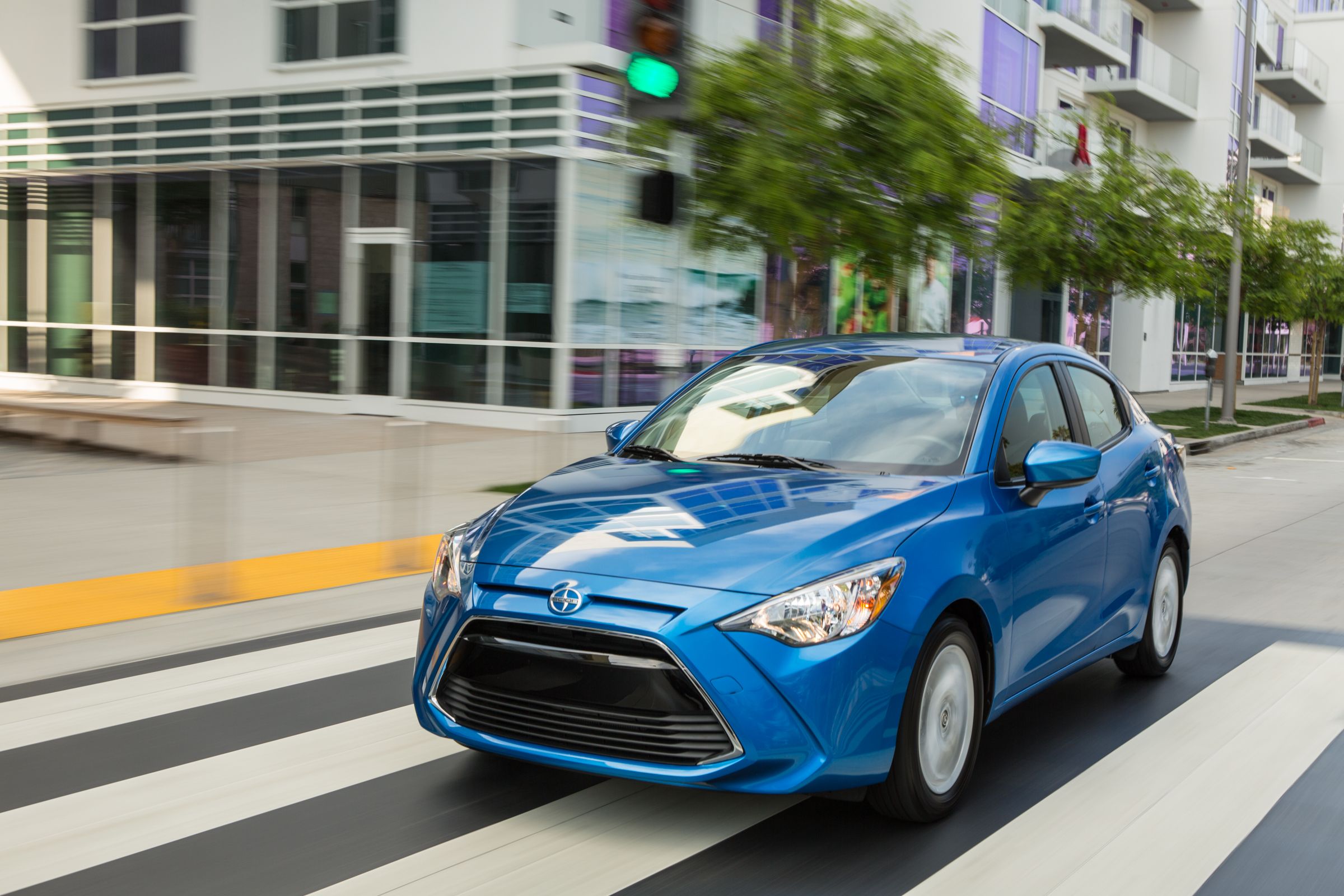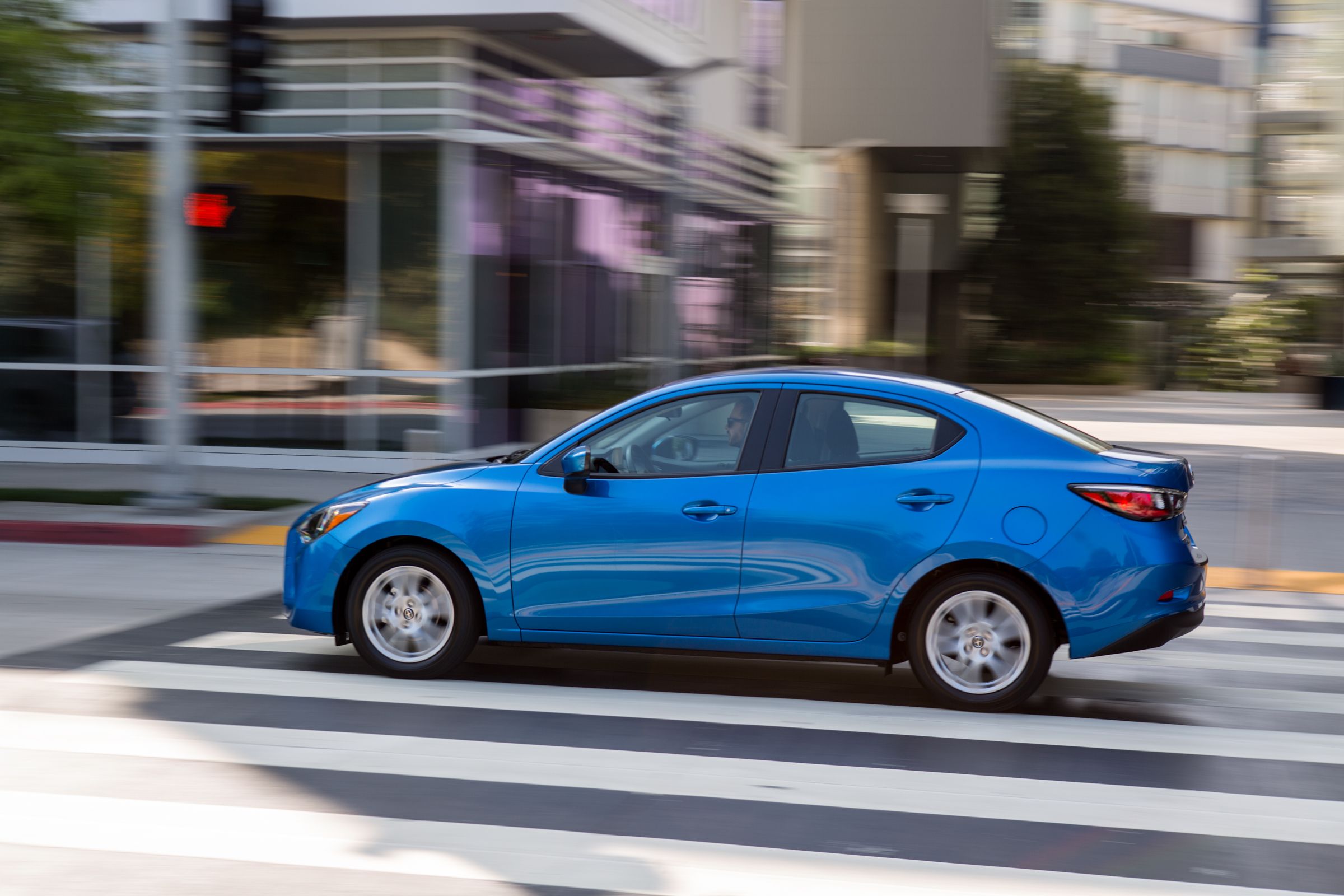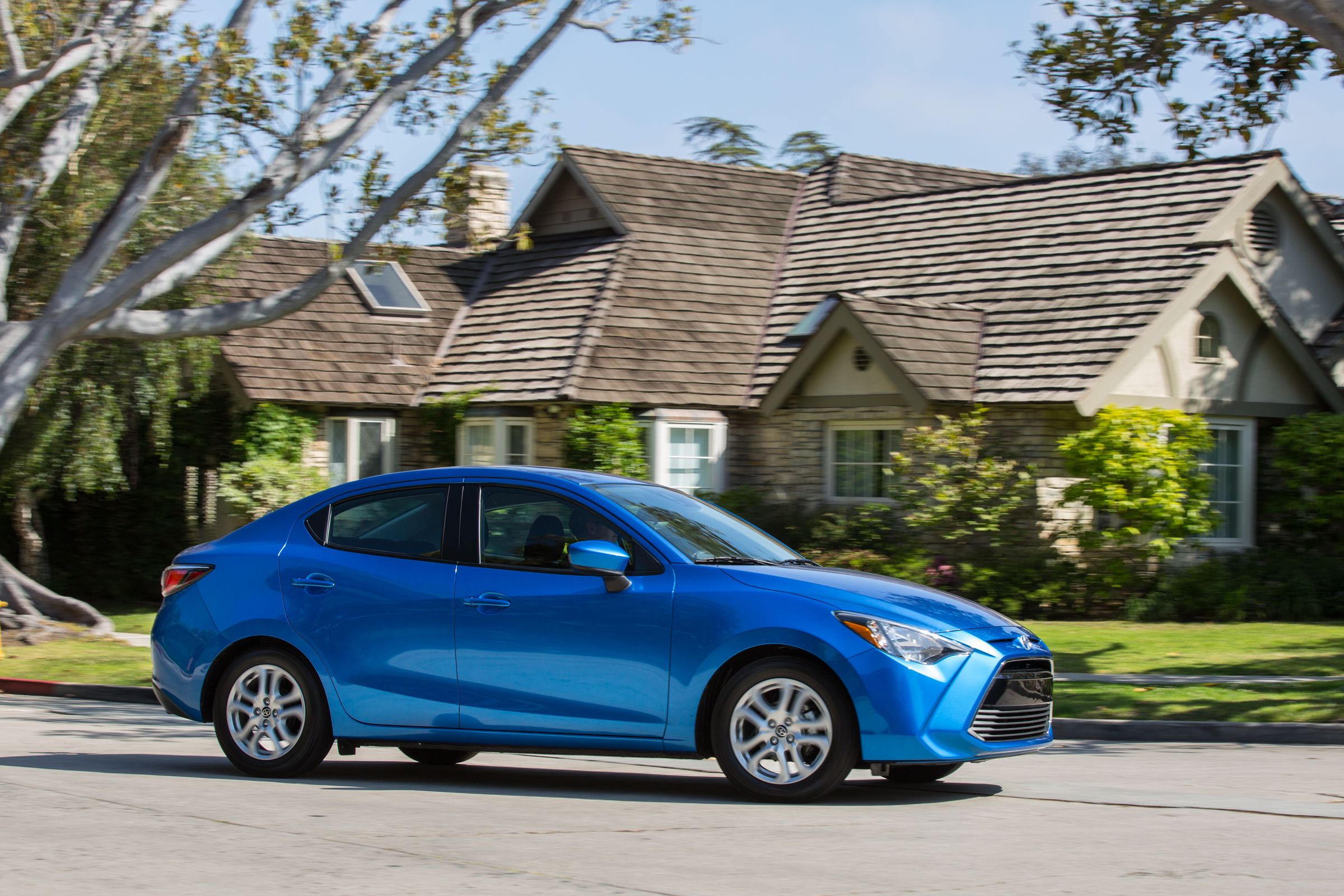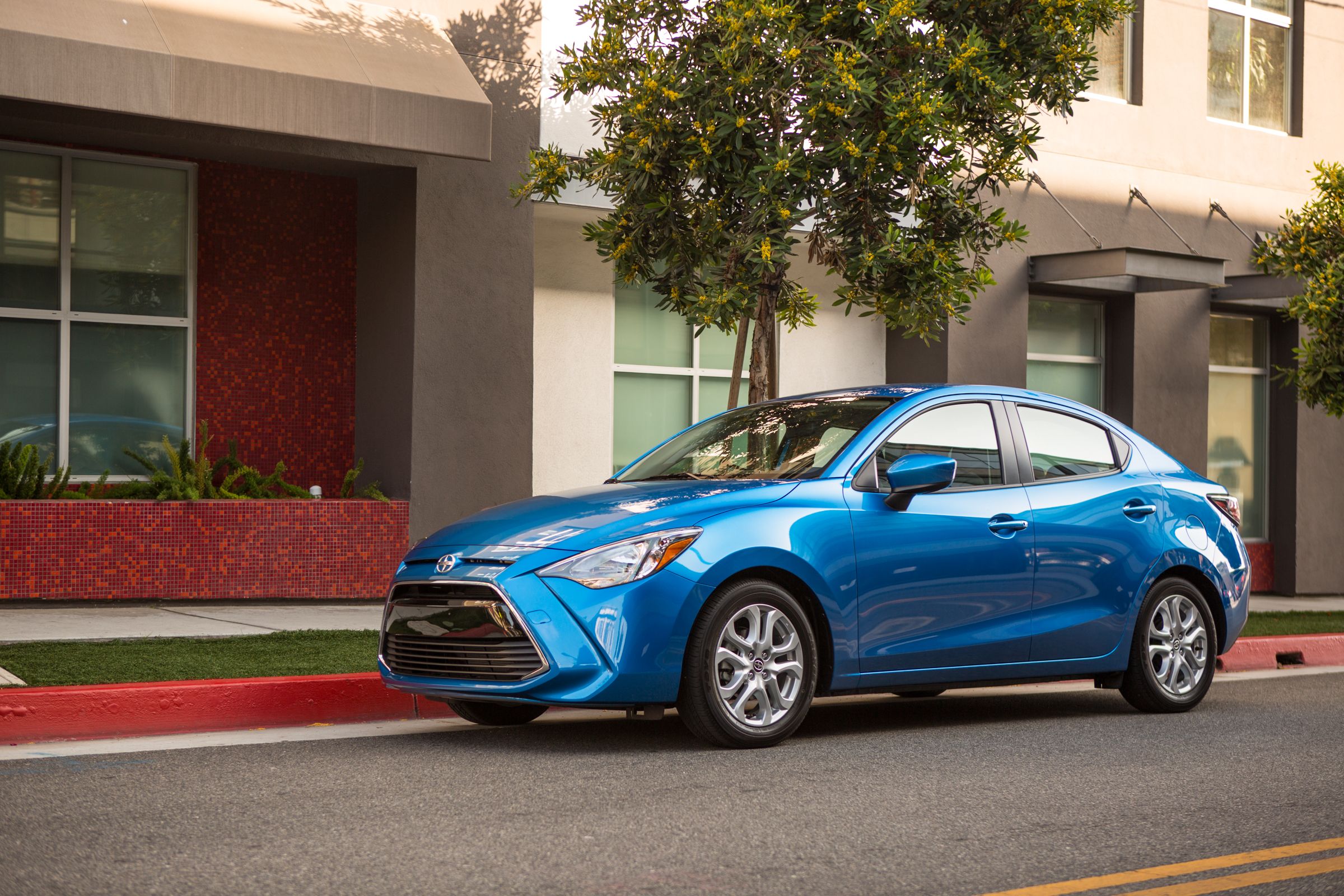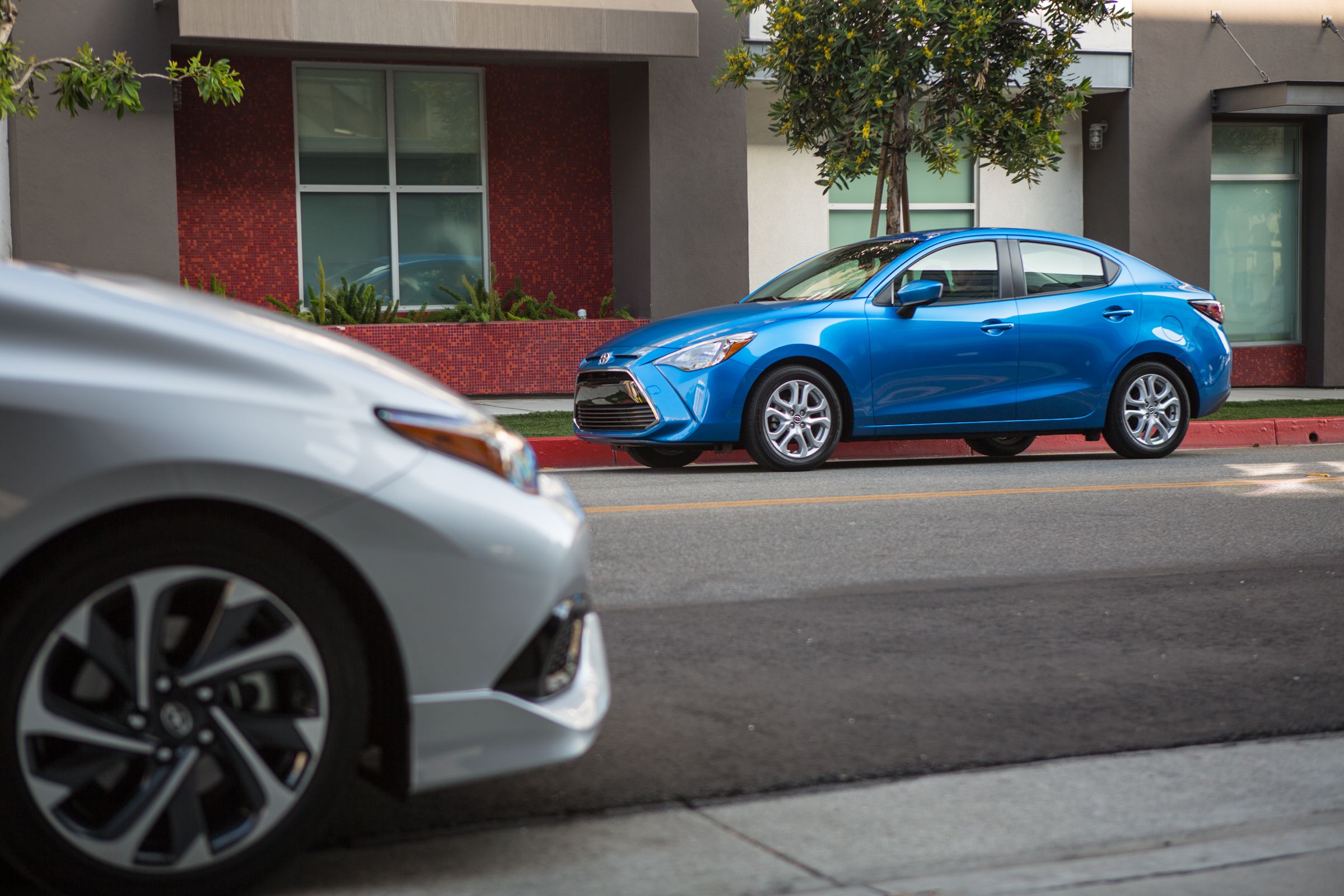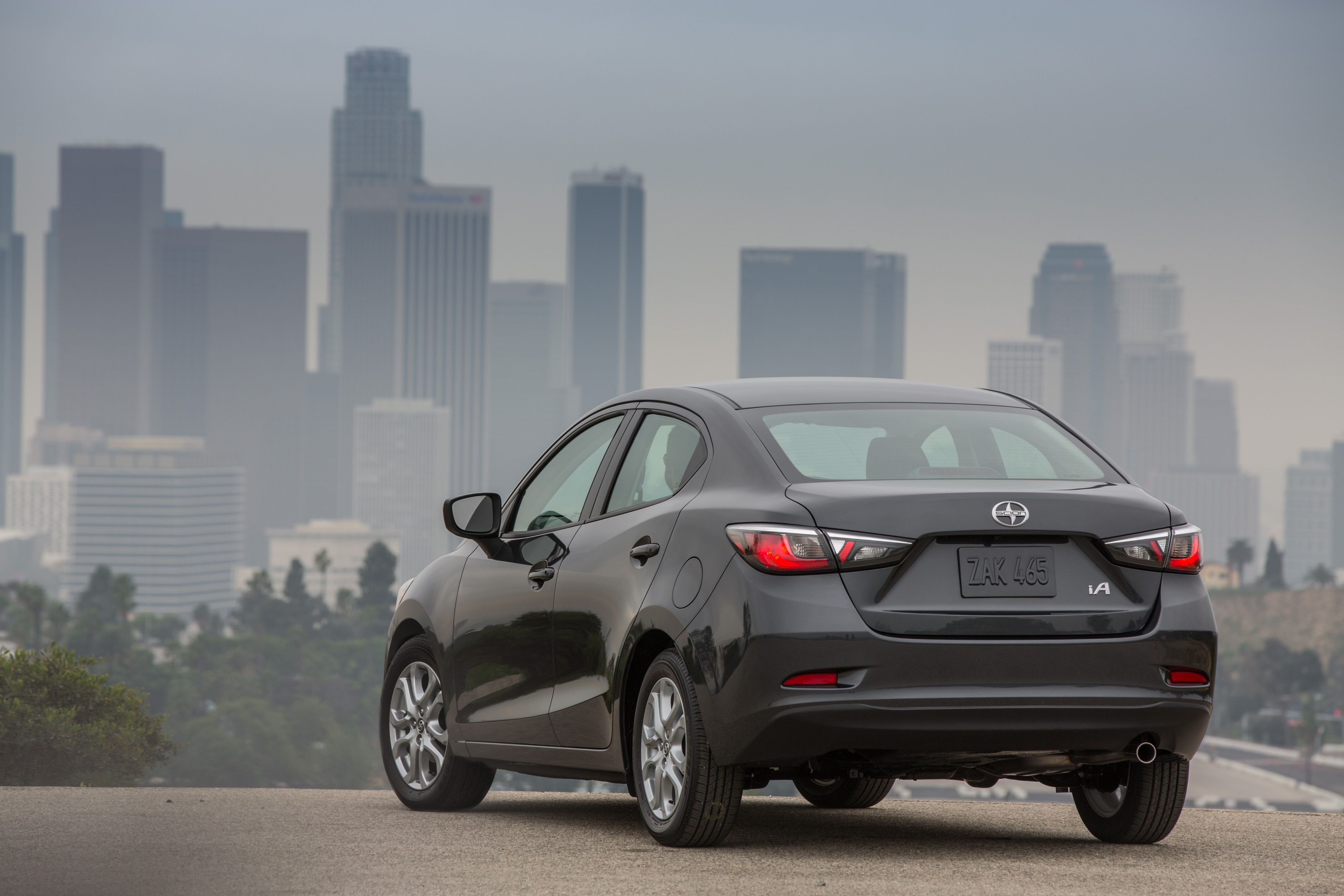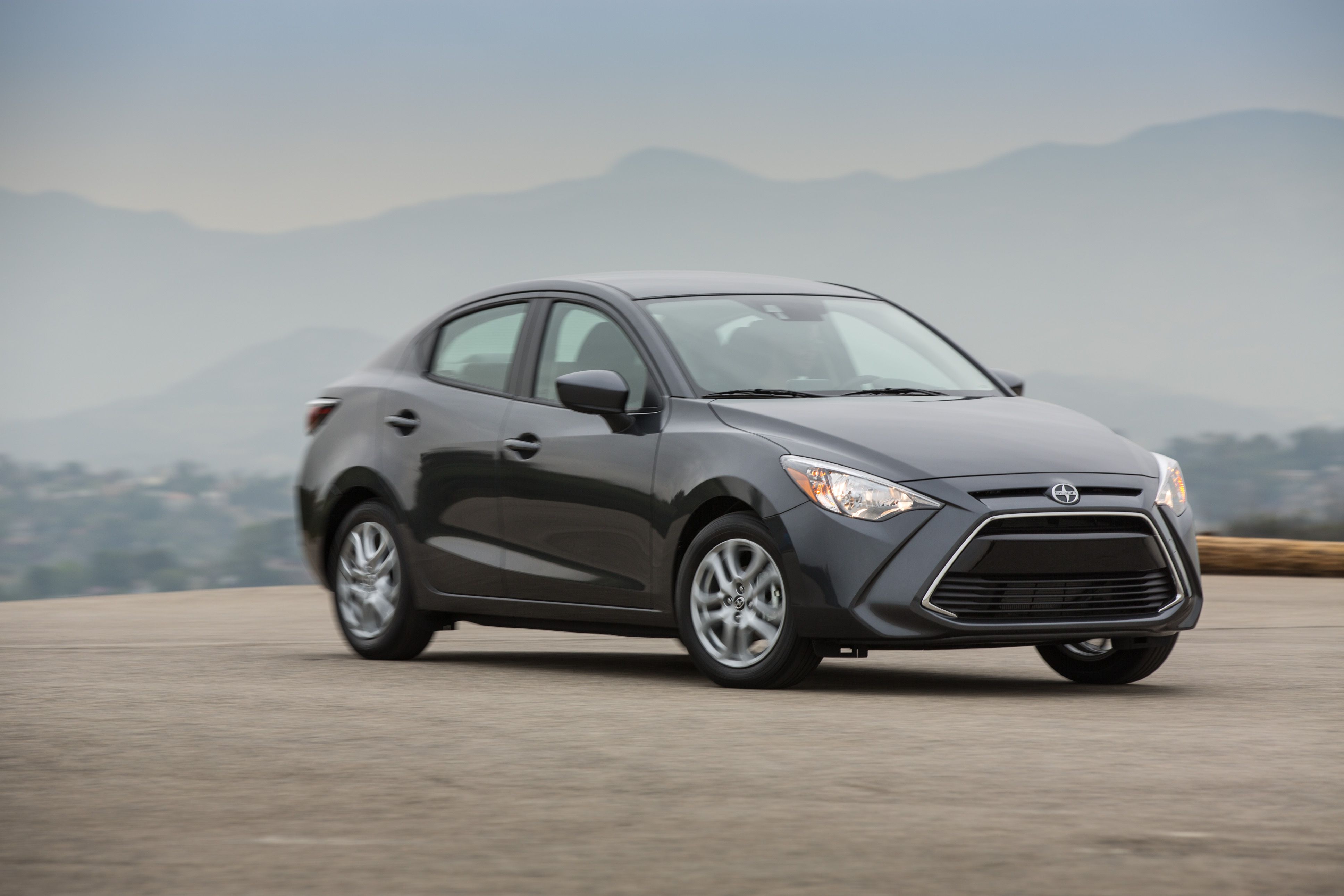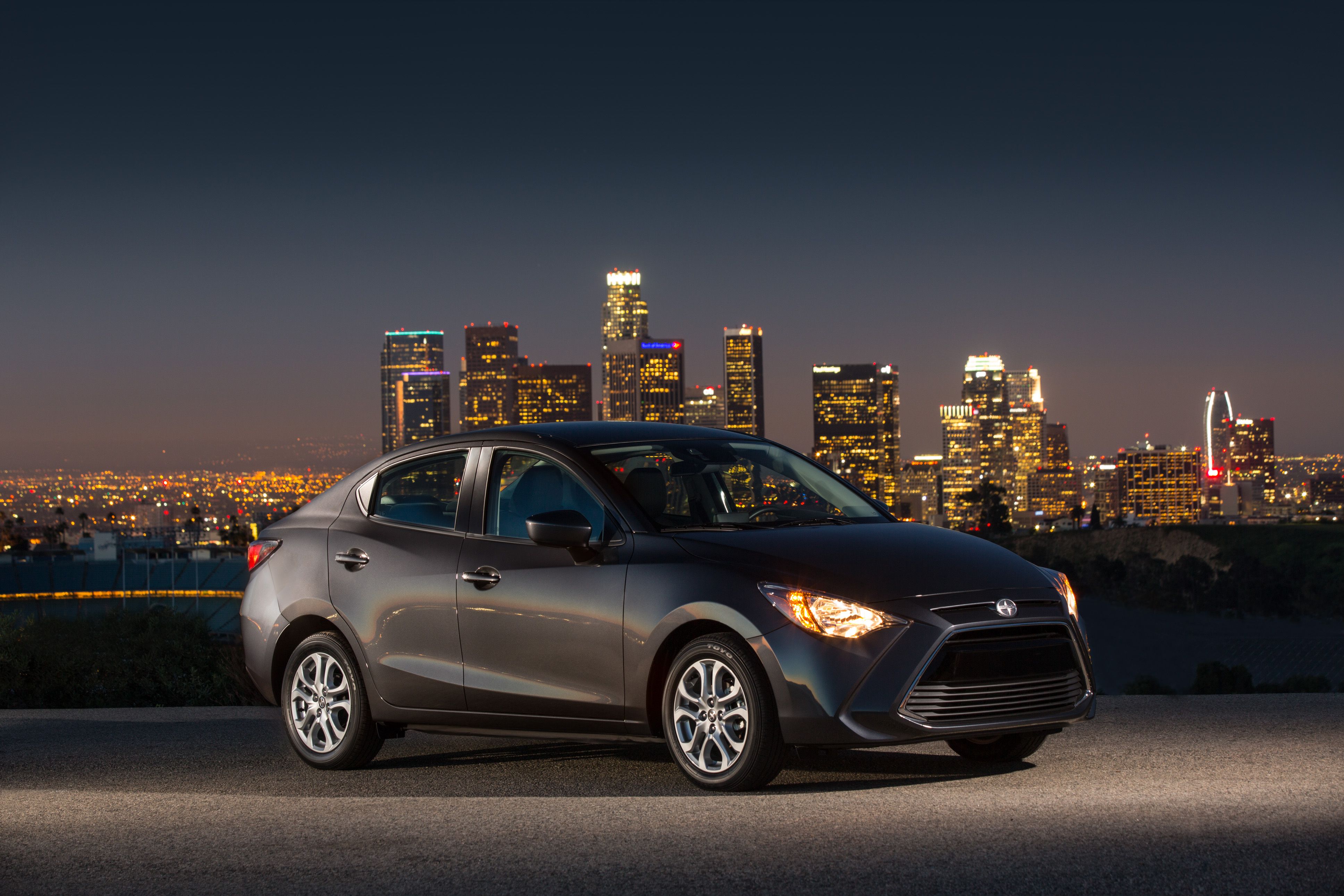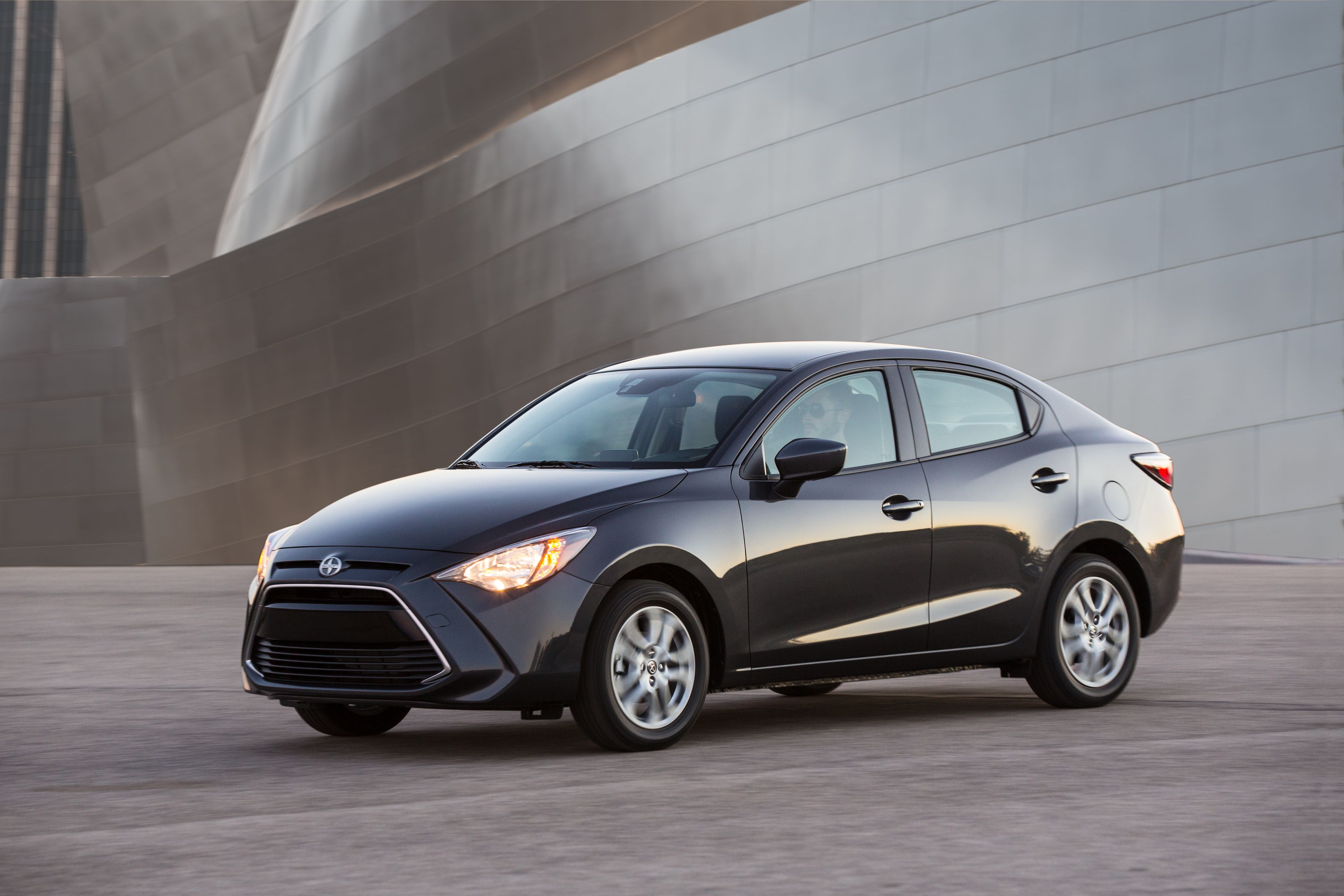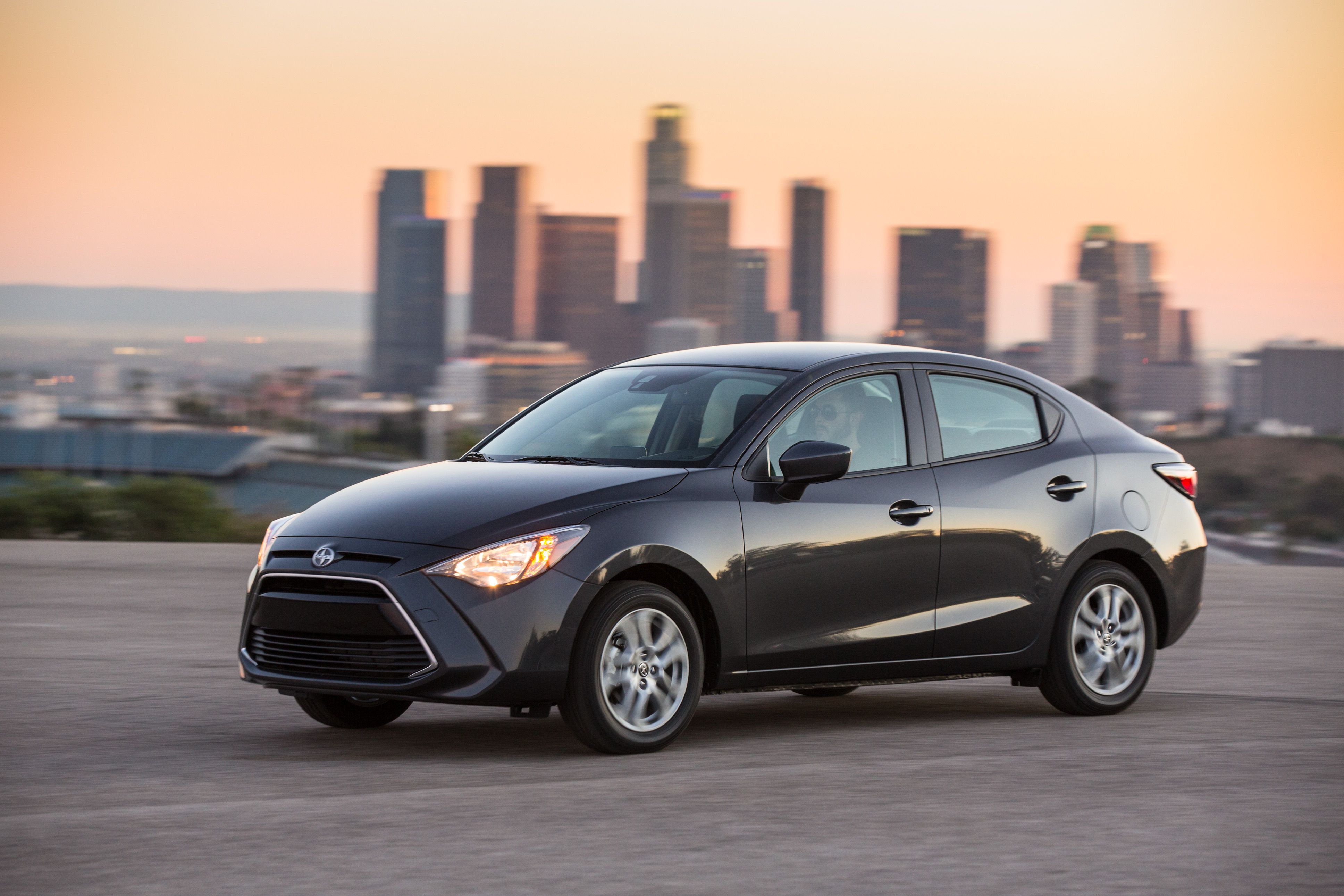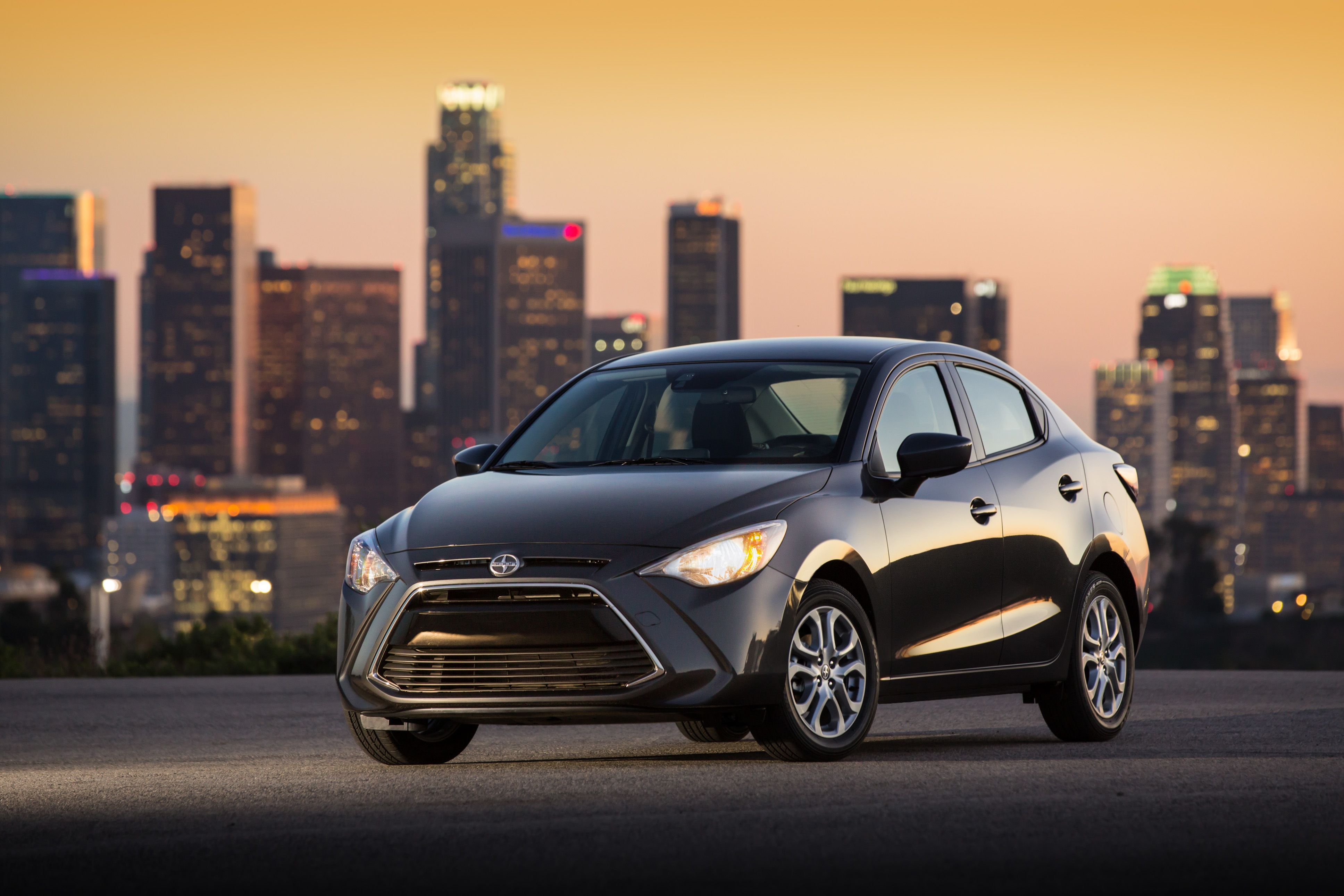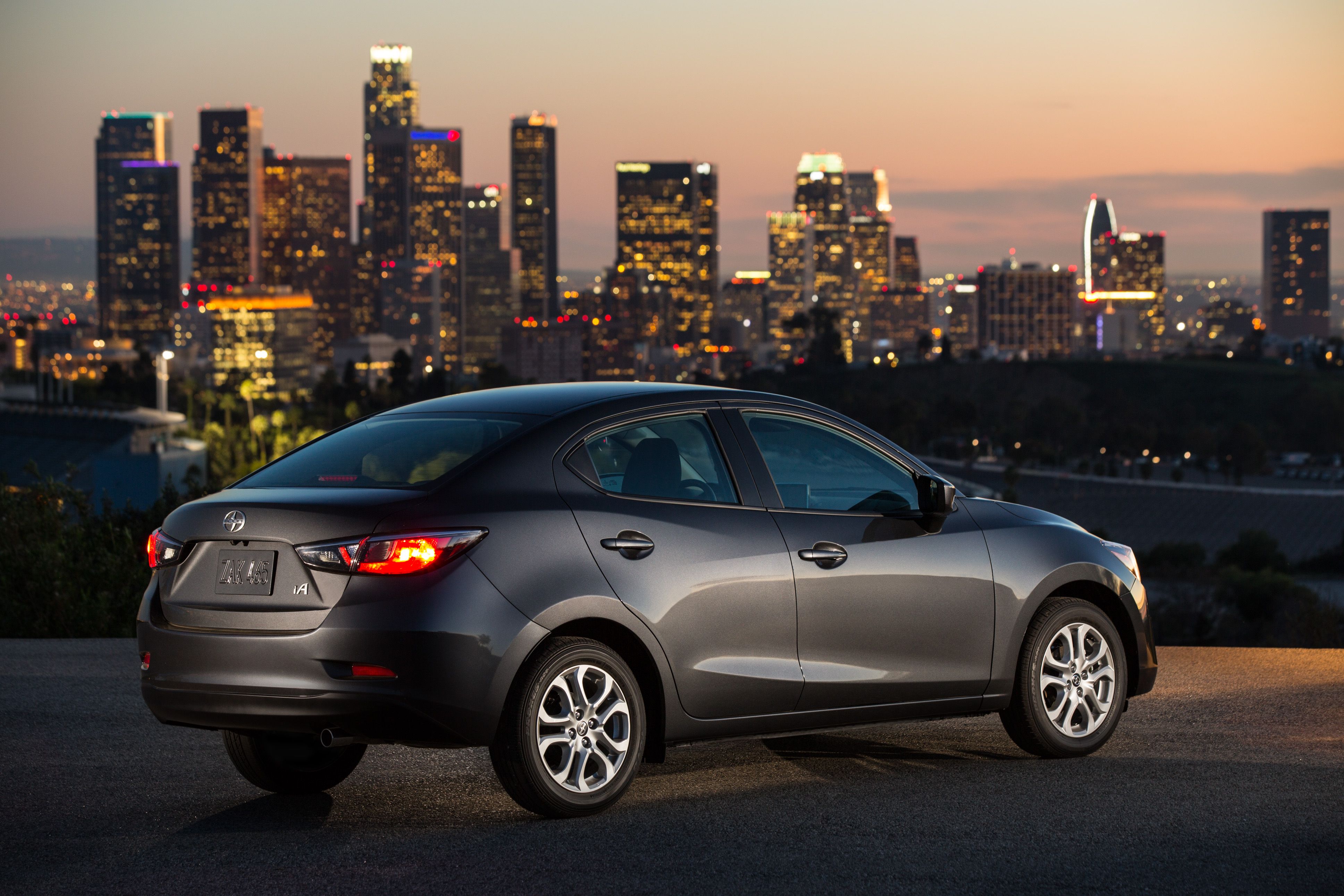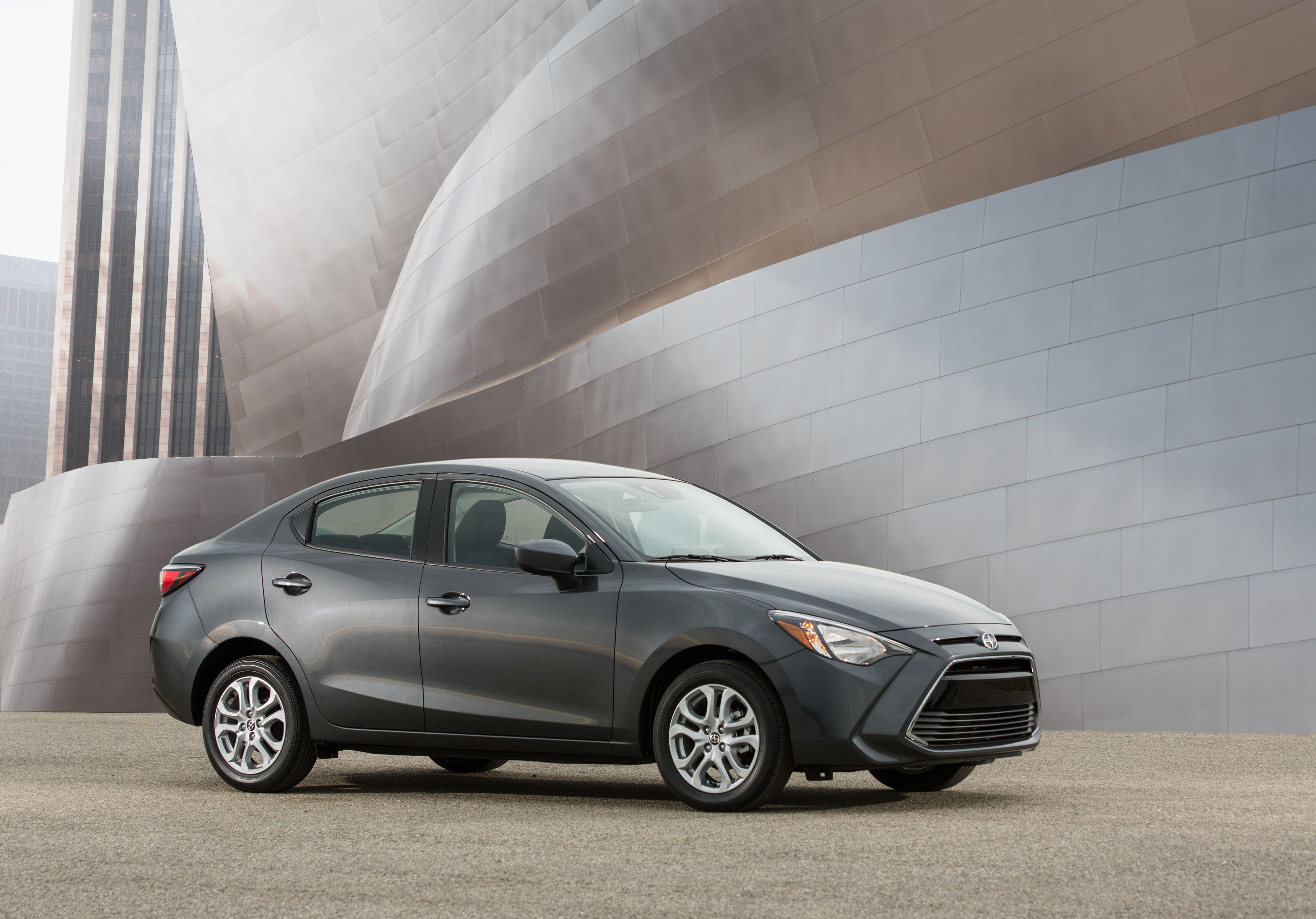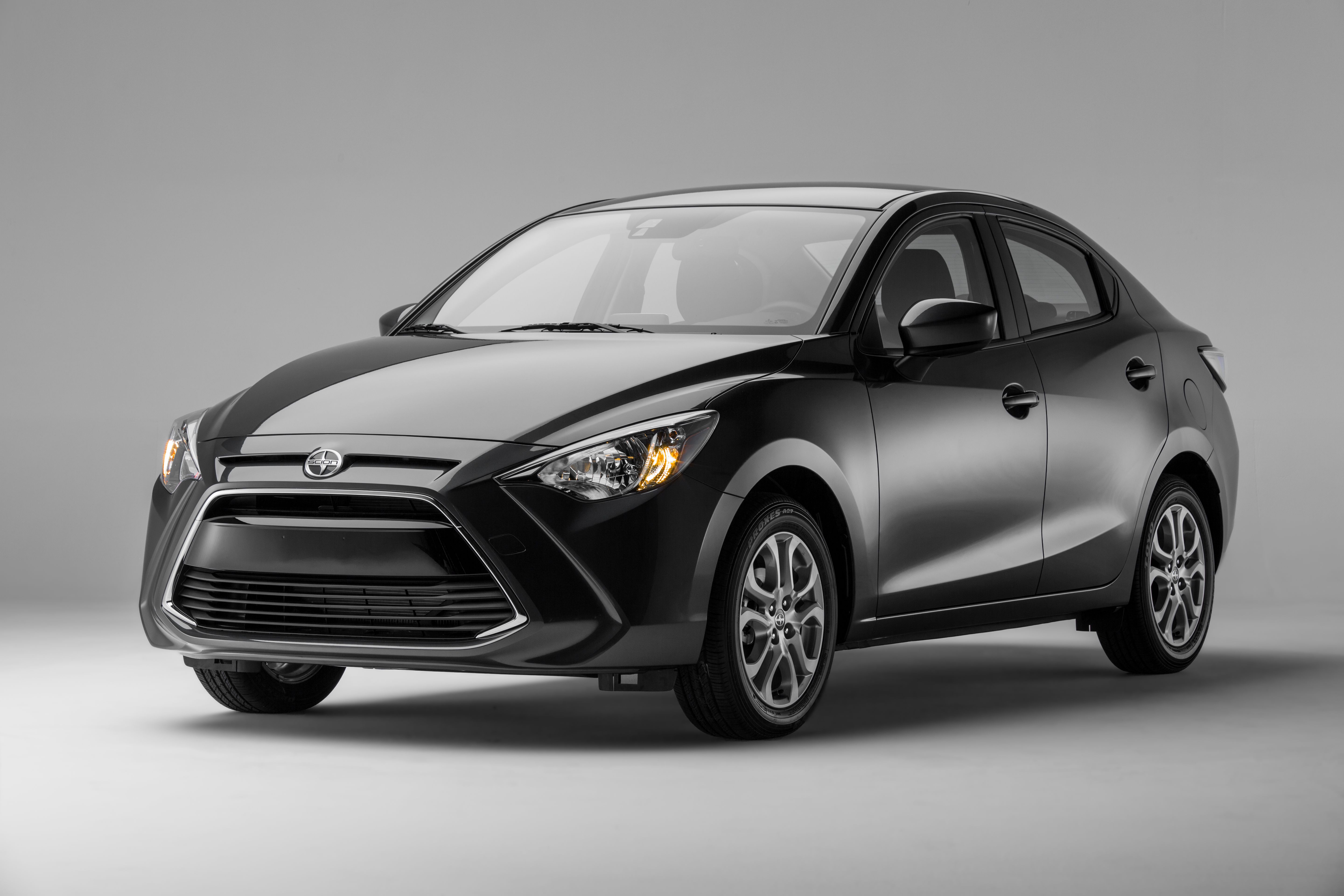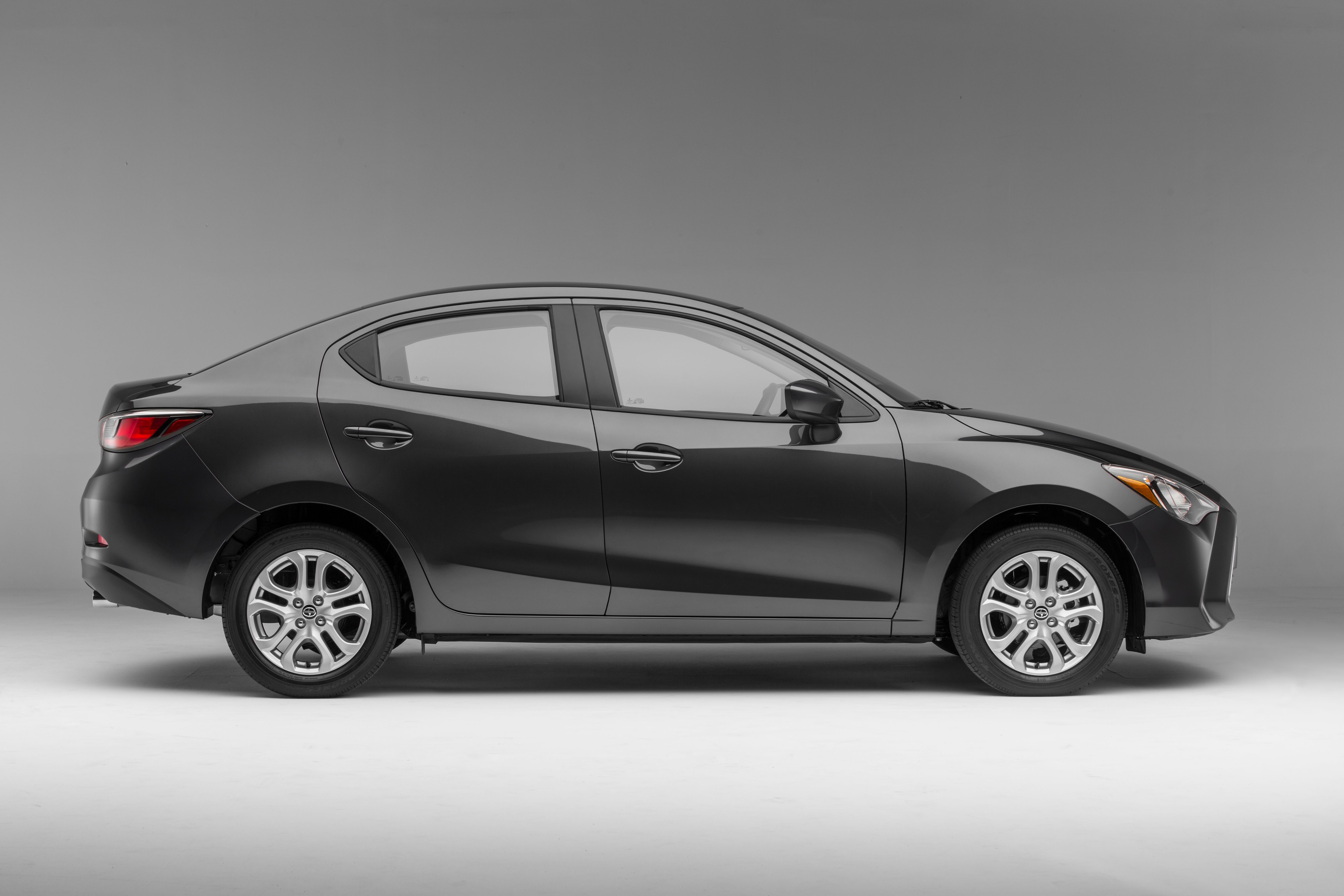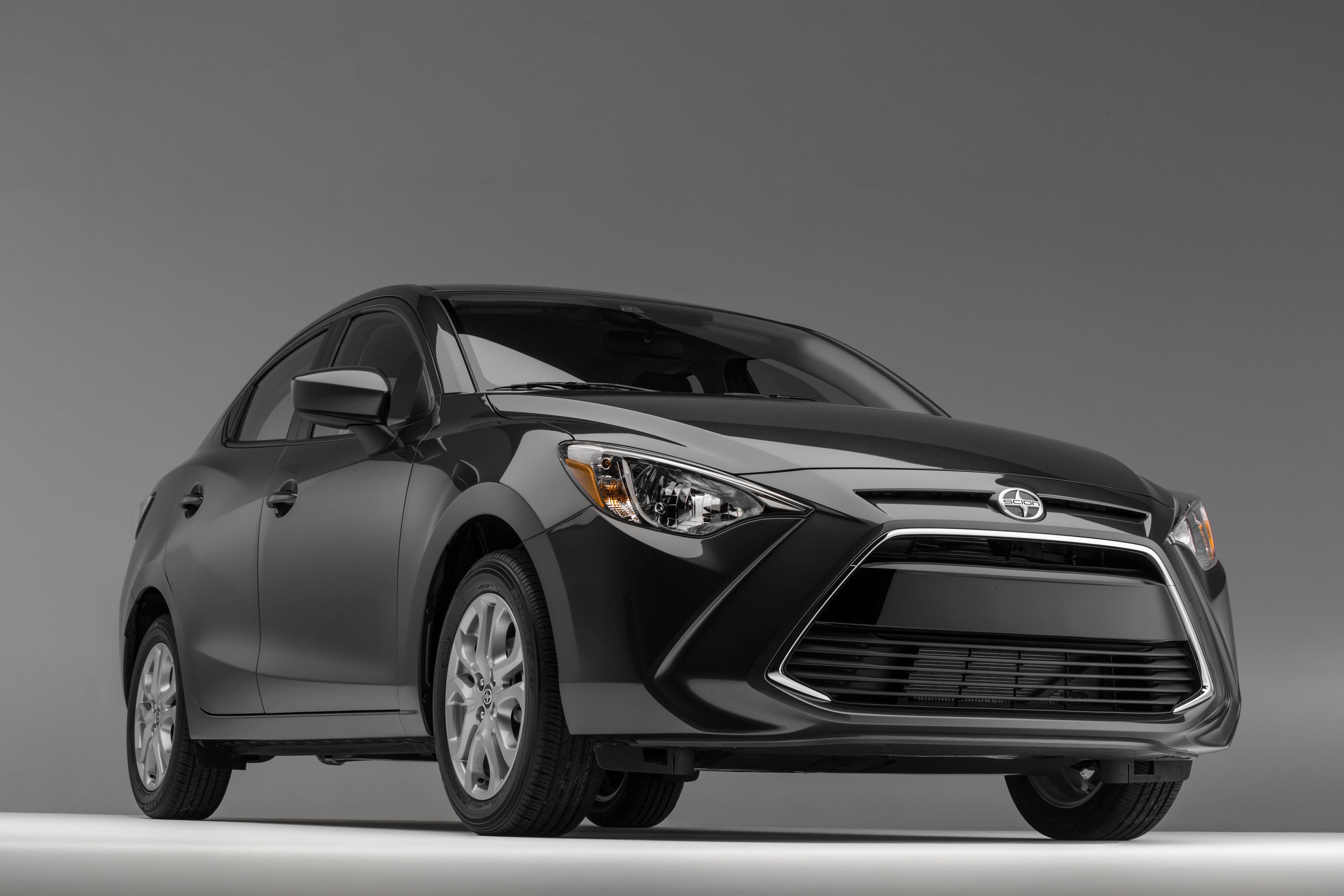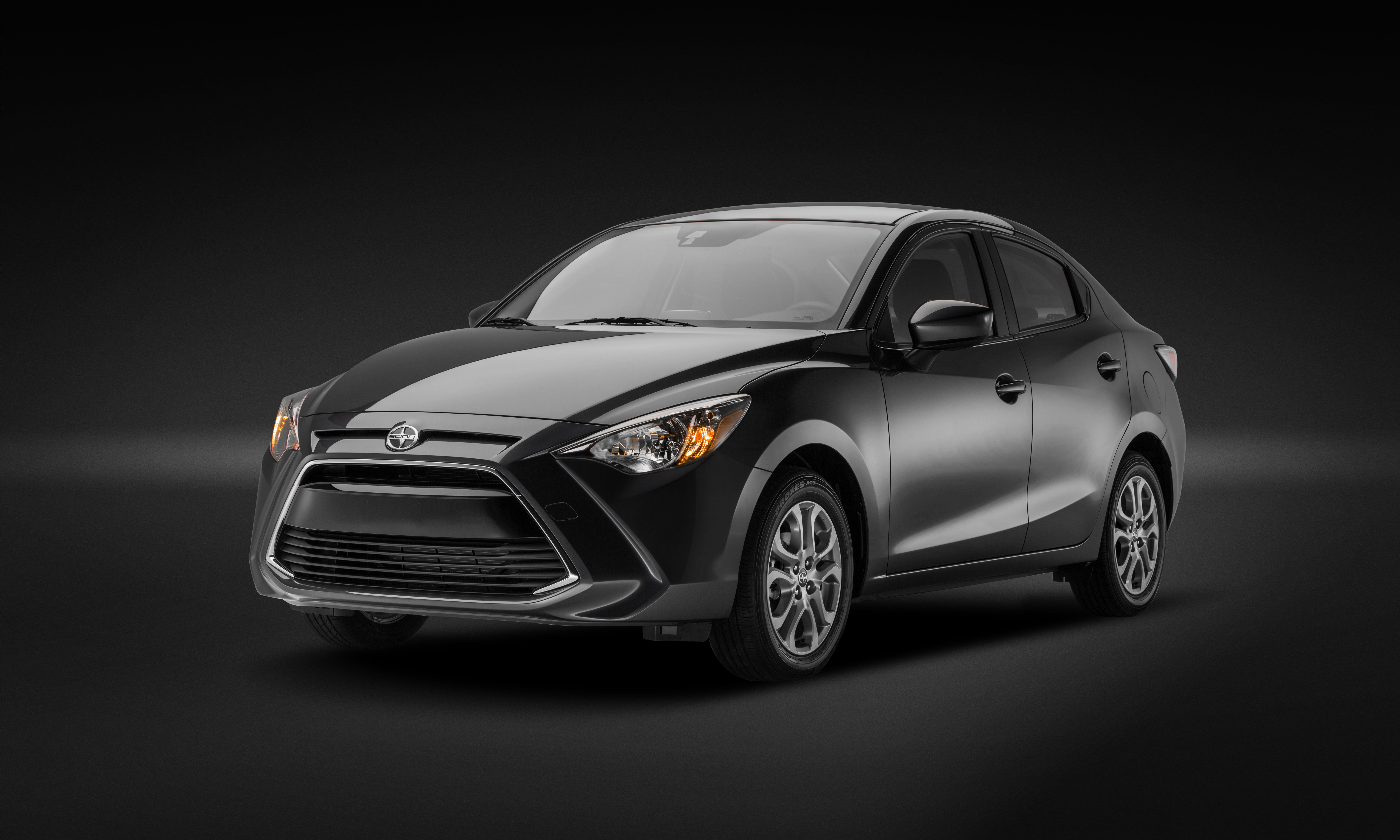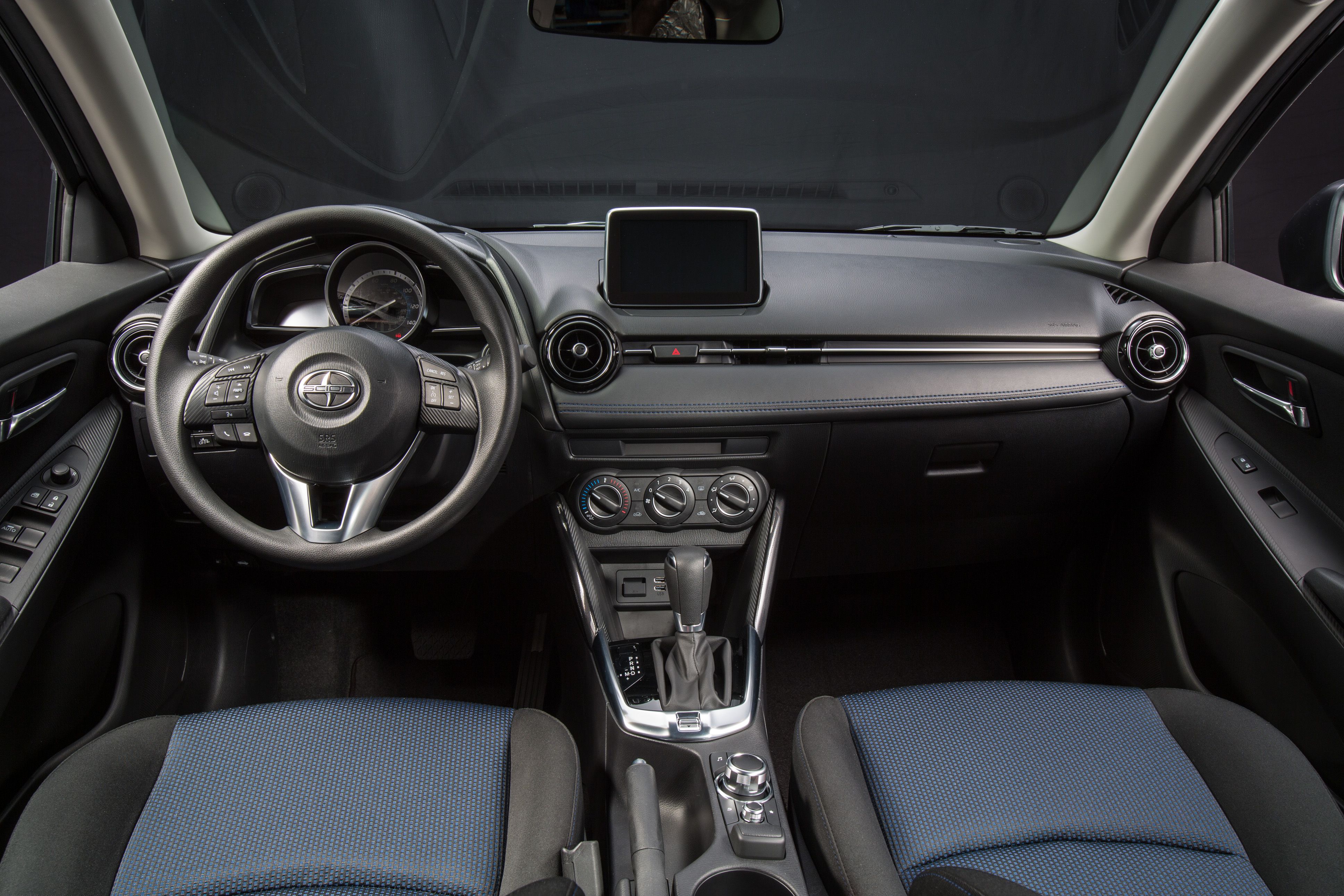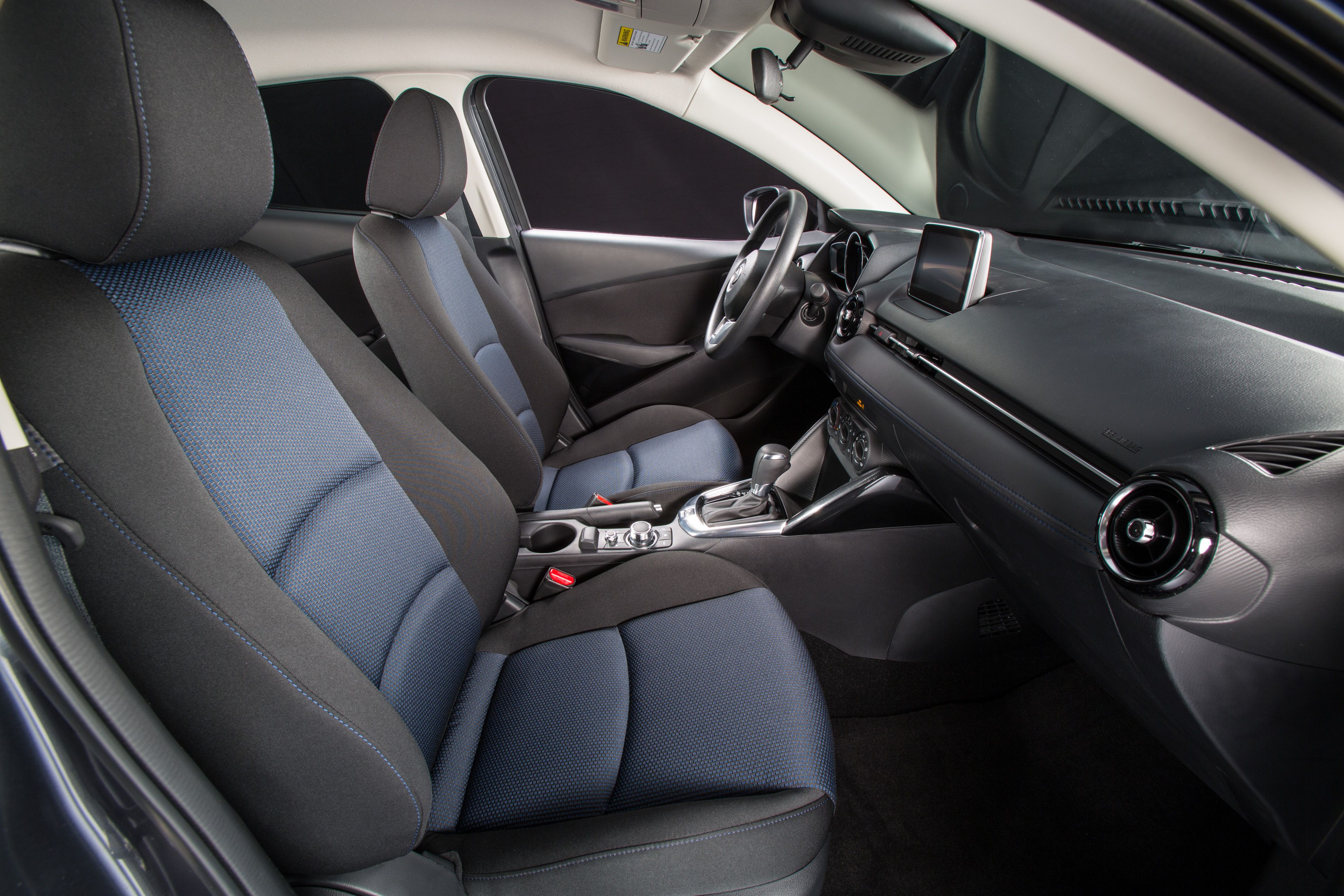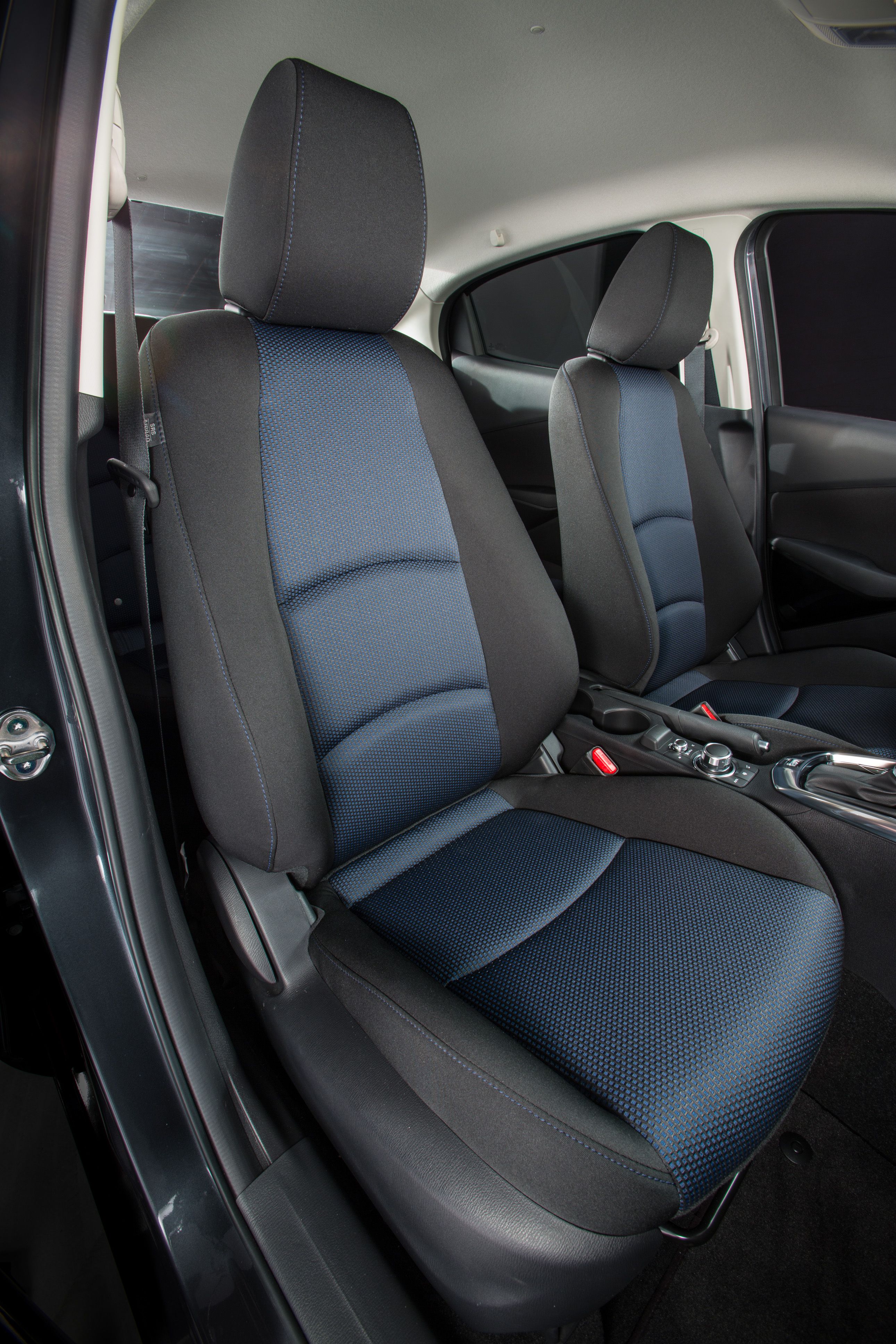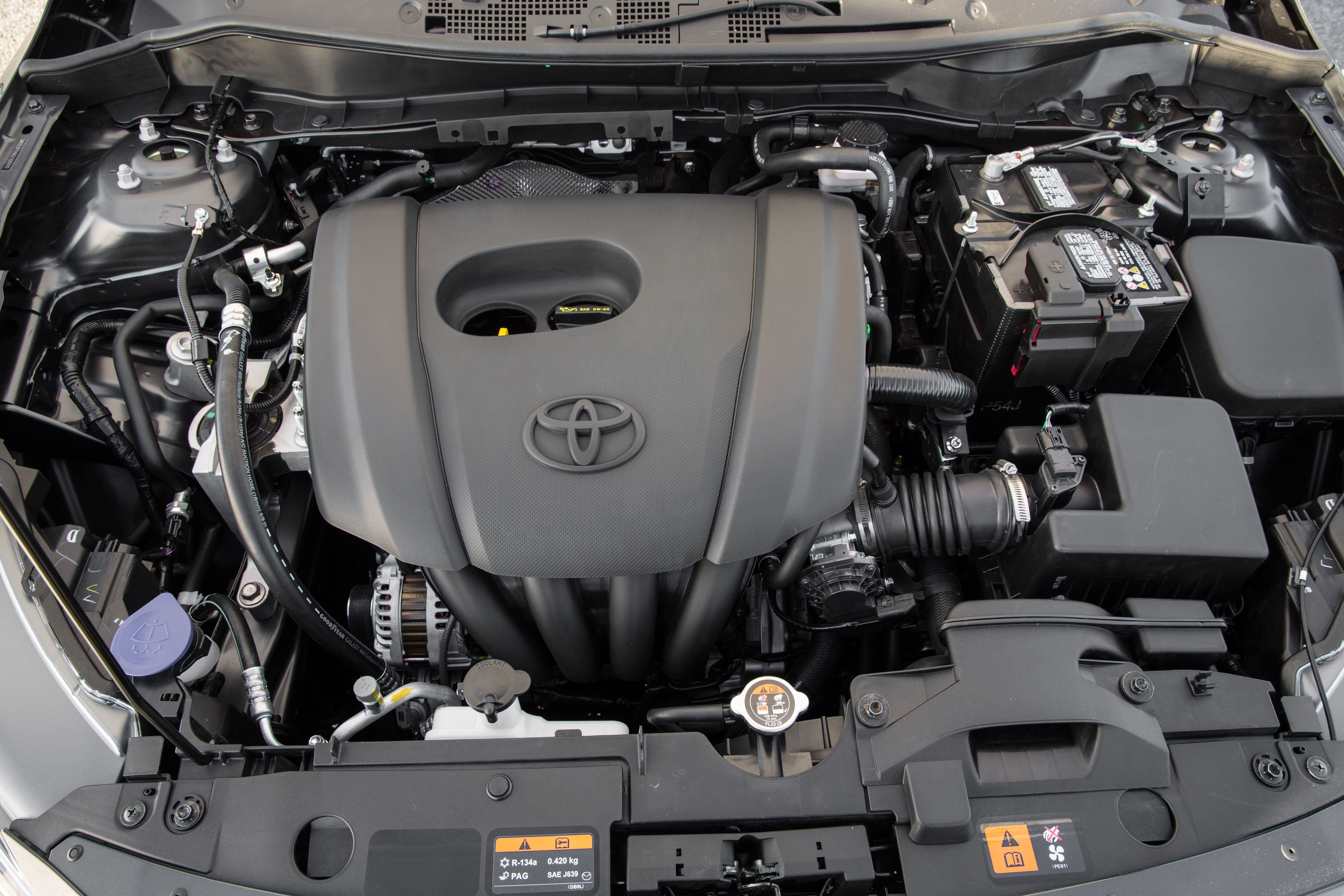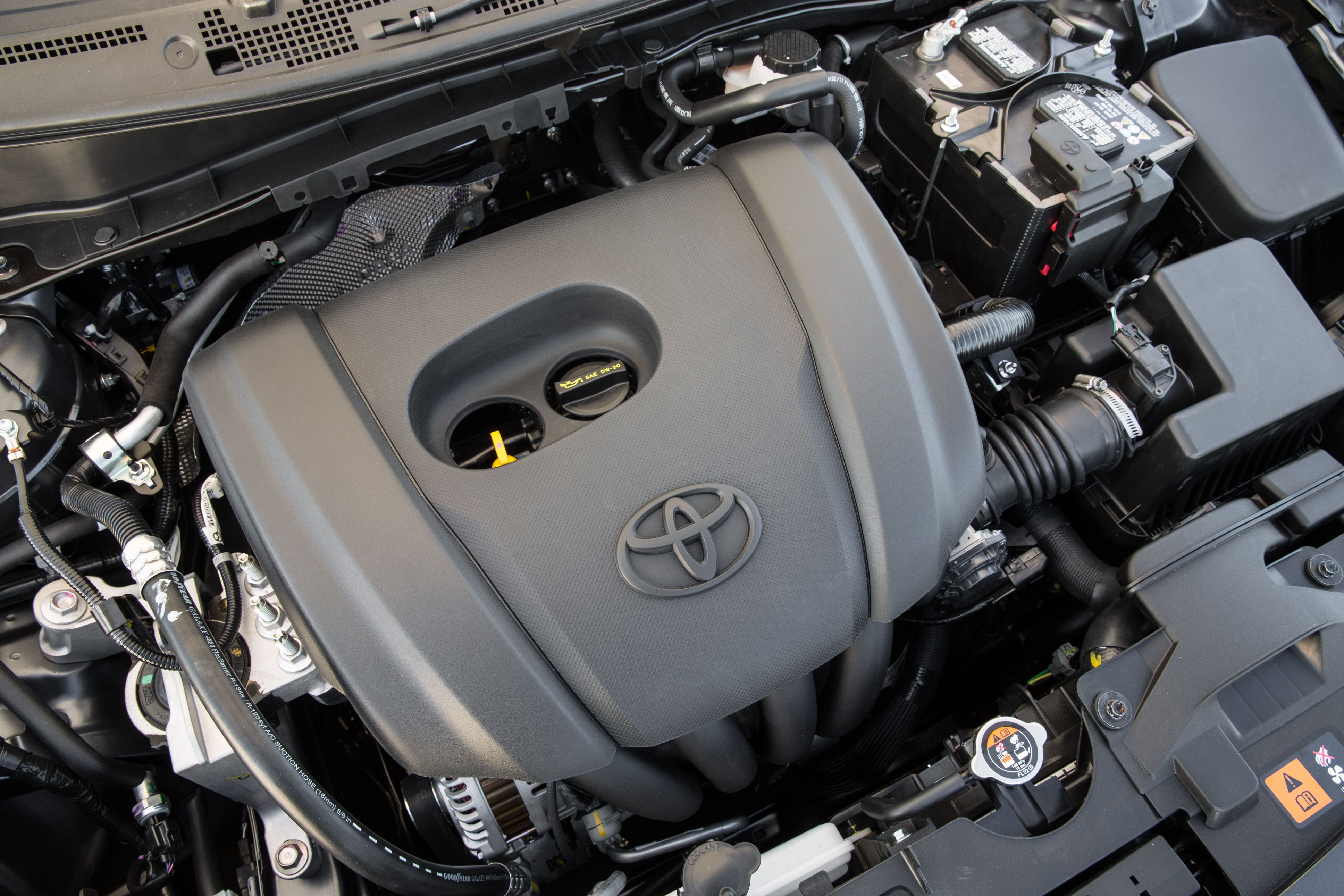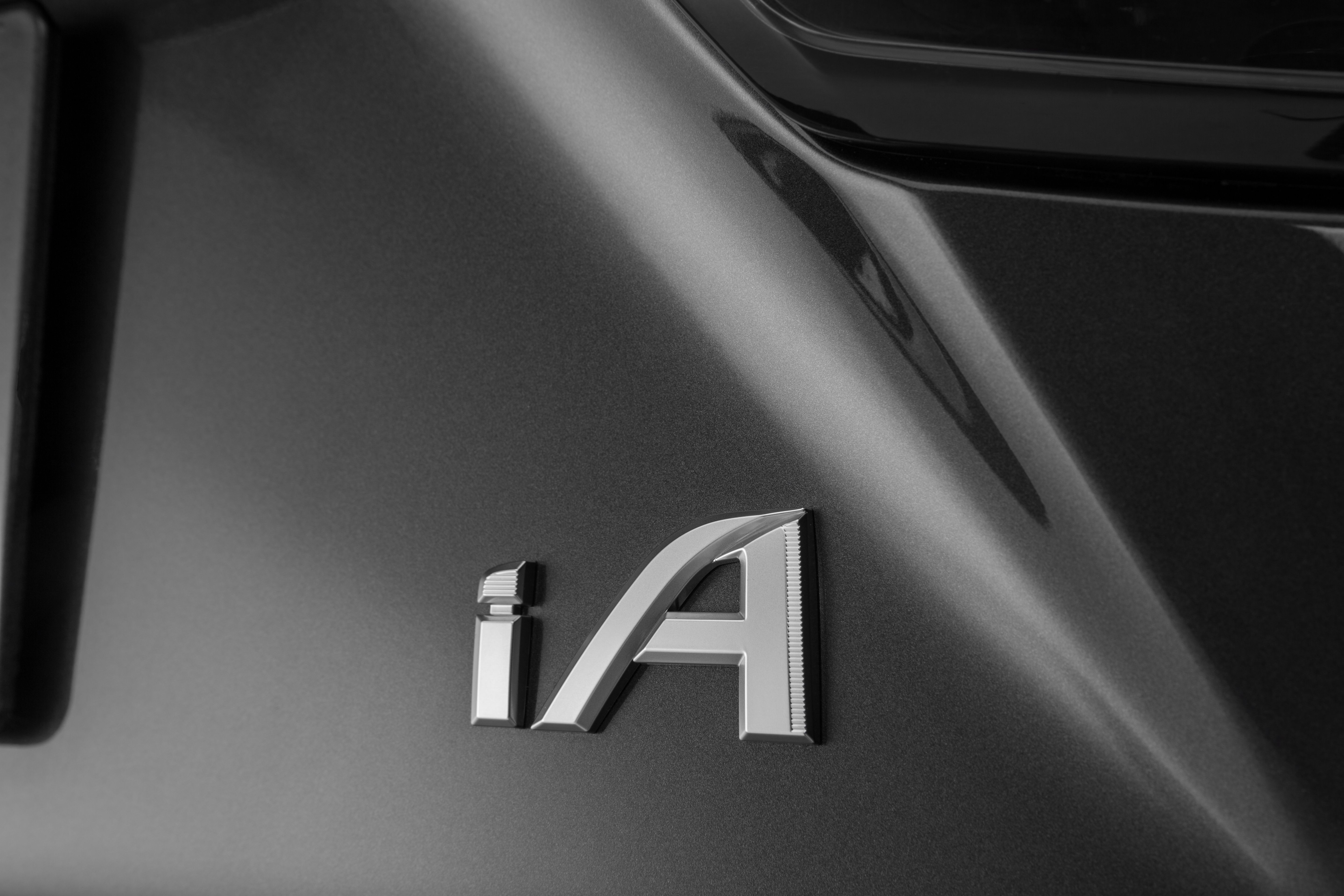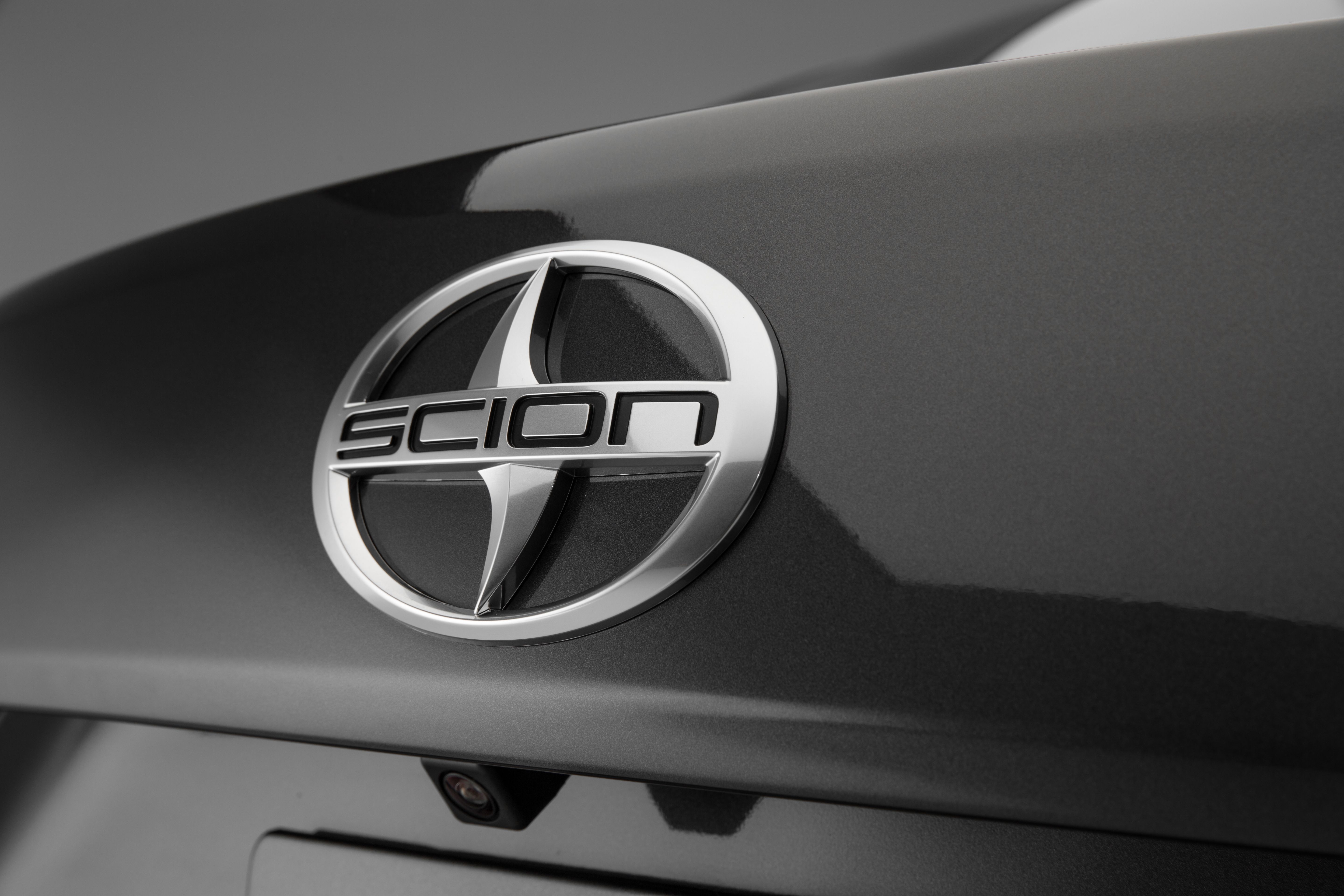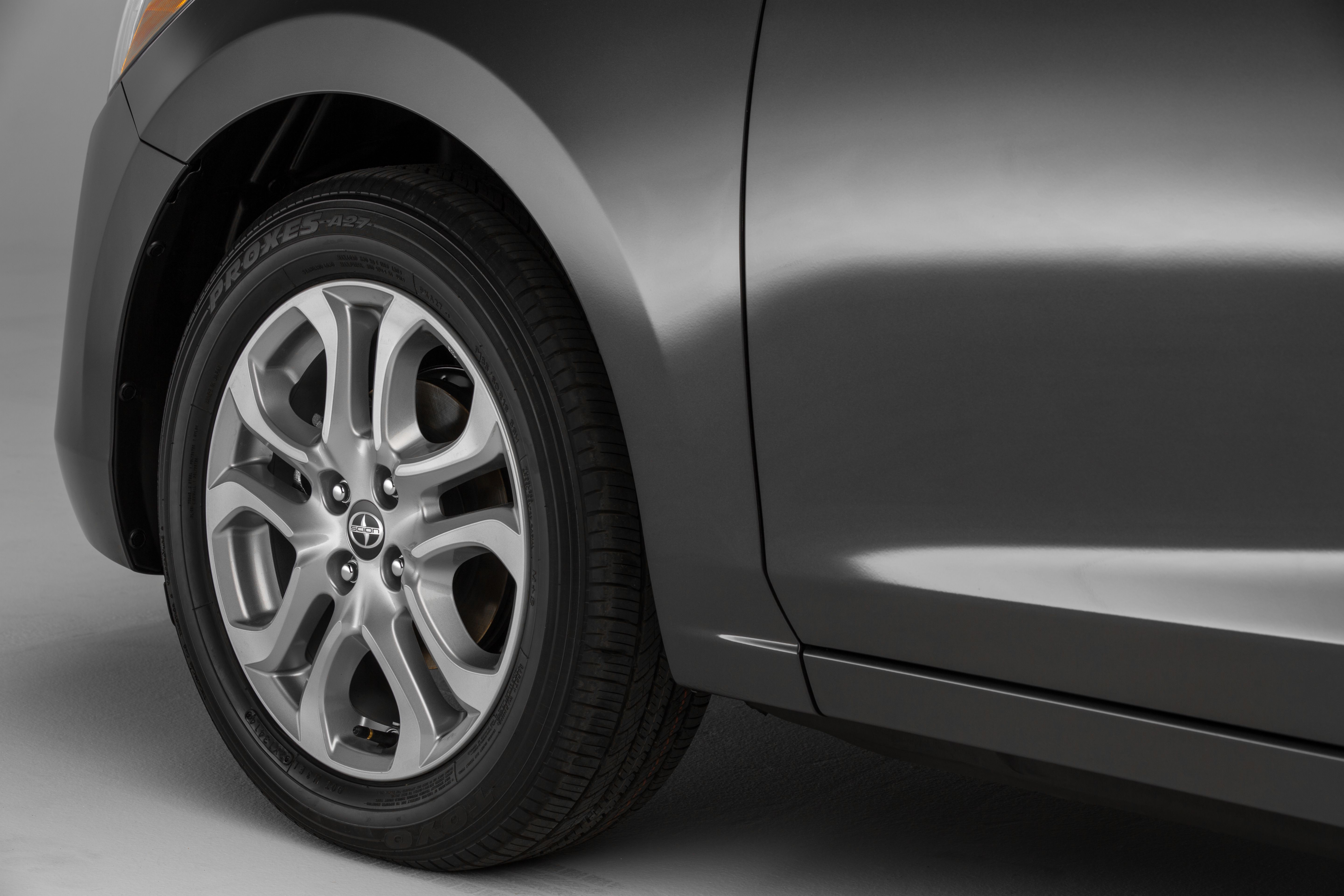Scion->ke79 is taking full advantage of Toyota’s->ke88 global reach and its relations with Mazda.->ke53 The iM->ke5033 hatchback->ke304 is Scion’s version of the Corolla->ke1039 hatch, or as it’s officially known, the Auris.->ke1984 What’s more, the iA->ke5092 sedan->ke142 is Scion’s version of the upcoming 2015 Mazda2 Sedan. Both the iM and iA benefit from their respective namesakes’ characteristics. For the iA, that means Mazda-like driving prowess and an efficient yet powerful SkyActiv powertrain.
Those benefits were clearly evident in the iA at Scion’s national launch for both cars. The twisty canyon roads in the eastern section of Malibu, California proved the perfected place to size up the Scion-ified Mazda.
Now the iA won’t directly compete with anything Mazda is offering because Mazda won’t bring is sedan version of the 2 – only the hatchback. Conversely, Scion won’t offer a hatchback version of the iA. In reality, the iM hatchback serves that role and keeps the two automakers from robbing sales from each other. It’s a nice partnership that should benefit both greatly.
Mazda’s benefit is Toyota’s half ownership of the Salamanca plant in Mexico where both the iA and Mazda2 are built. Cost sharing and platform stretching are good for the bottom line. But how does all this affect the iA as Scion’s first sedan? Are the cost-cutting measures a bad thing? Keep reading to find out.
Continue reading for the full driven review
scion-ia-first-drive
- Make: Array
- Model: scion-ia-first-drive
2016 Scion iA: First Drive
- Make: Array
- Model: 2016 Scion iA: First Drive
- Engine/Motor: inline-4
- Horsepower: 106 @ 6000
- Torque: 103 @ 4000
- Transmission: six-speed manual
- [do not use] Vehicle Model: Array
Exterior
Jumping right to the point – no. The iA takes full advantage of Mazda’s ability to engineer good-handling vehicles that are free of excess fat and powered by class-leading powertrains. The iA isn’t all Mazda, however. It’s on the exterior that Scion had its way with the car, designing different front and rear clips that differentiate the car between the two automakers.
To be completely blunt, the iA’s front is not pretty. Original and different, yes, but I don’t expect the sedan to win any design awards. That said, the car does look better in the metal than the photos lead the eye to believe. Sharp accent lines flank the large grille like laugh lines and continue onto the hood and over the headlights.
Walk around the side of the iA and its Mazda heritage is clearly visible. The character lines that swoop atop each quarter panel are seen on things like the Mazda3 and 6 sedans, and even the new 2016 Mazda CX3 crossover.->ke288 The rear of the iA still carries some Mazda flair, though to a somewhat lesser extent.
Designers gave the sedan’s rump a more respectable look than its front. The taillights are covered with a clear housing and the character lines that run long the rear quarter panels meet just below the trunk’s license-plate cutout. In typical Mazda fashion, the iA lacks any spoilers or ground effects, unlike its iM brother.
Matching Scion’s M.O. of content over cost, the iA comes fitted with alloy wheels as standard. The double-spoked, 16-inch wheels look good despite their smallish size. Seven color options are offered. They include Frost, Sterling, Graphite, Stealth, Sapphire, Abyss and Pulse. That basically translates respectively to white, grey, dark grey, black, light blue, dark blue, and red.
Long story short, you should see the iA in person before you make a judgment call on its looks.
Interior
Mazda’s work on the interior is largely left alone. That’s a great thing, as the 2’s interior offers fantastic fit and finish with a compelling design that looks modern without being controversial. The dashboard is broken up into thirds: the driver is treated to a compact instrument cluster and driving controls, the center section houses the main controls and the infotainment system, and the passenger side is a smooth expanse of soft-touch, low-sheen plastic with French stitching accents. A classy chrome accent line runs nearly two-thirds of the dash, giving the small cabin a wider visual feel.
The center console houses three HVAC control knobs, two USB ports, and a 12-volt charging plug. The HVAC controls work effortlessly and can be manipulated without taking your eyes off the road. Just behind the center stack is the gear shifter for either a six-speed manual or six-speed automatic transmission. Both shifters have a leather boot for an upscale look.
Farther behind are the main controls for the non-touchscreen infotainment system. The rotary and push knob takes after BMW’s->ke178 iDrive, but works much better. Hard key buttons around the knob offer shortcuts to menu functions. An Audi-like volume knob rests behind the main control knob for easy adjustments. The three-spoke steering wheel has redundant radio controls, along with Bluetooth buttons and cruise controls.
The steering wheel’s center cap is about the only noticeable difference between the Scion iA and Mazda2’s dash. Even the gauges remain the same. Standing front and center is a large speedometer that counts by 20s flanked by two small digital screens on either side. To the left is a tachometer with mileage information and to the right is the fuel level and mpg readout.
Back-seat riders will enjoy decent legroom for this segment, though spreading out or crossing legs isn’t a very viable option. Two adults can fit comfortably over medium distances. Three across is best left to the kids. Truck space is surprising, with generous room for a week’s worth of luggage. Be careful closing the trunk lid, though, as its hoop-style hinges will crush whatever lies beneath them.
For safety, the iA offers six standard airbags and a low-speed pre-collision safety system. The system employs a forward-facing camera that monitors the road ahead. Between two and 18 mph, the system will audibly warn drivers if they haven’t begun to slow when approaching a car. If the driver still fails to slow, the iM will automatically begin to apply the brakes. Thankfully I didn’t have to test this feature first-hand during my drive.
Powertrain
Here Scion again benefits from Mazda’s engineering. The iA is powered by the 1.5-liter four-cylinder with Skyactiv technology. For its tour of duty in the Scion, the four-pot gets that designation wiped off its engine cover and replaced with a Toyota symbol.
The engine makes 106 horsepower and 103 pound-feet of torque, with respectable fuel economy, thanks to direct fuel injection, a high 12.0:1 compression ratio, a unique piston head design, and variable valve timing.
While those output numbers aren’t excessive by anyone’s standards, the iA makes do thanks to a light, 2,385-pound curb weight. What’s more, the optional automatic transmission is of the conventional type, employing actual gears verses the modern trend of a CVT’s belt drive.
That helps usher in the sensation of speed where a CVT gives a smoother feel. For those who enjoy rowing their own, the iA comes standard with a six-speed manual.
The payoff of all this tech comes at the gas pump. The EPA rates the iA at 31 mpg city, 41 mpg highway, and 35 mpg combined with the manual transmission and 33 mpg city, 42 mpg highway, and 37 mpg combined for the automatic. Those are almost hybrid numbers – and all on regular unleaded.
Driving Impressions
Perhaps the greatest aspect of Scion’s relationship and product sharing with Mazda is the inherent rub-off of Mazda’s renowned driving dynamics. Now there is some speculation that the Mazda2’s suspension got minor downgrades before being transferred over to the iA, but that remains unconfirmed and somewhat unlikely. As for my impressions of the car, the iA did everything I asked it to without complaint.
The curvy roads of the Santa Monica Mountains proved as good a test as any, with long sweepers, changing elevation, long straights, and switchbacks. The car digs in nicely on hard turns and remains relatively flat.
The skinny 185-series tires give up long before the MacPherson front and Torsion Beam rear suspensions. Steering is also direct with no on-center slack. Once loaded up, the wheel becomes more communicative, transmitting a surprising amount of road feel without being twitchy.
The six-speed auto is good at keeping the engine in its power band during spirited driving, thanks to the standard sport mode. Moderately low revs at highway speeds keep fuel consumption in check. Sadly, I didn’t have a swing at the six-speed manual thanks to a limited number of test vehicles and an abundance of overeager journalists wanting to do the three-pedal dance.
Overall, the iA is a surprisingly fun car to drive. Its power levels might not seem like much on paper, but seat-of-the-pants driving says its enough. A swing and a hit, Scion
Price
Perhaps the best part about the iA is its price. Stick with the standard six-speed manual, and the starting price is $15,700. Check the box for the automatic, and the price slides up to $16,800. That’s not a bad price at all – especially considering all the functions and features that come with the car.
Like always, Scion offers its cars in “mono-spec” trim, meaning each car has all the same features and the customer only has to choose between exterior color and transmission. Of course, Scion offers dealer accessories for personalization, but as it sits, each iA that rolls off the assembly line comes with all the same equipment save for the transmission choice.
Like I mentioned in the iM review, Scion is also working to make online car buying a much simpler task. The automaker is convinced Millennials enjoy shopping from their couch verses sitting in a showroom cubical. Perhaps Scion is right. More to the point, Scion continues to offer its “no-haggle” pricing, meaning the price marked on the window sticker is the price you pay. No finance degree or negotiation skills required.
Conclusion
The iA, along with its fraternal twin, the iM, are pouring life back into the Scion brand. The iA marks Scion’s first stab at a sedan in the company’s short 12-year lifespan, and its first vehicle with a more conventional design. It will be interesting to see how this anti-quirkiness plays out in Scion’s sales reports.
My guess is the iA will be a runaway success, more so than any of its models in recent history. High school kids, college students, and young professions should find its laundry list of features, fuel economy, and fit and finish very appealing against its competitors.
The points in the iA’s favor increase considering its competition is far pricier when loaded with the same options the iA comes standard with. That, combined with the ease of online shopping and no-haggle pricing, should give the Scion an advantage in the marketplace.
Both the iA and iM will begin arriving at showrooms starting in September 2015.

